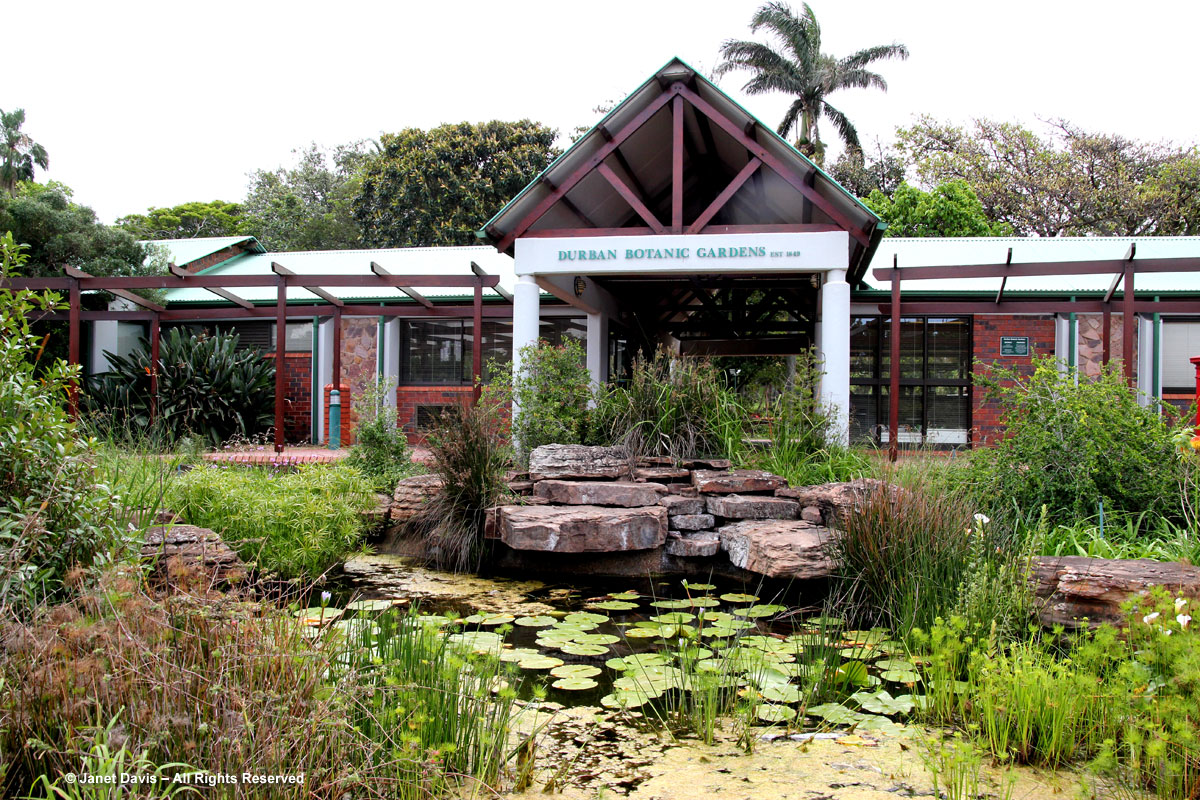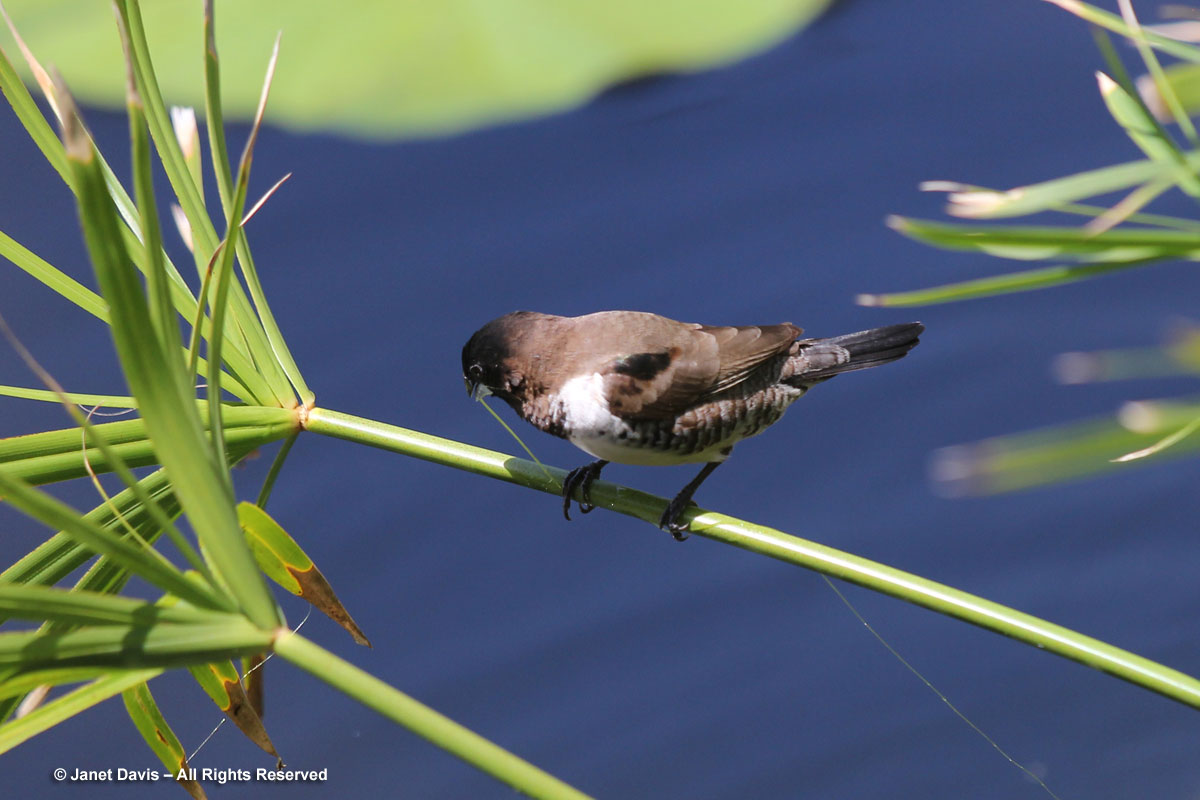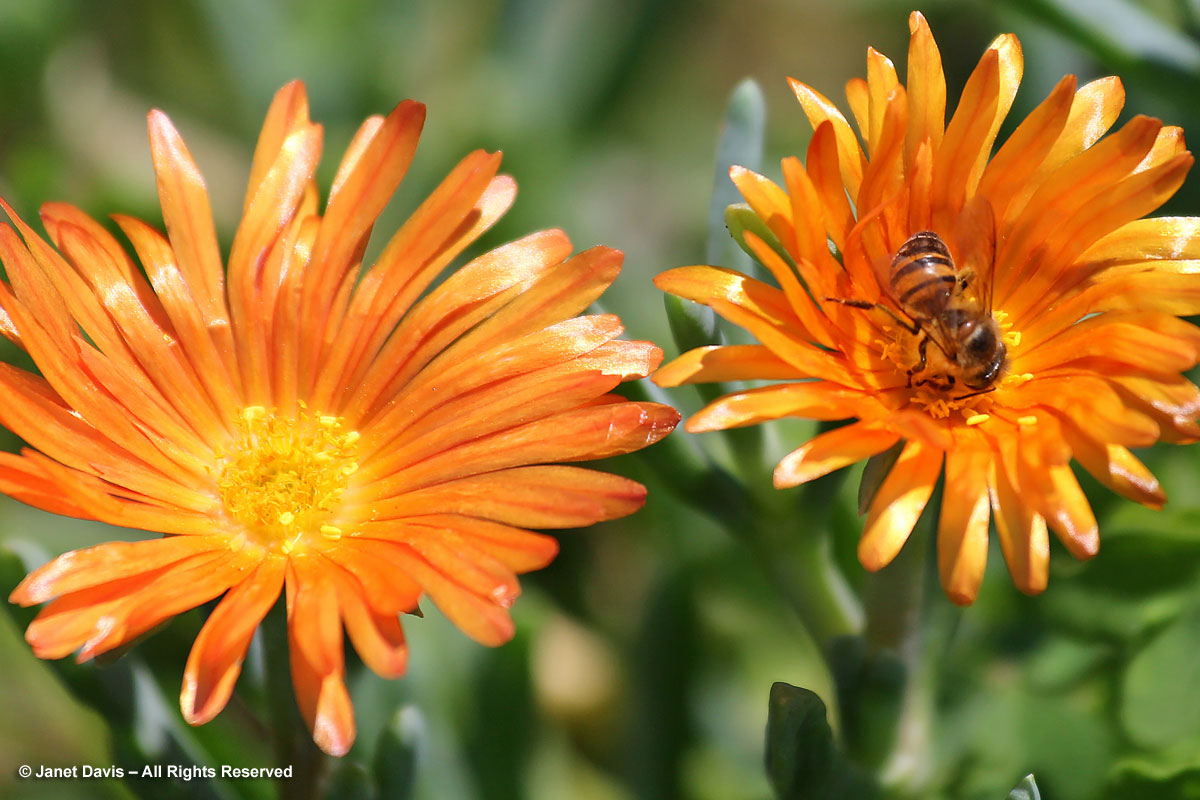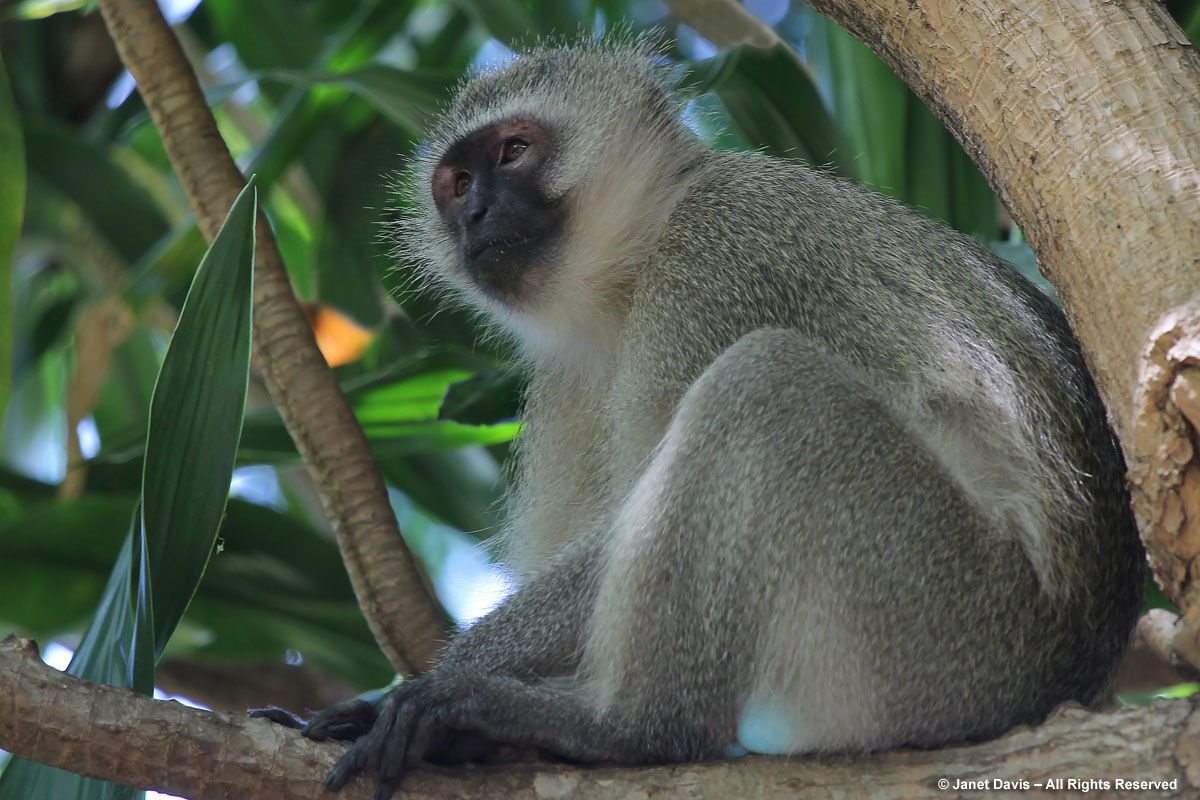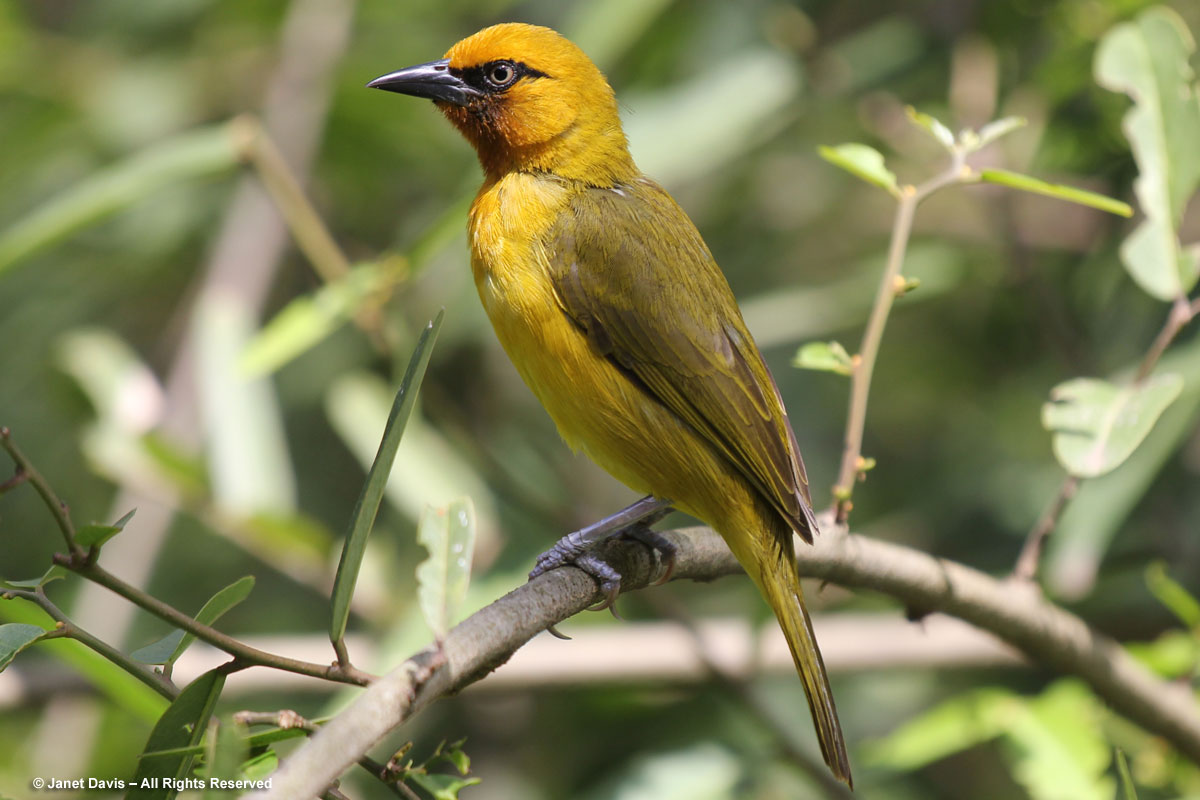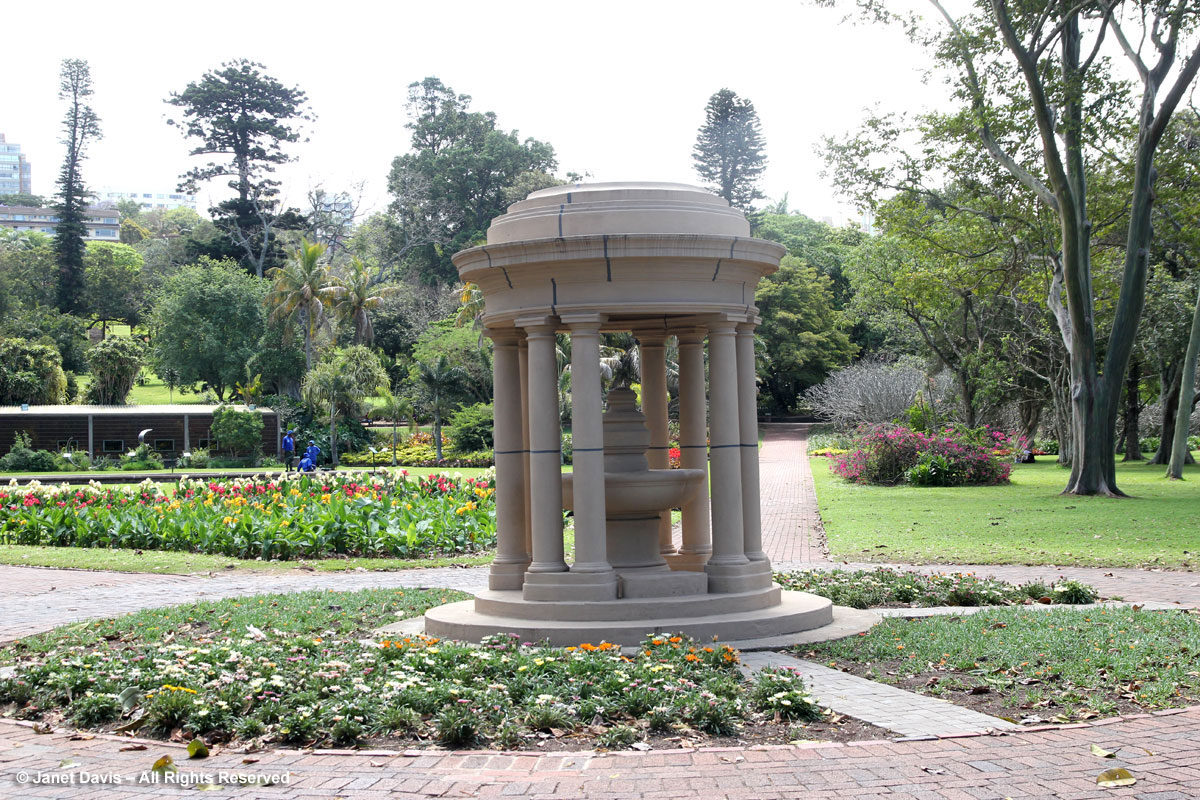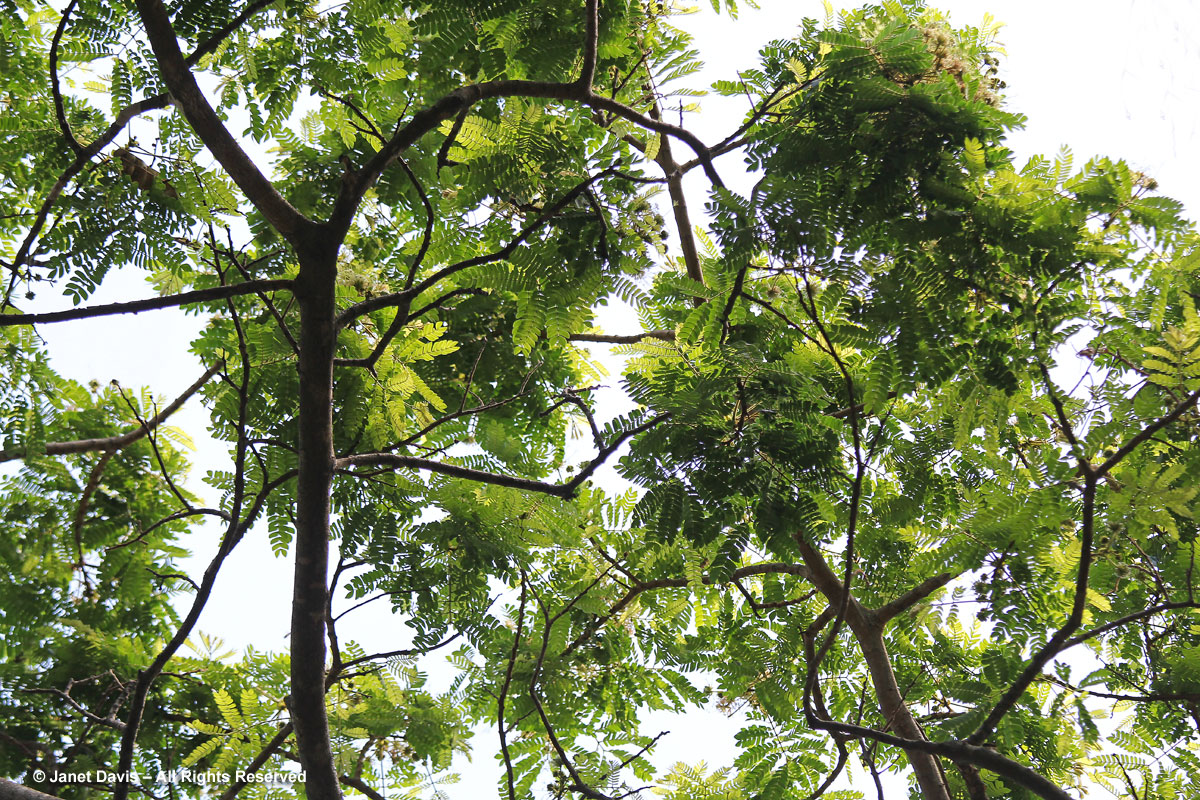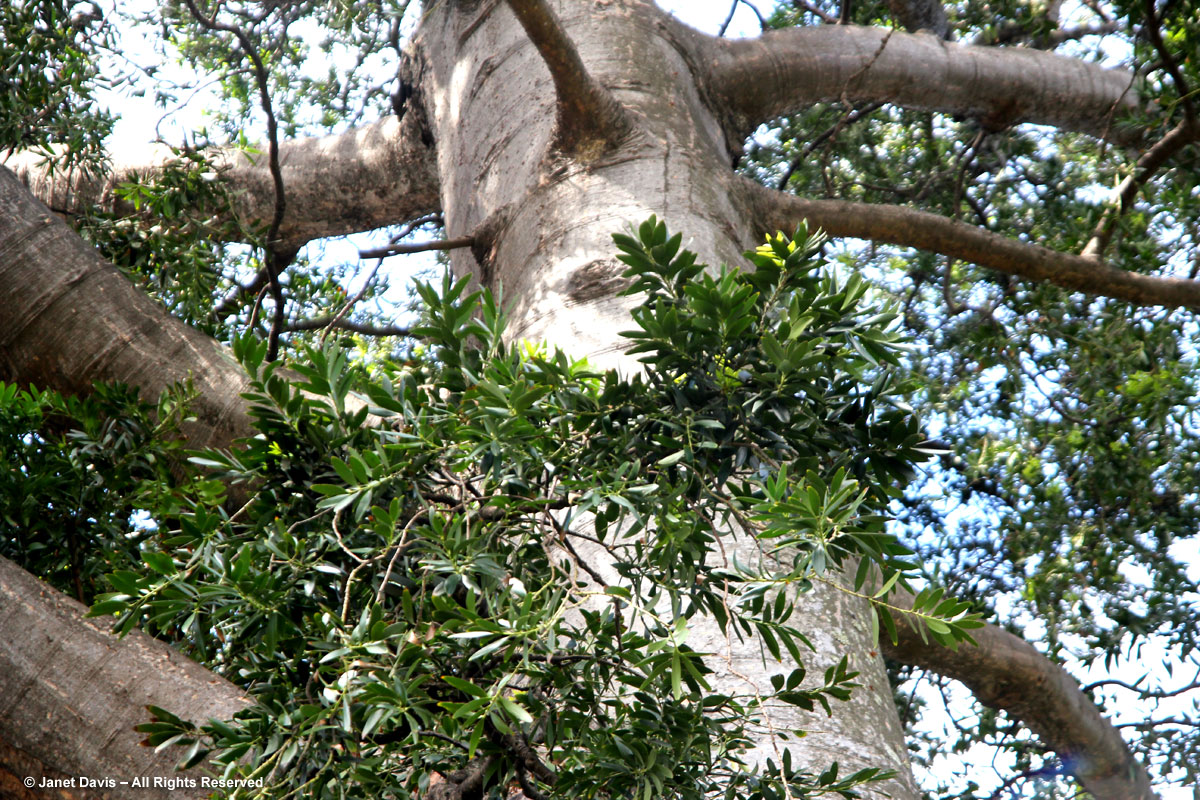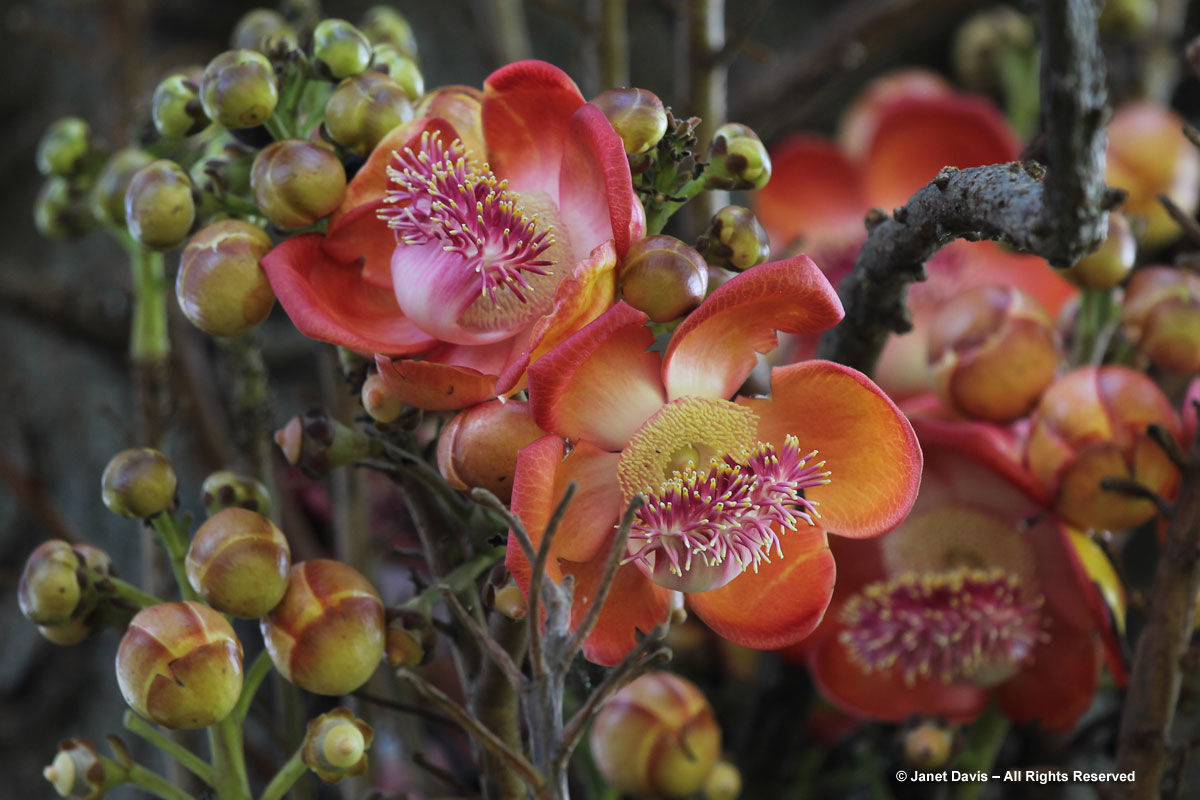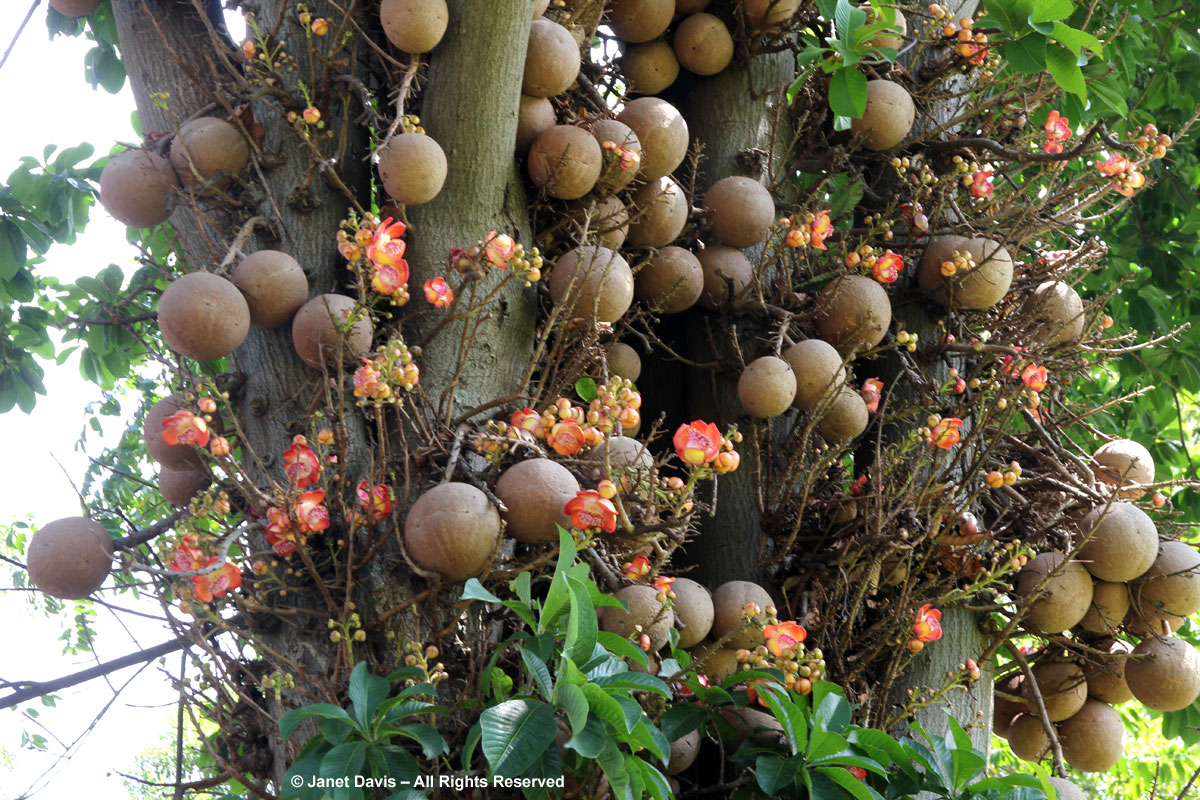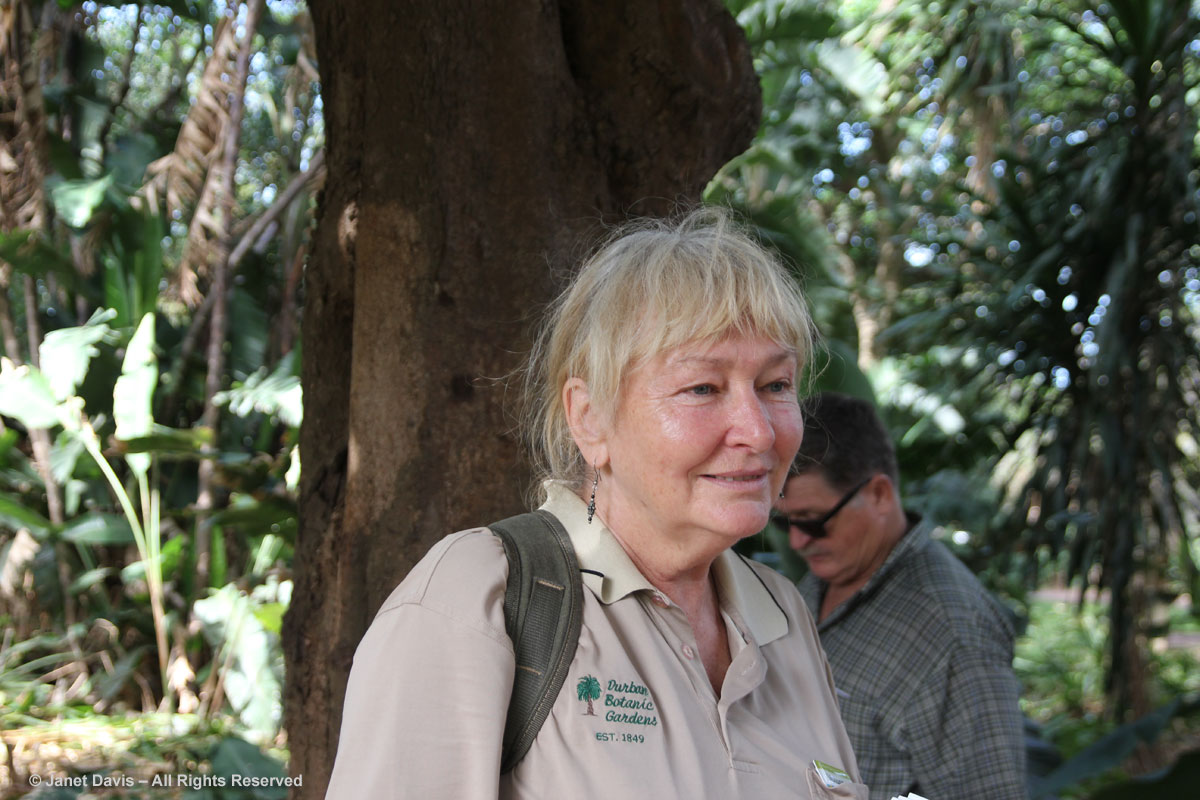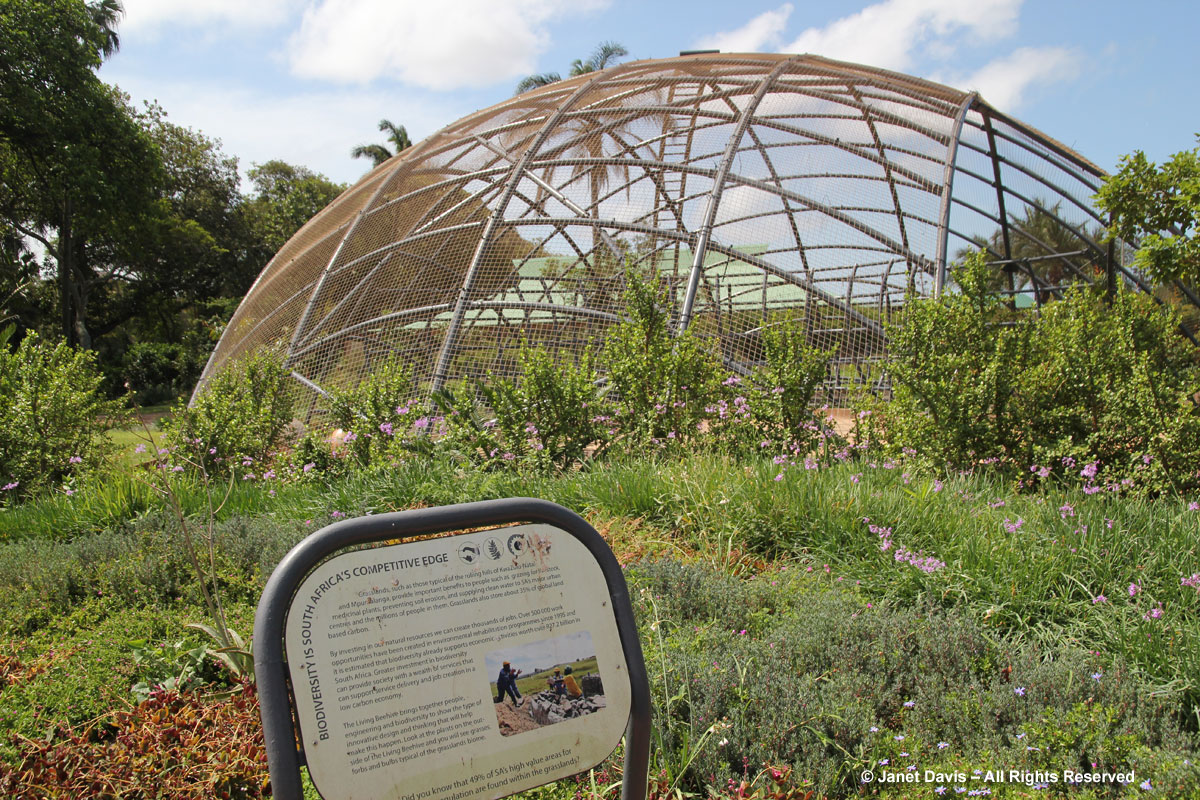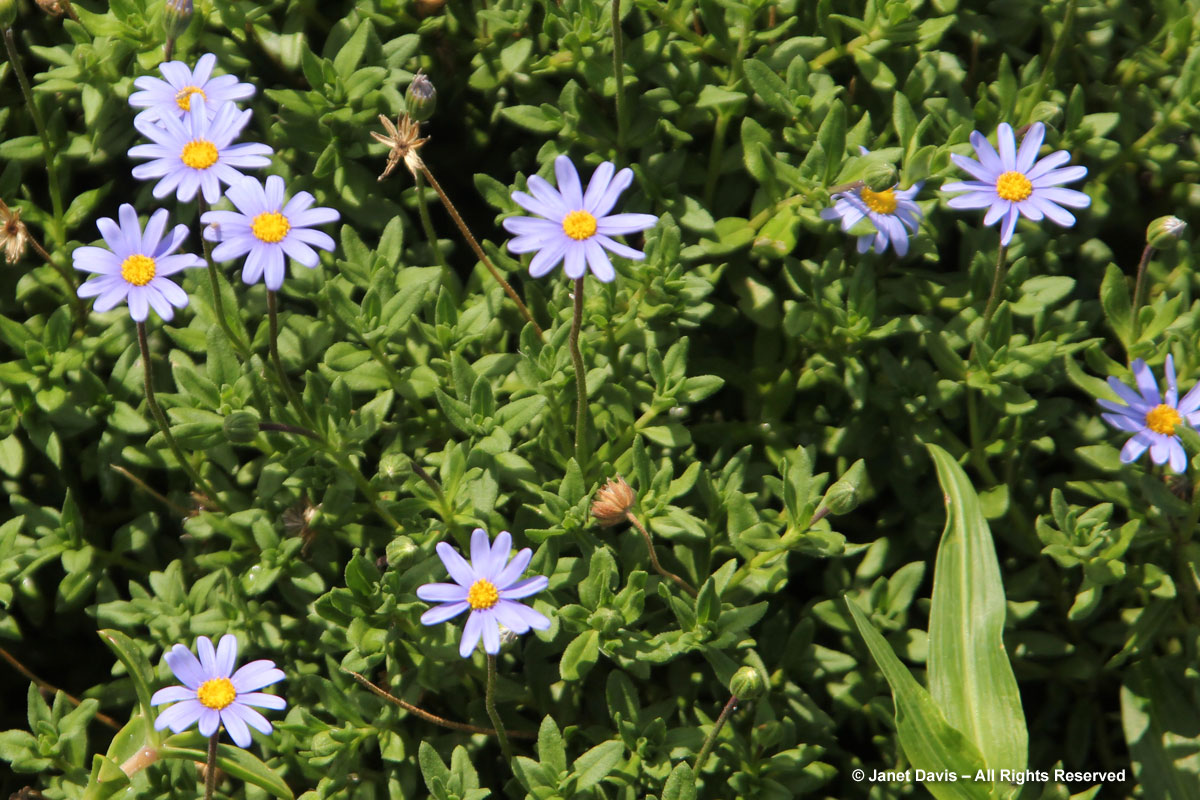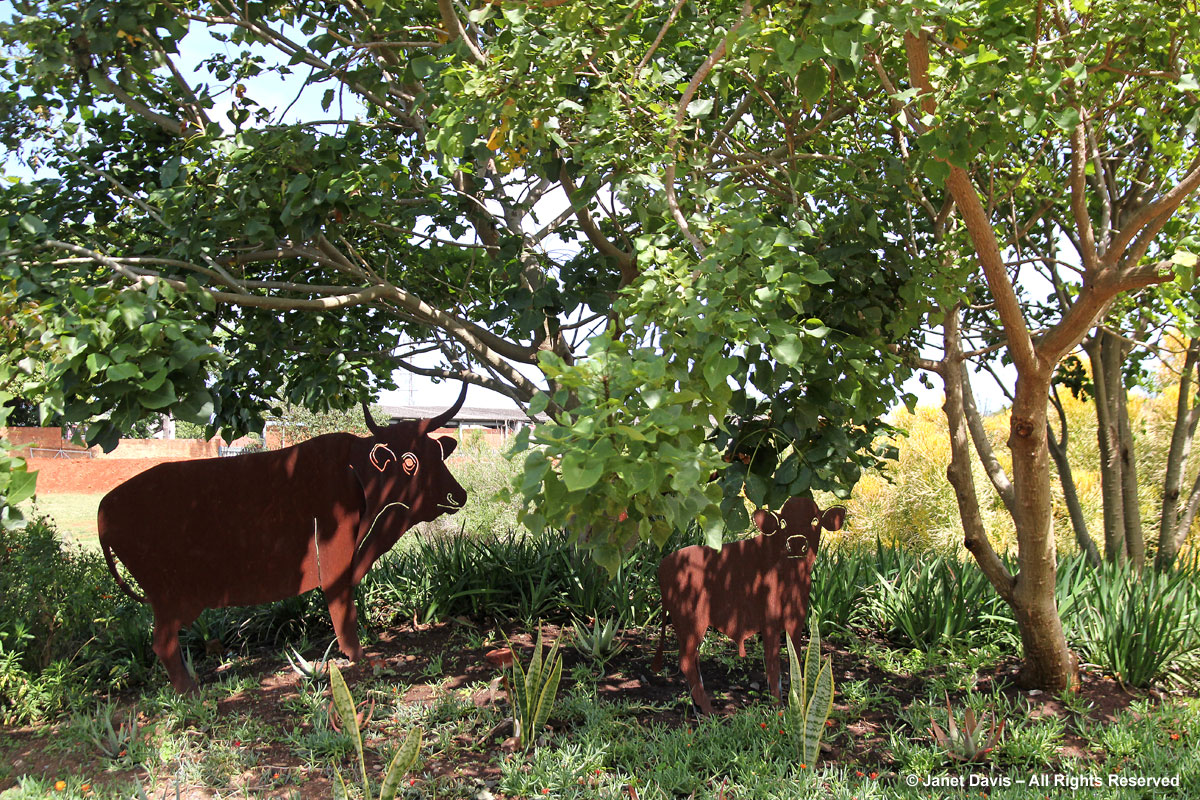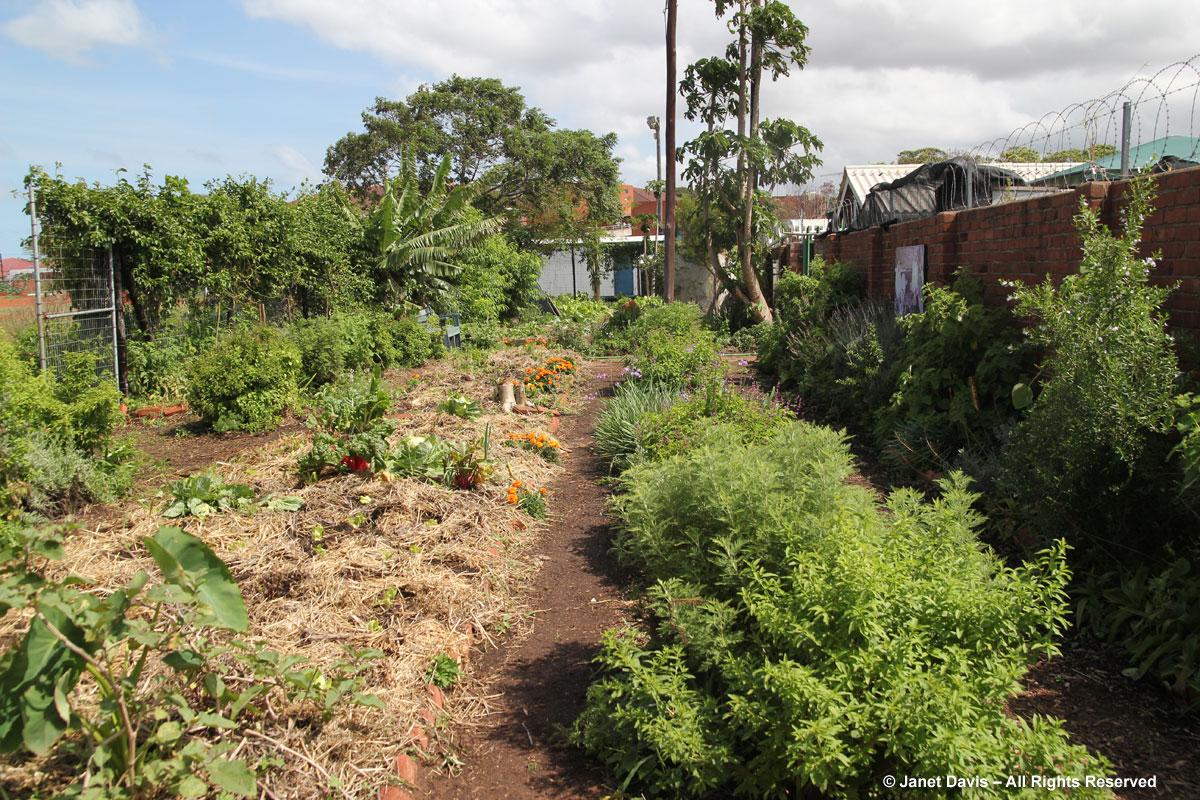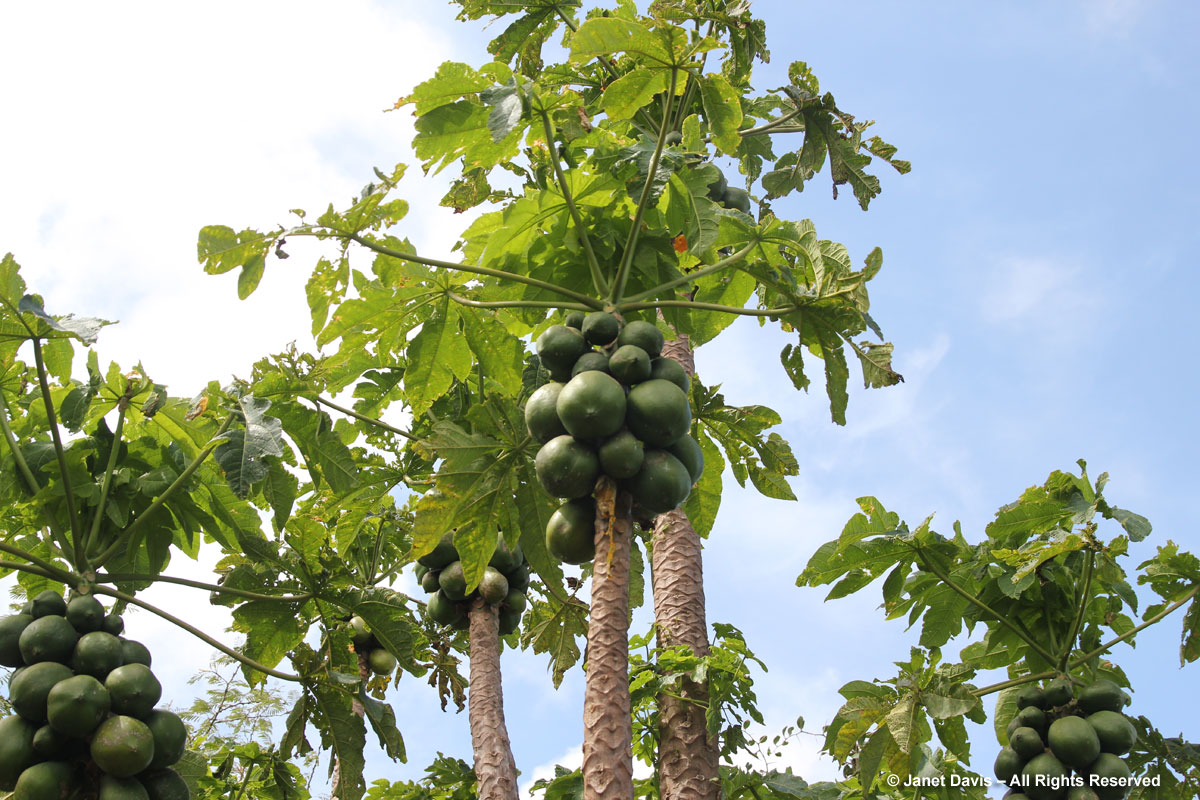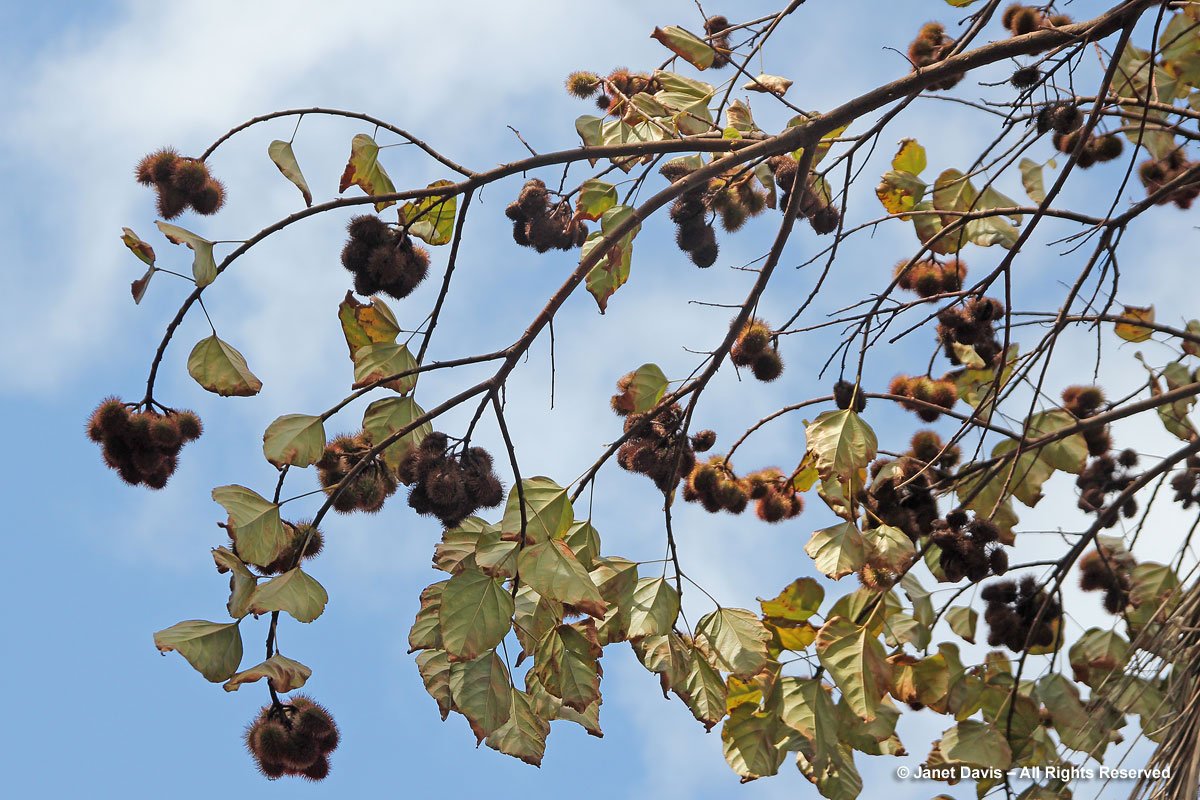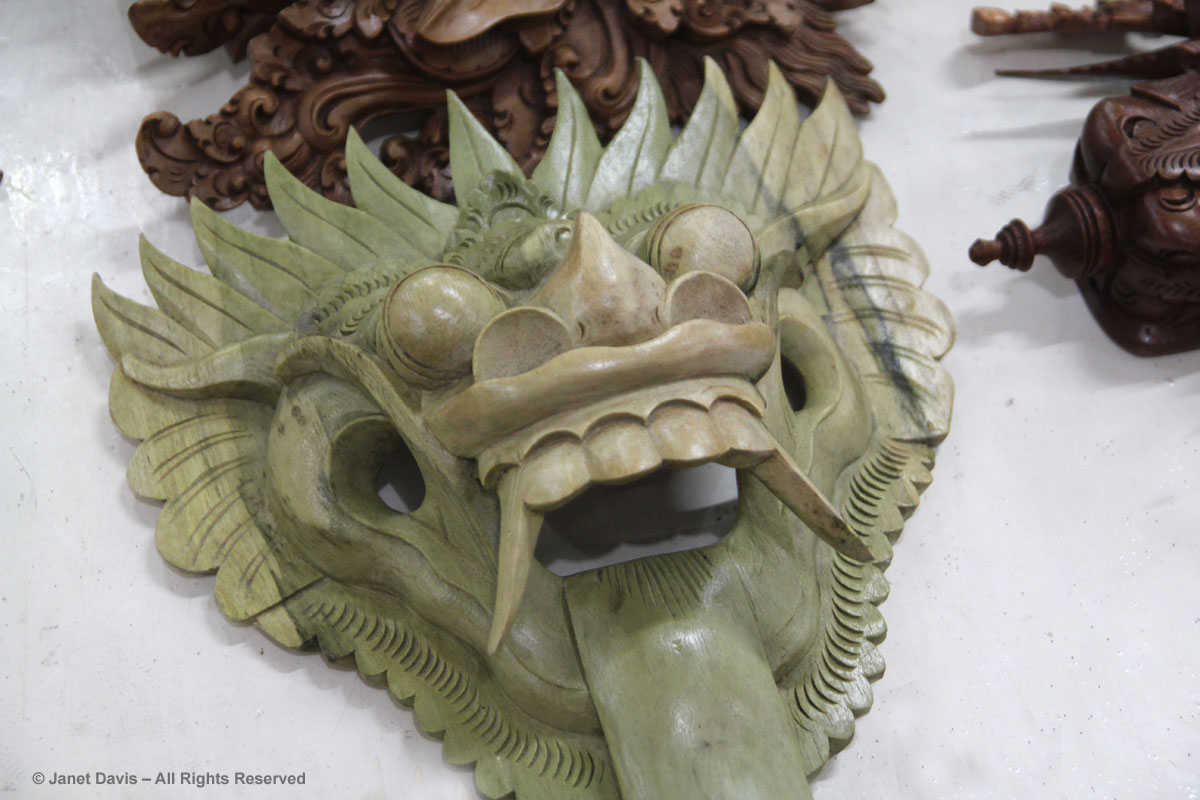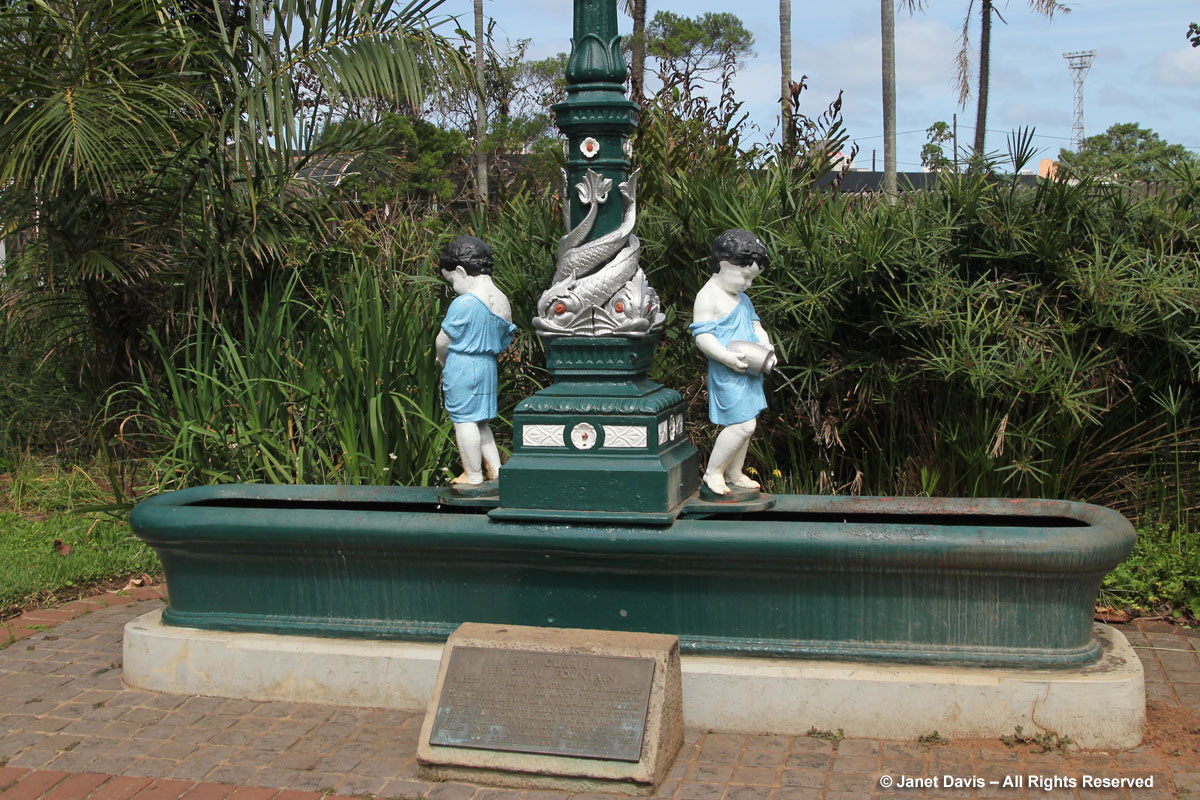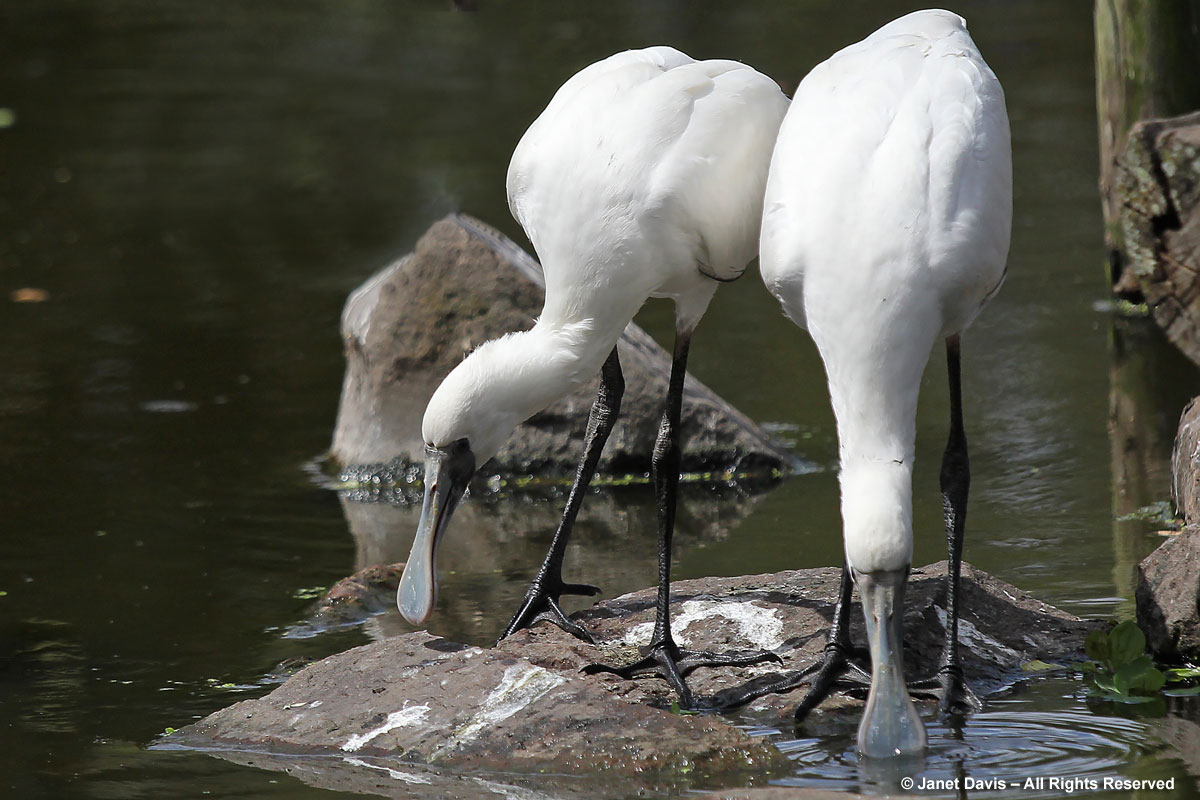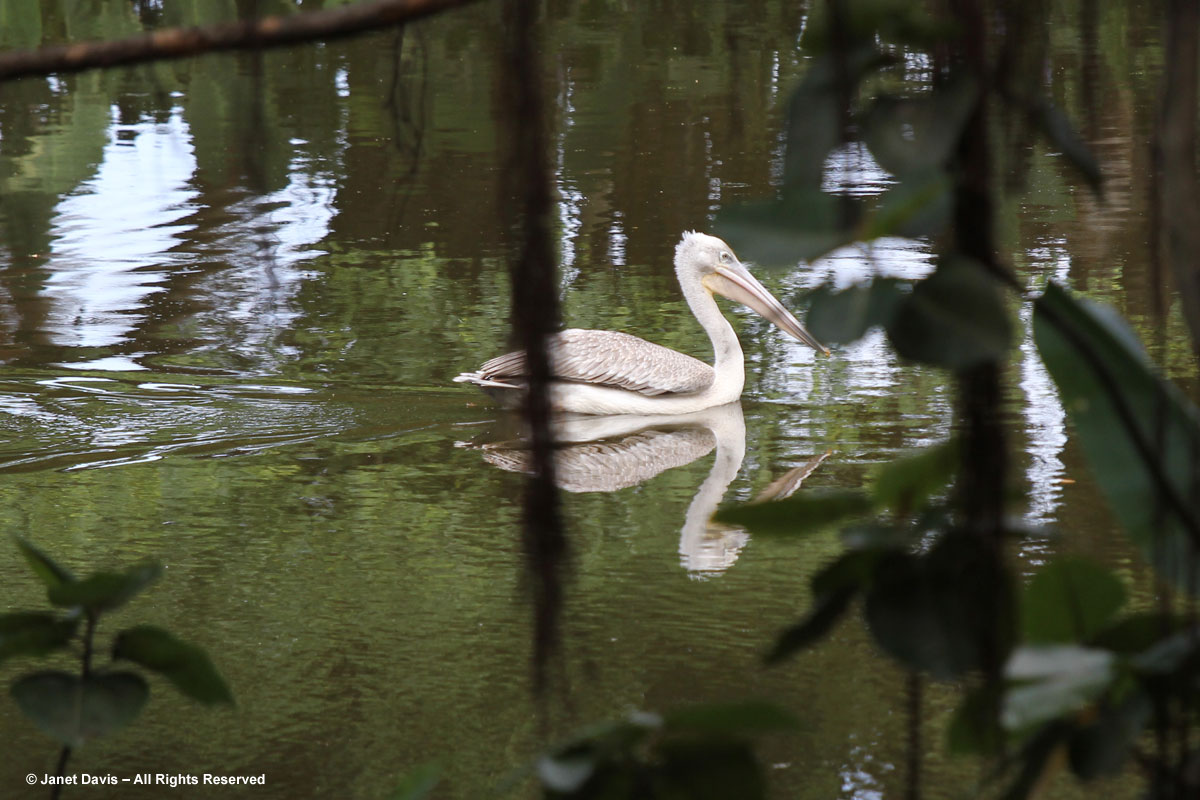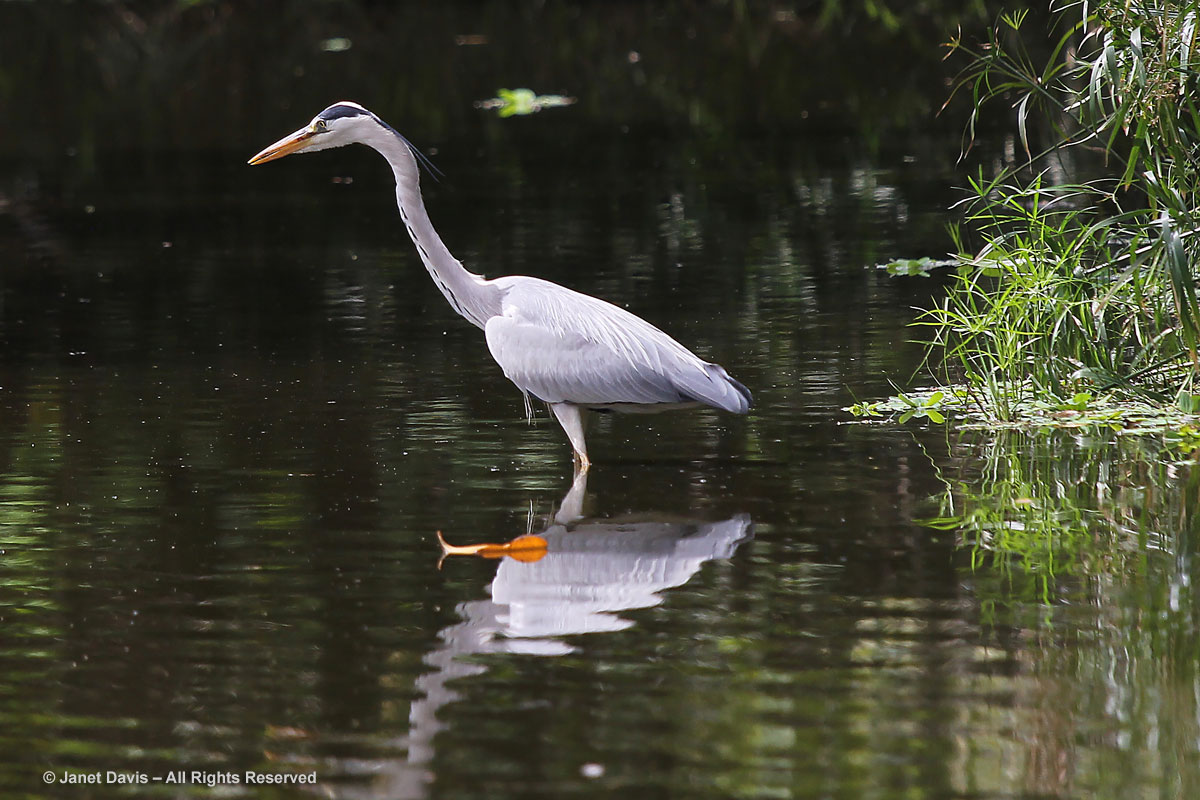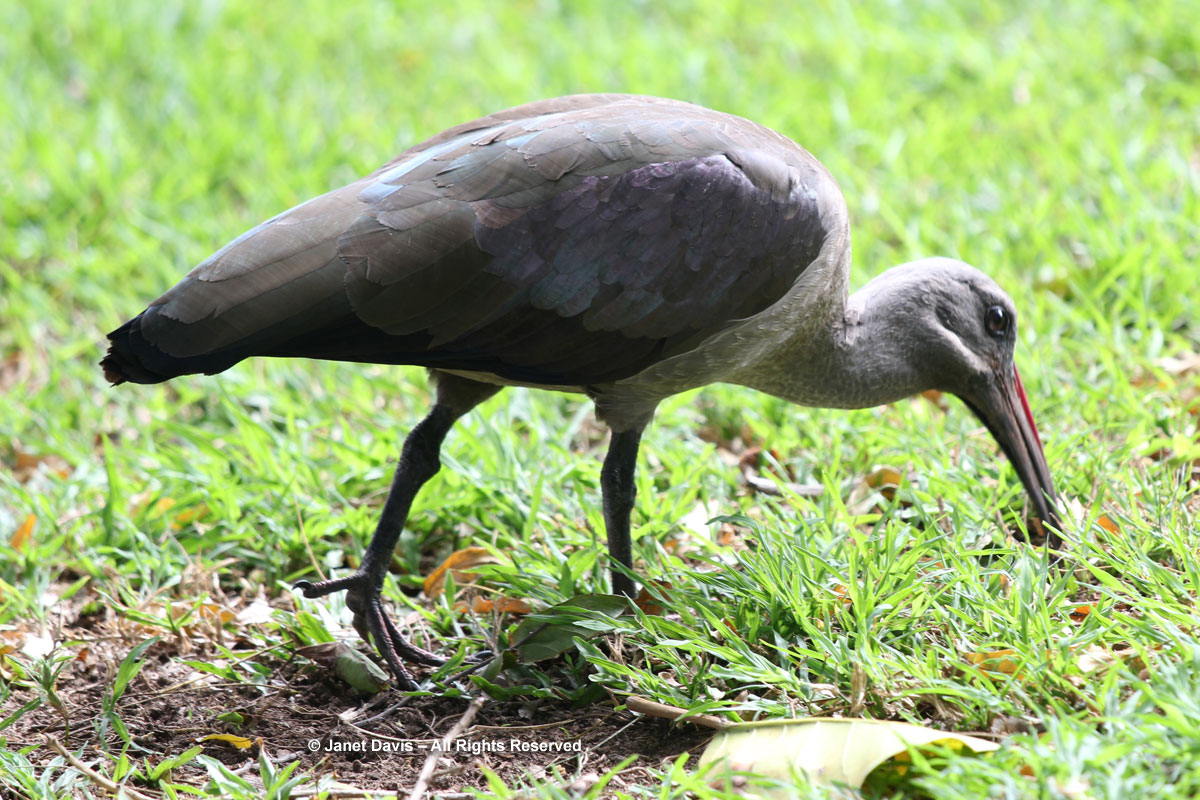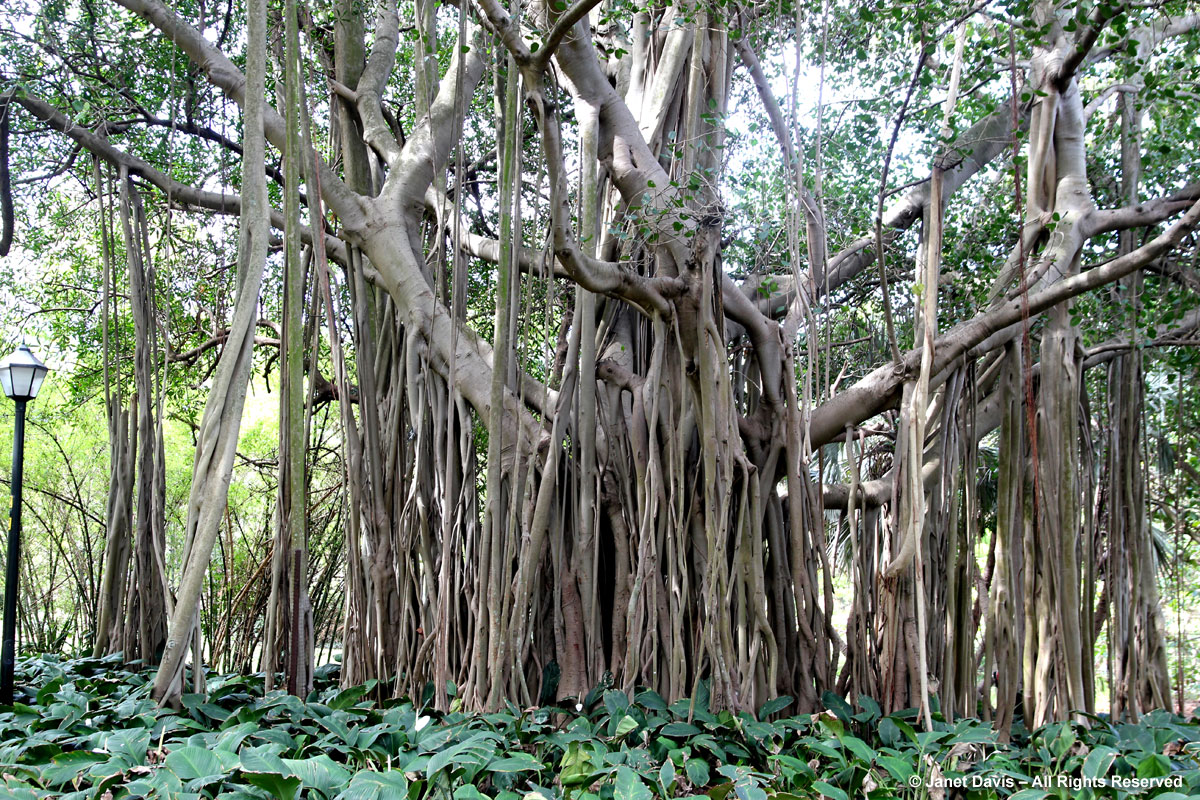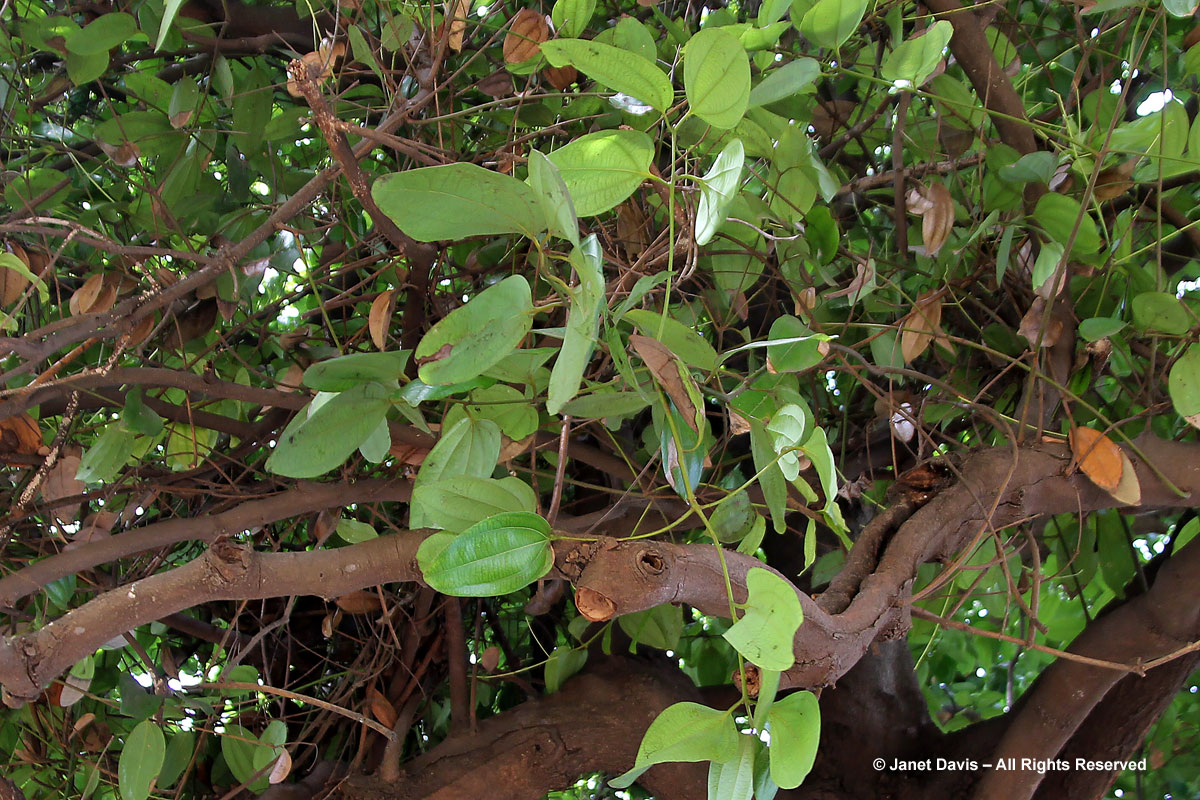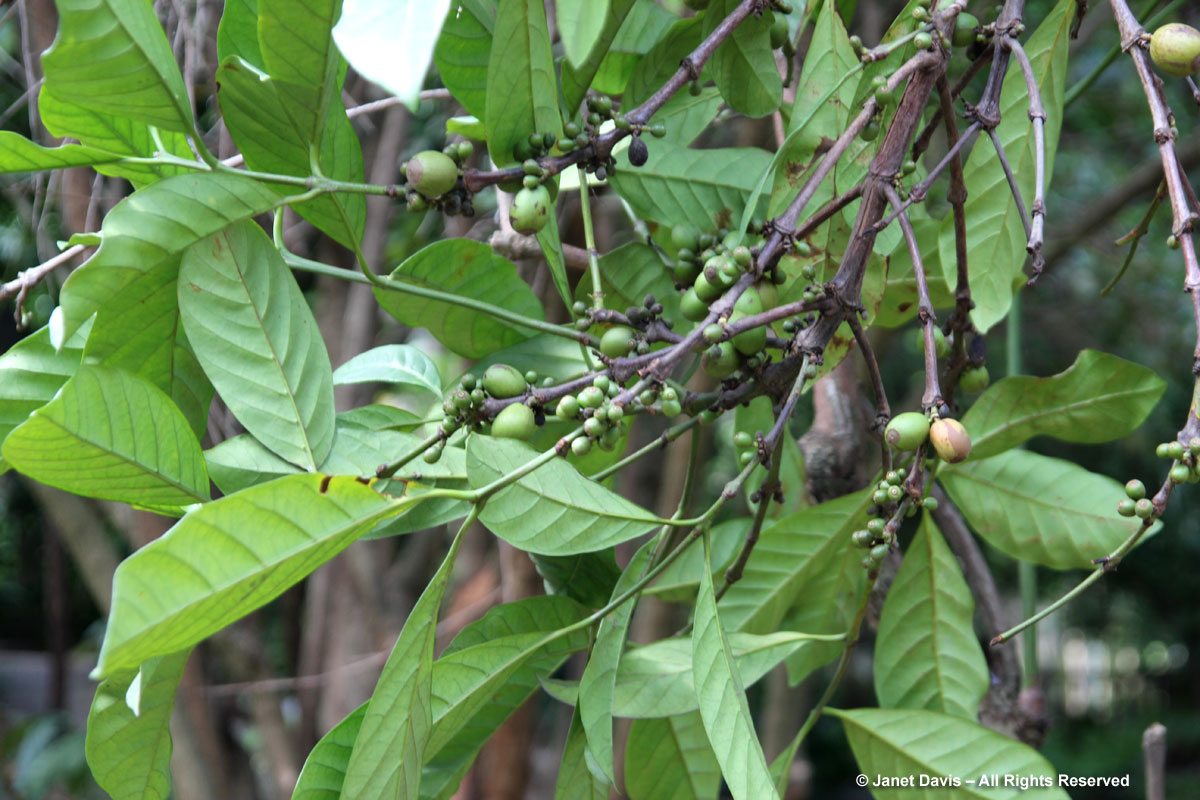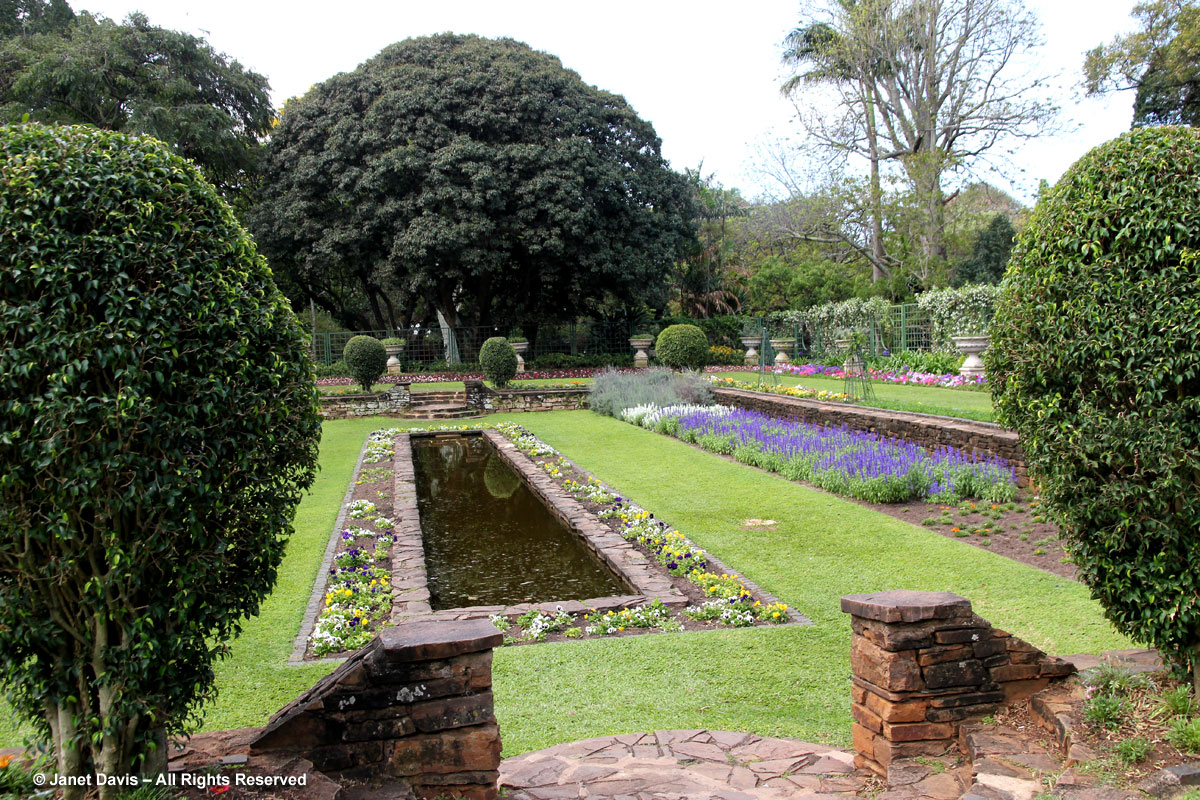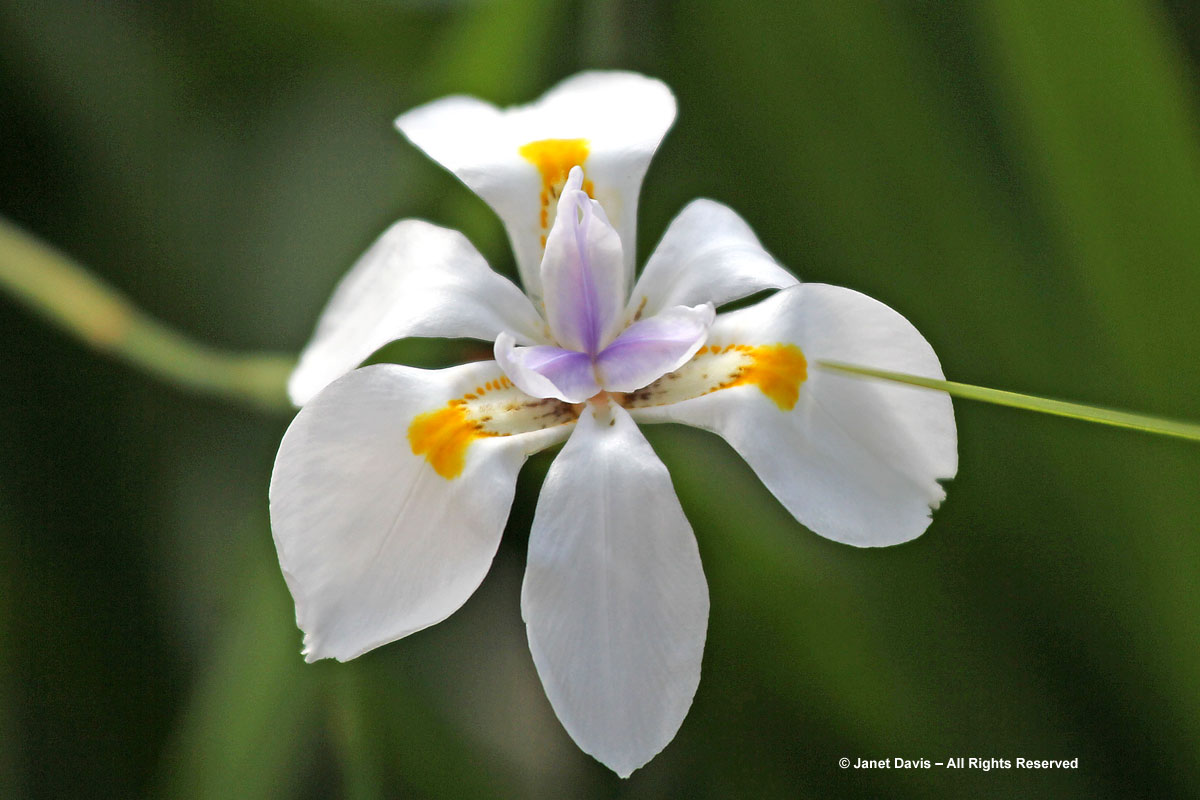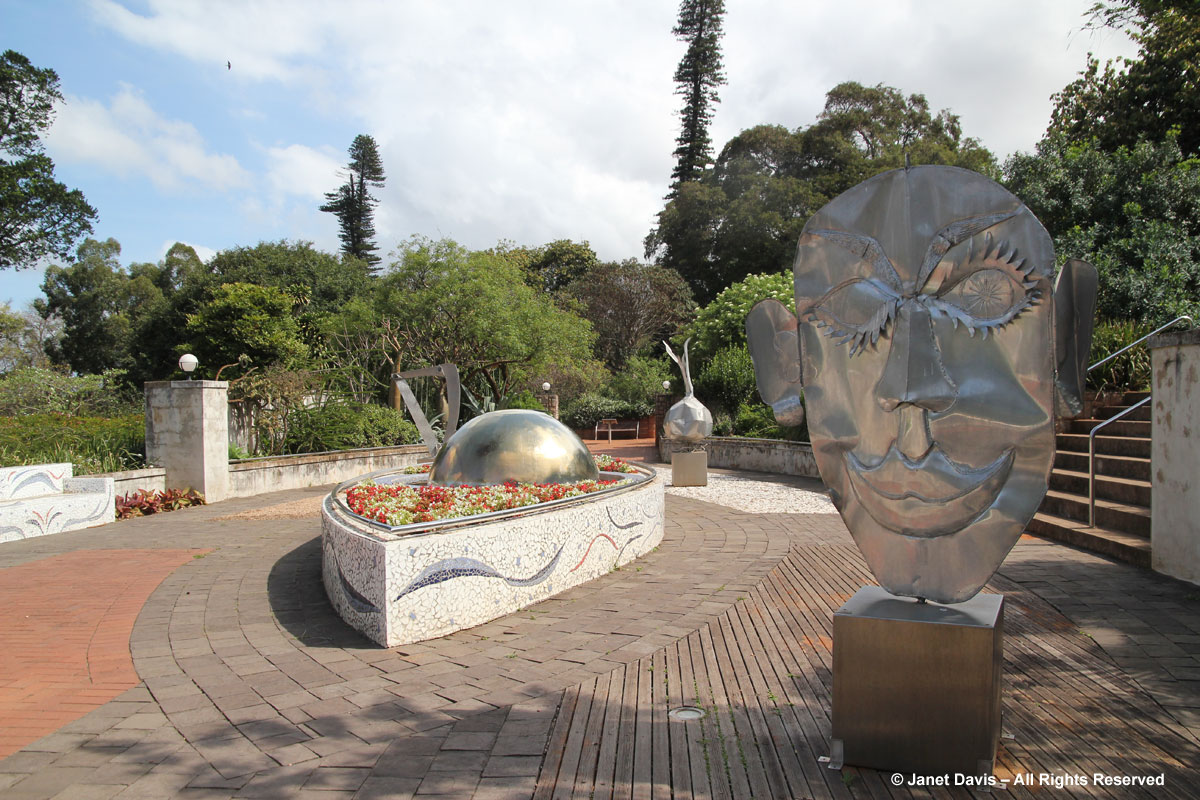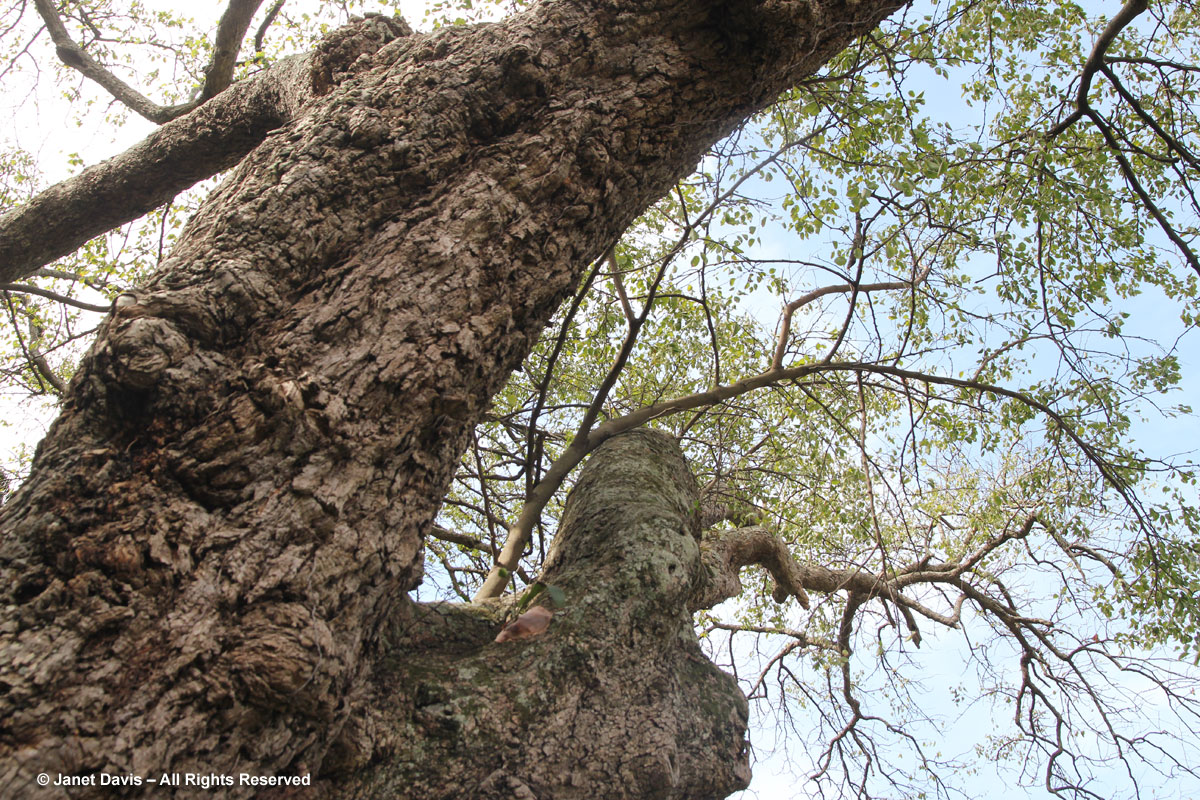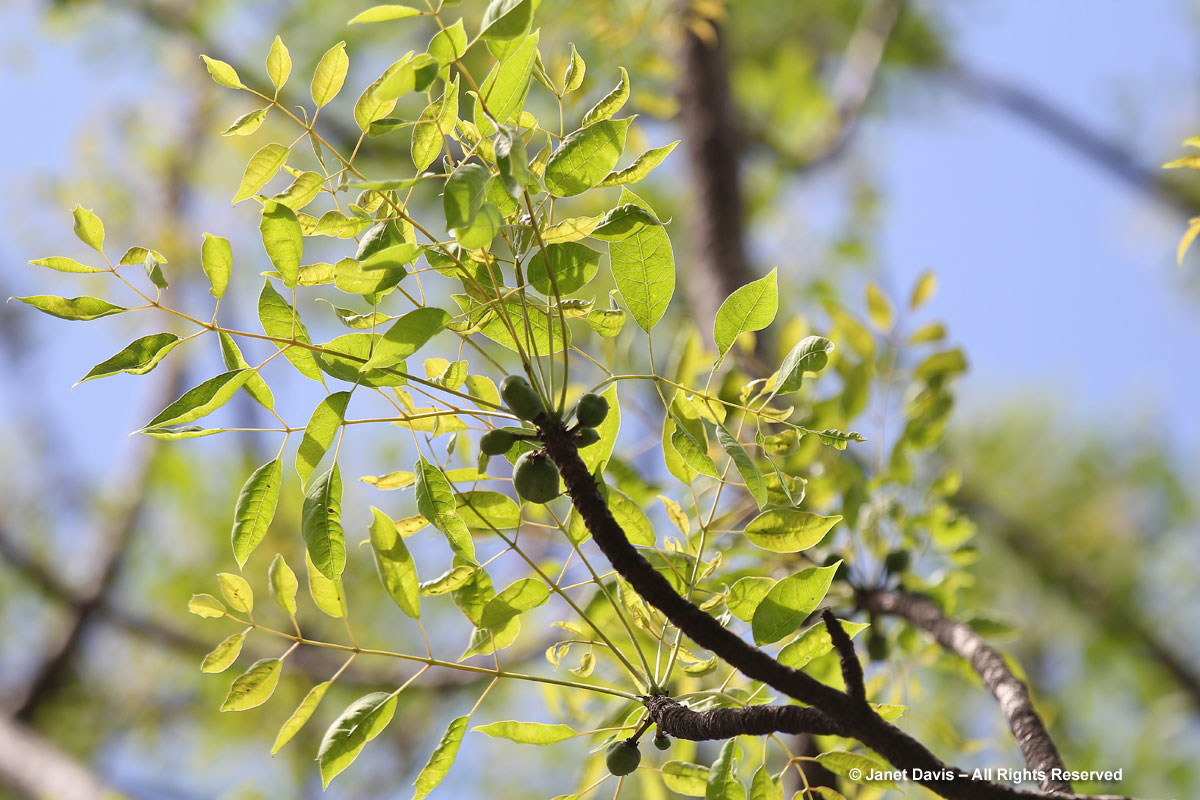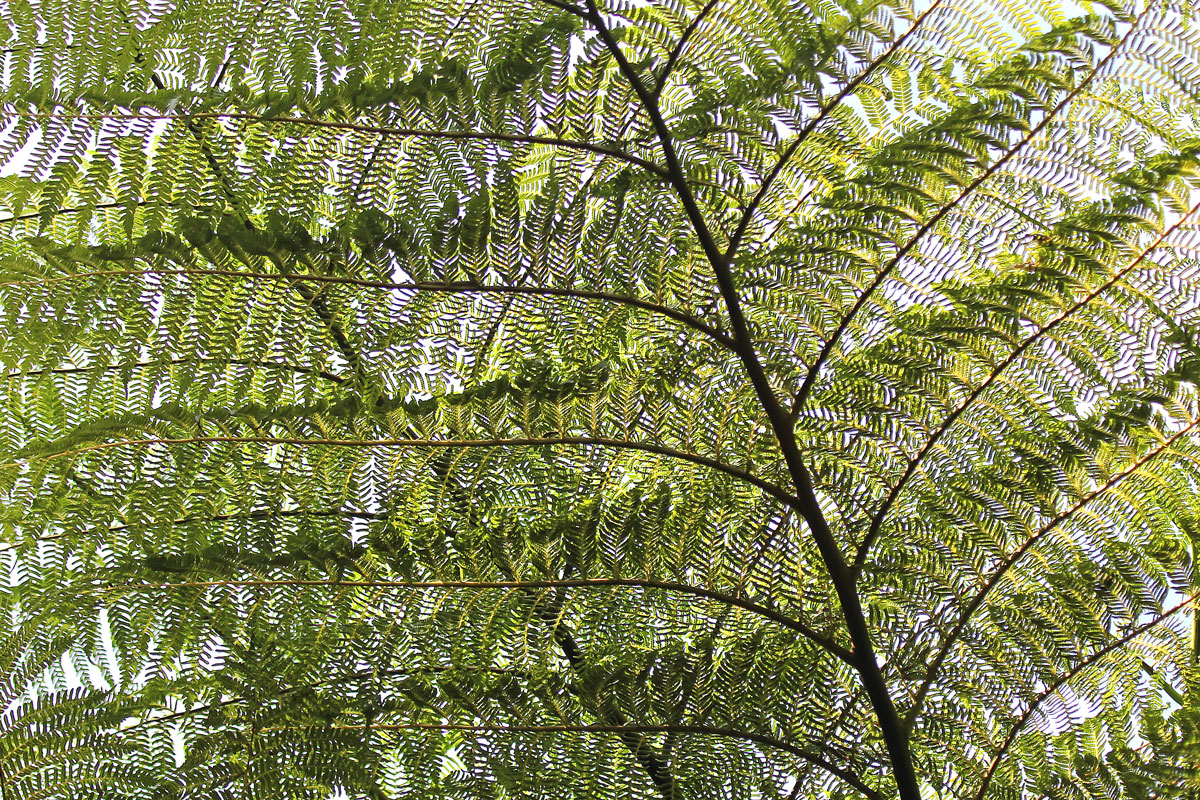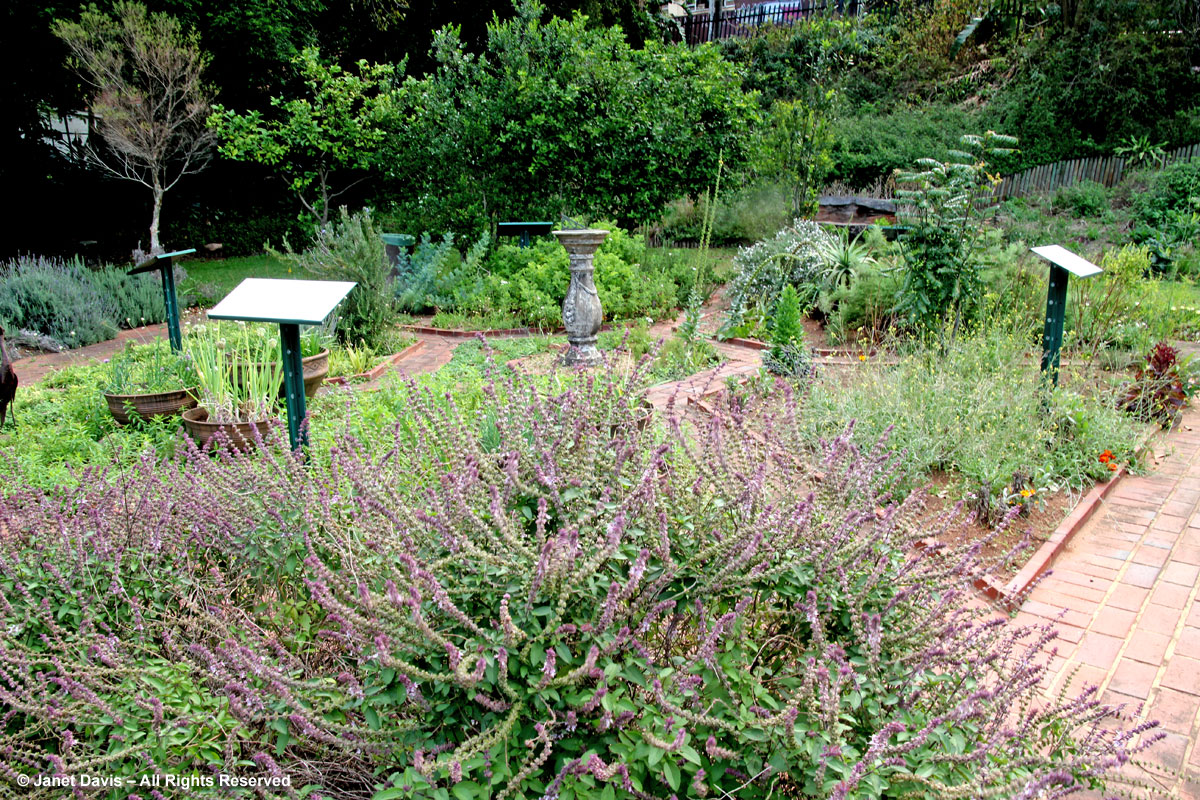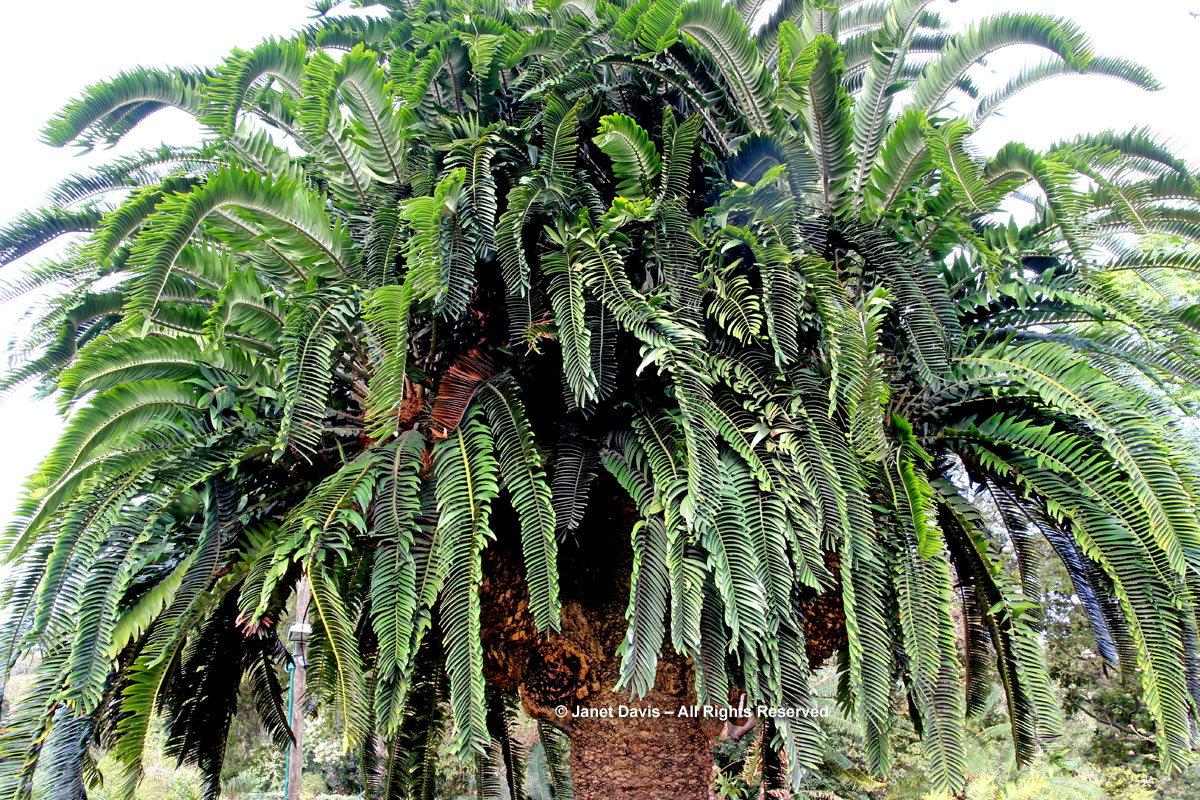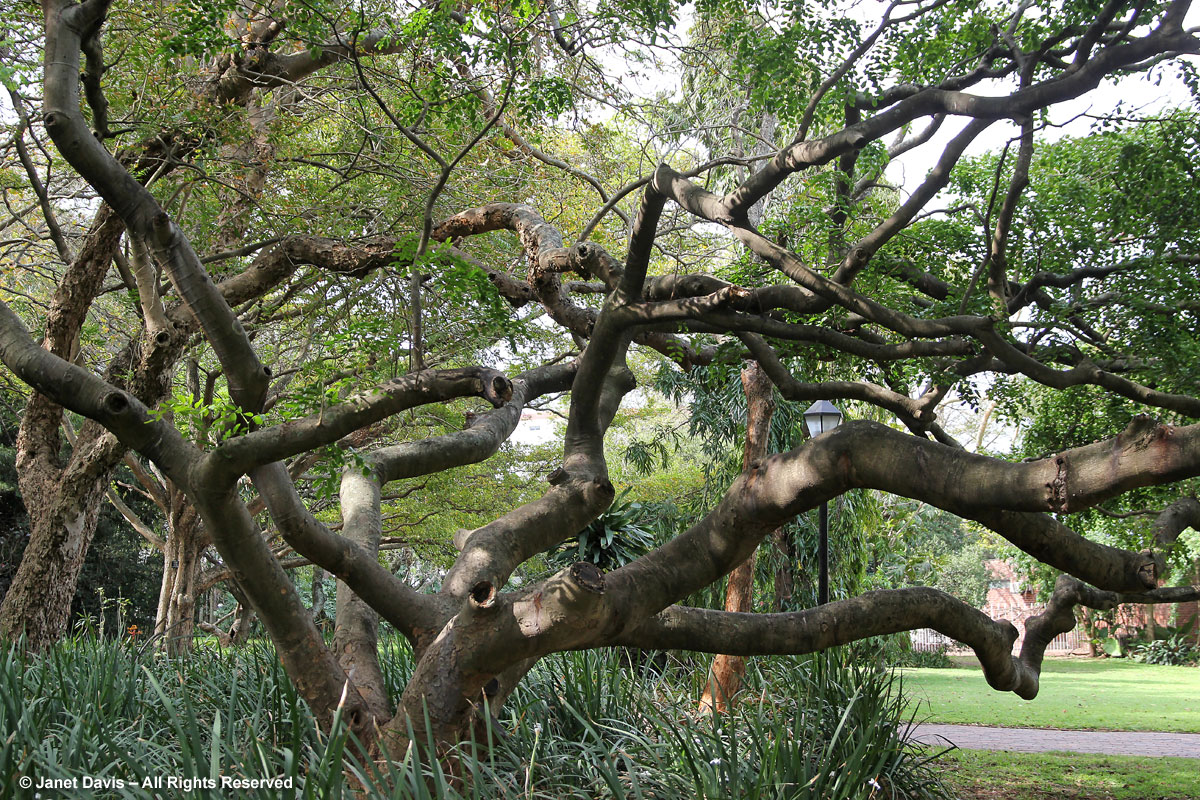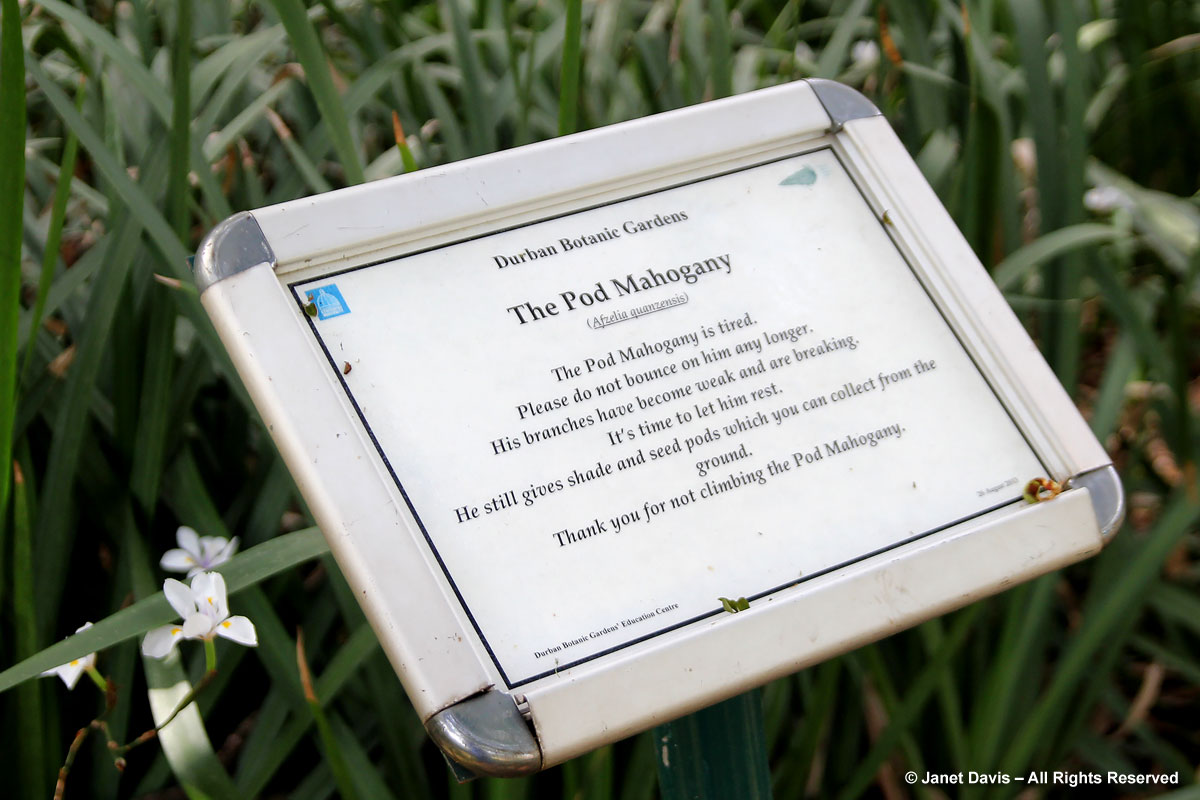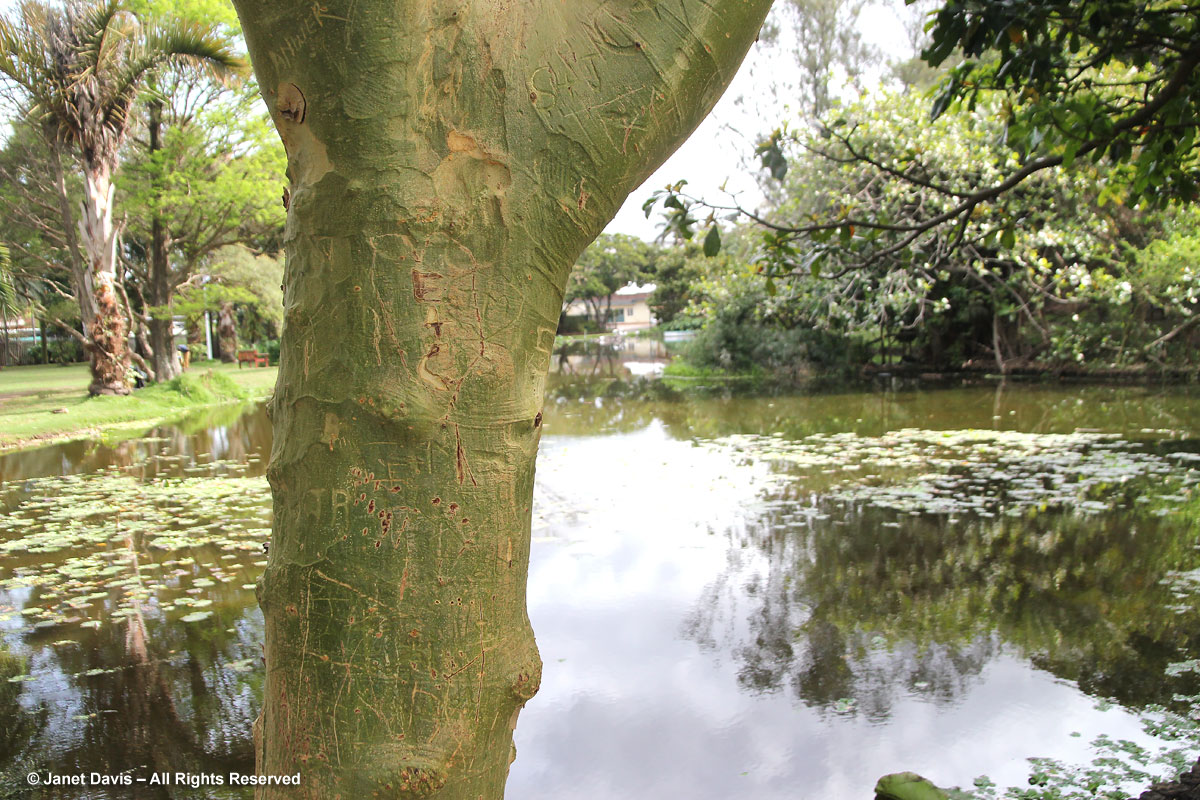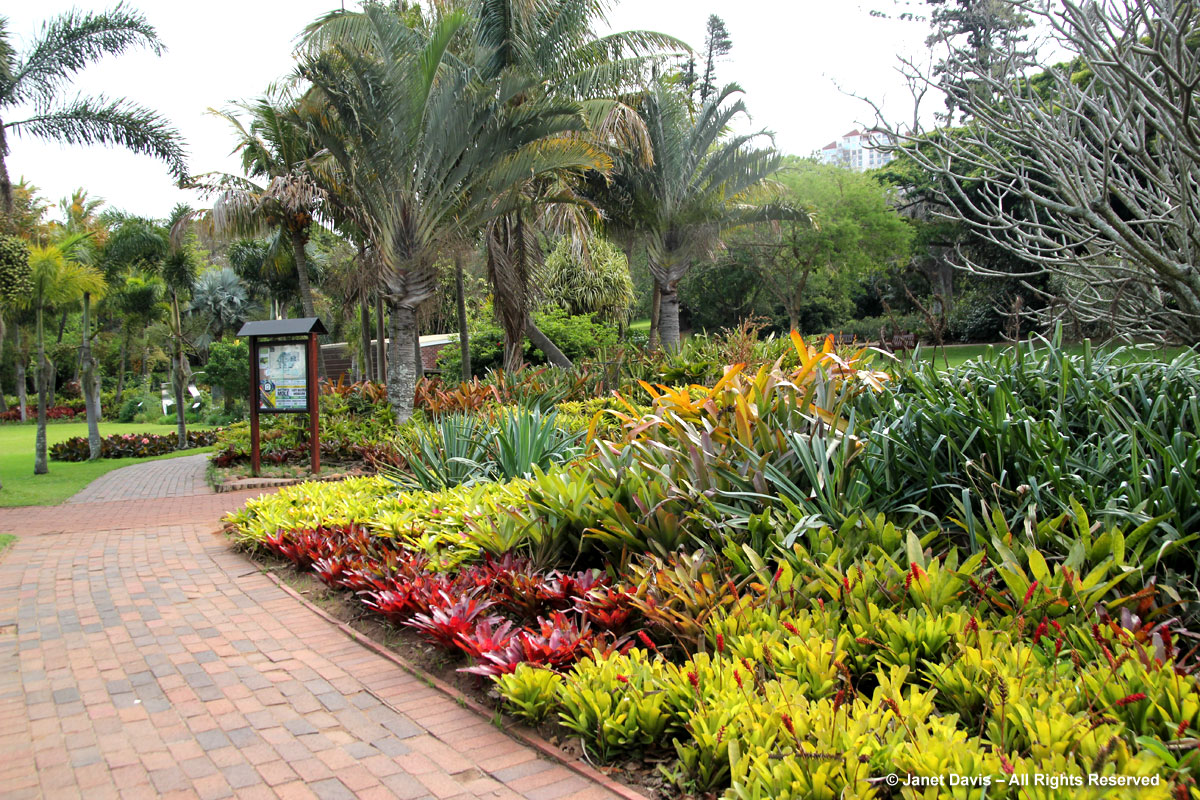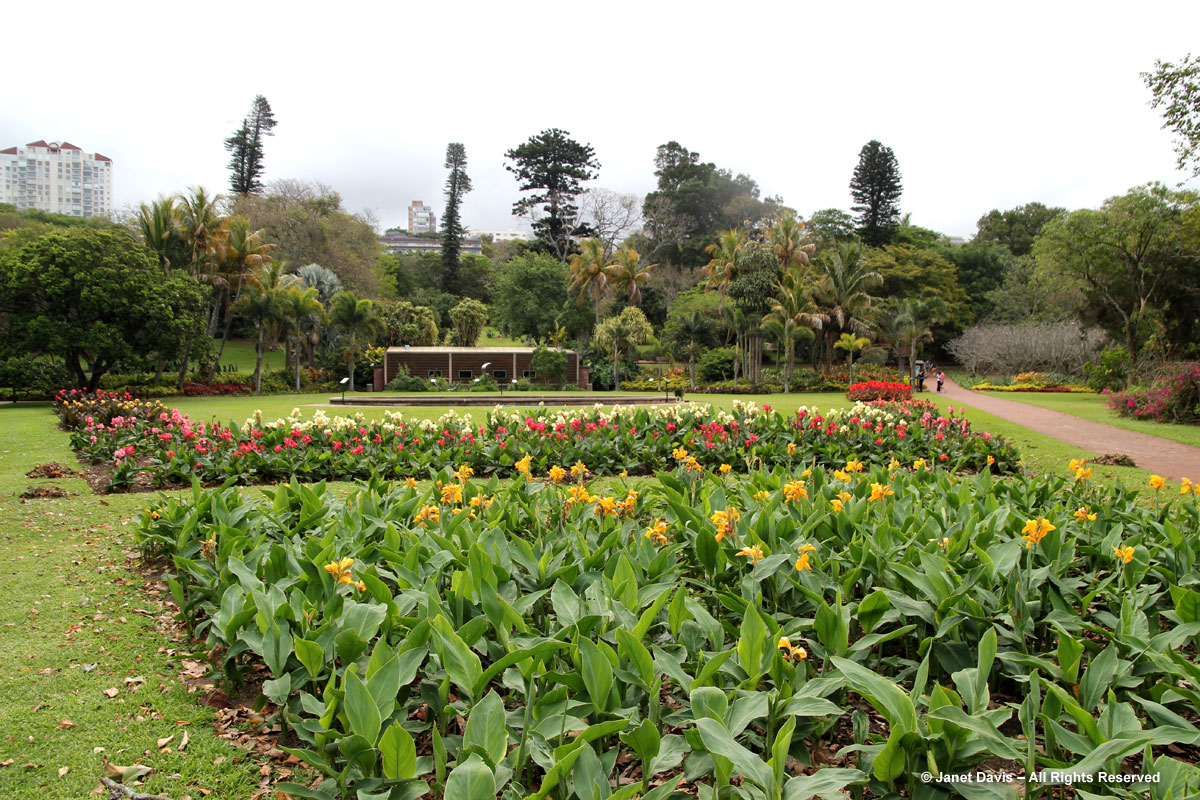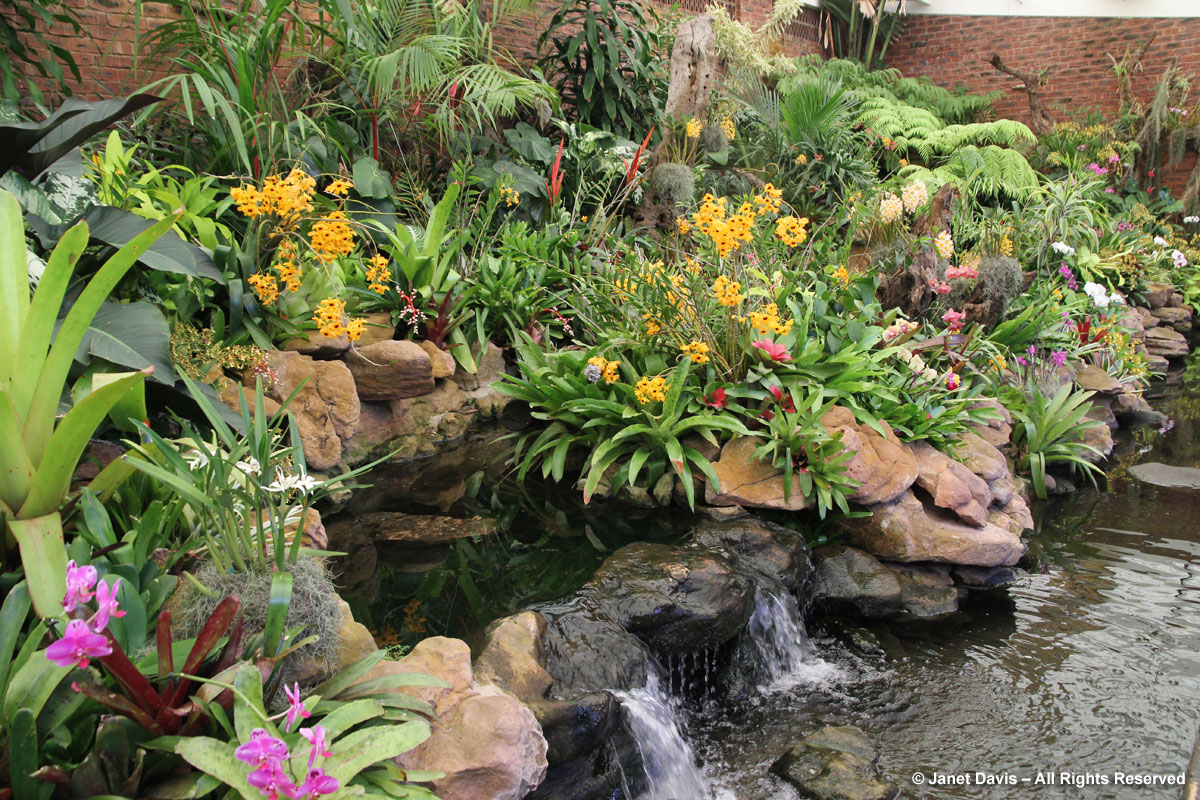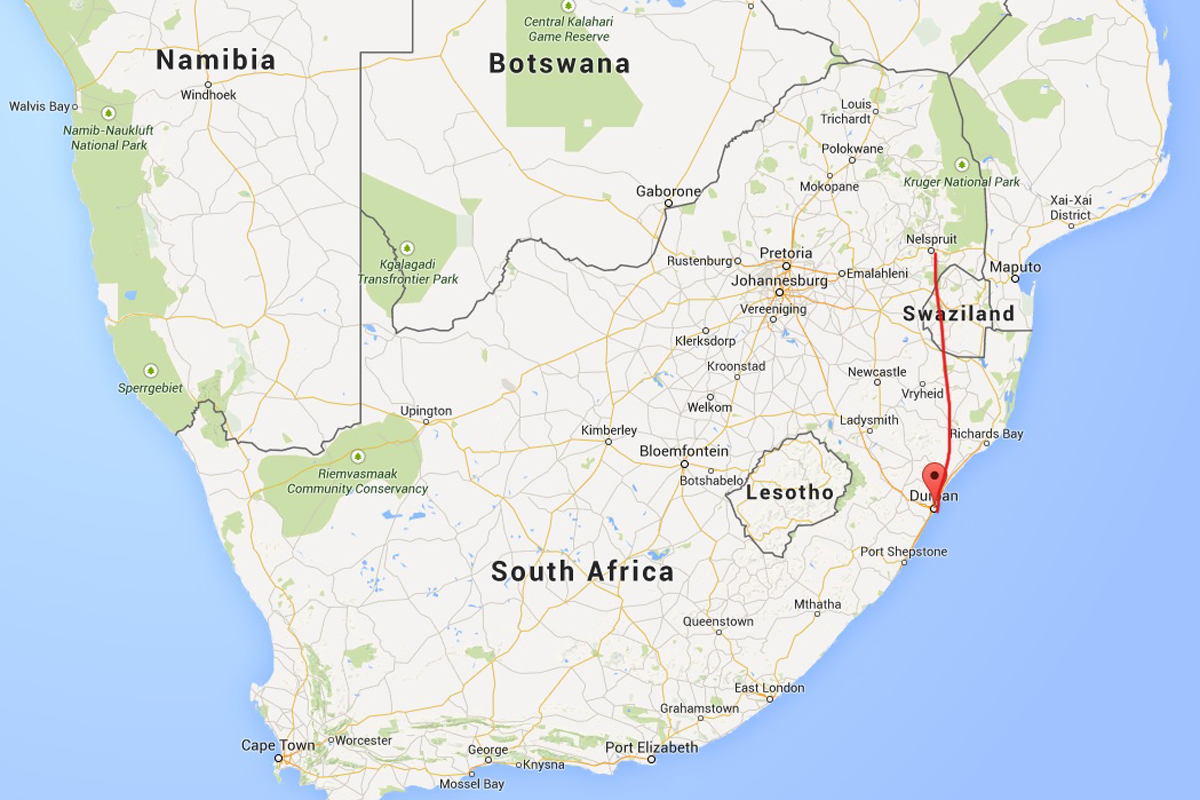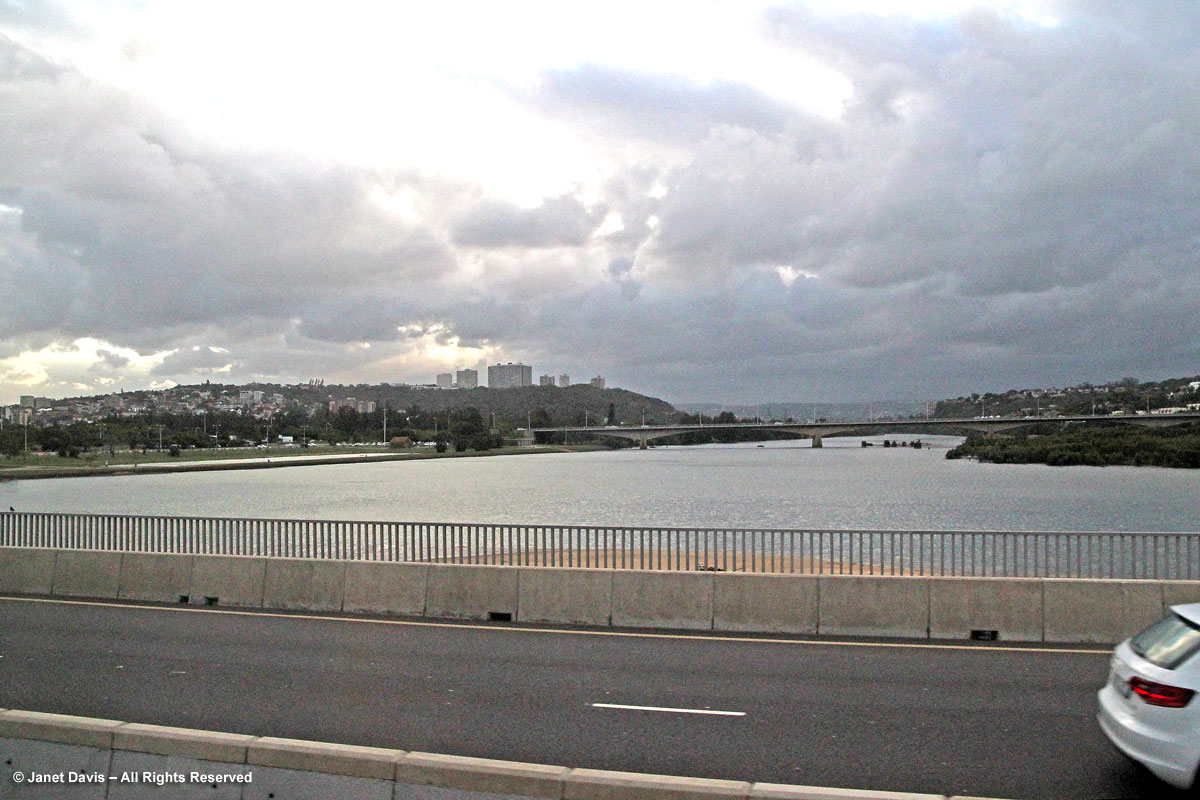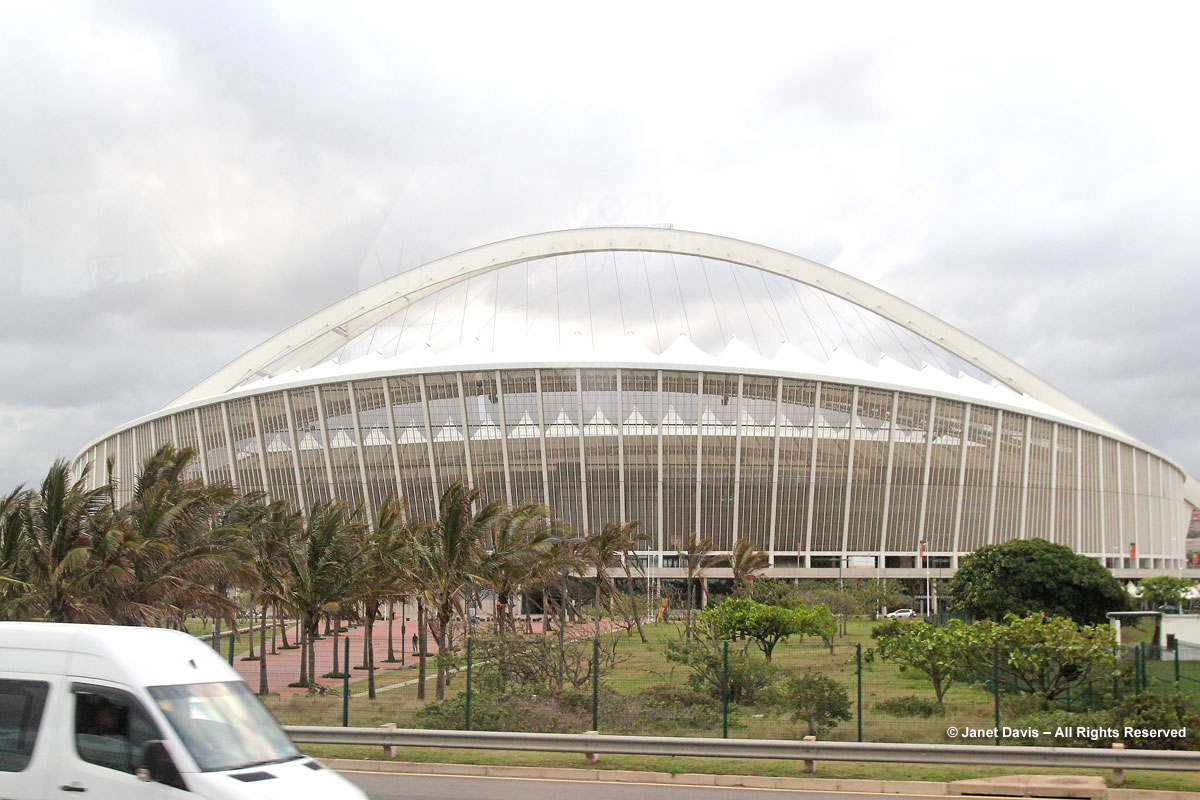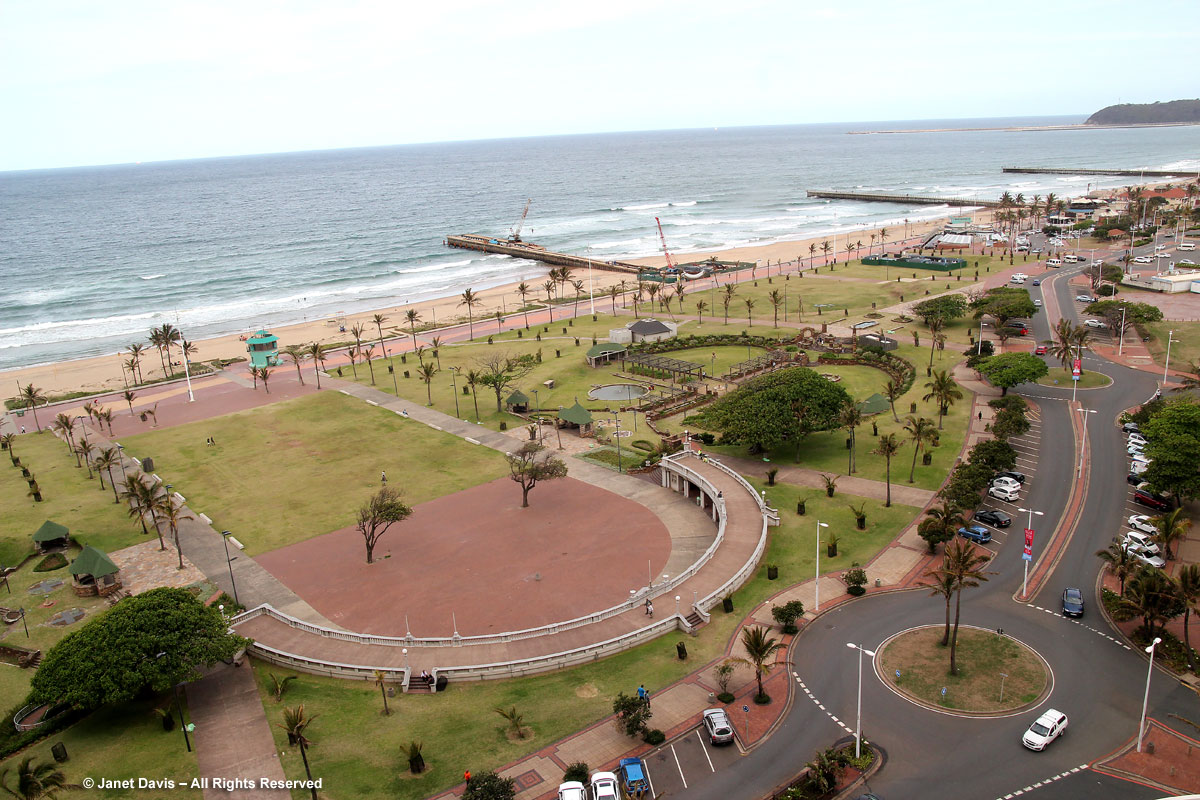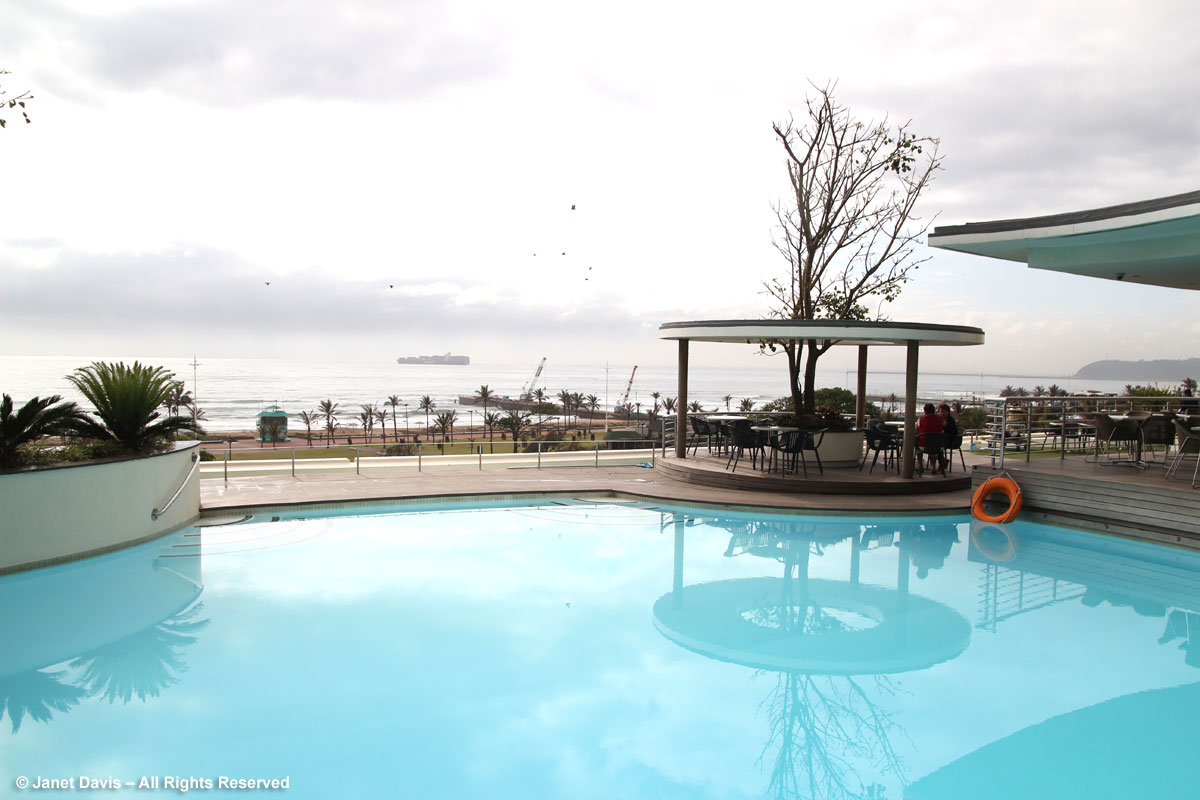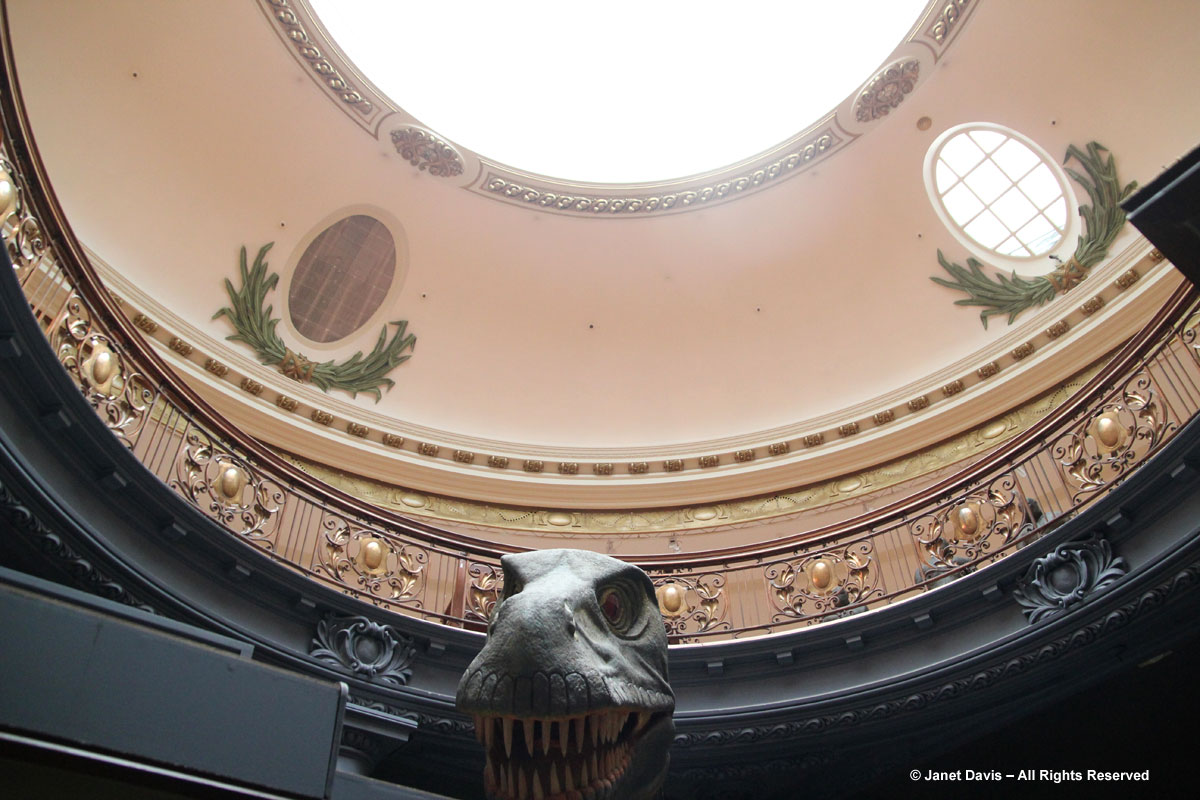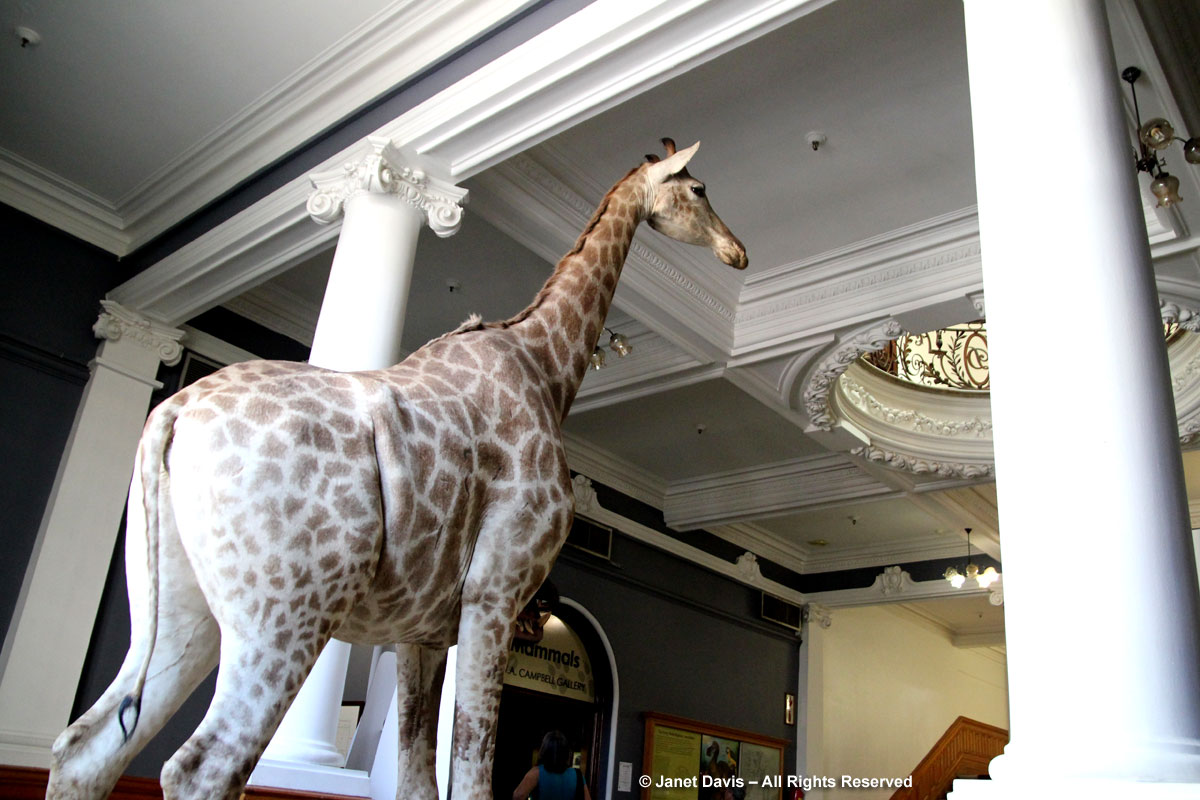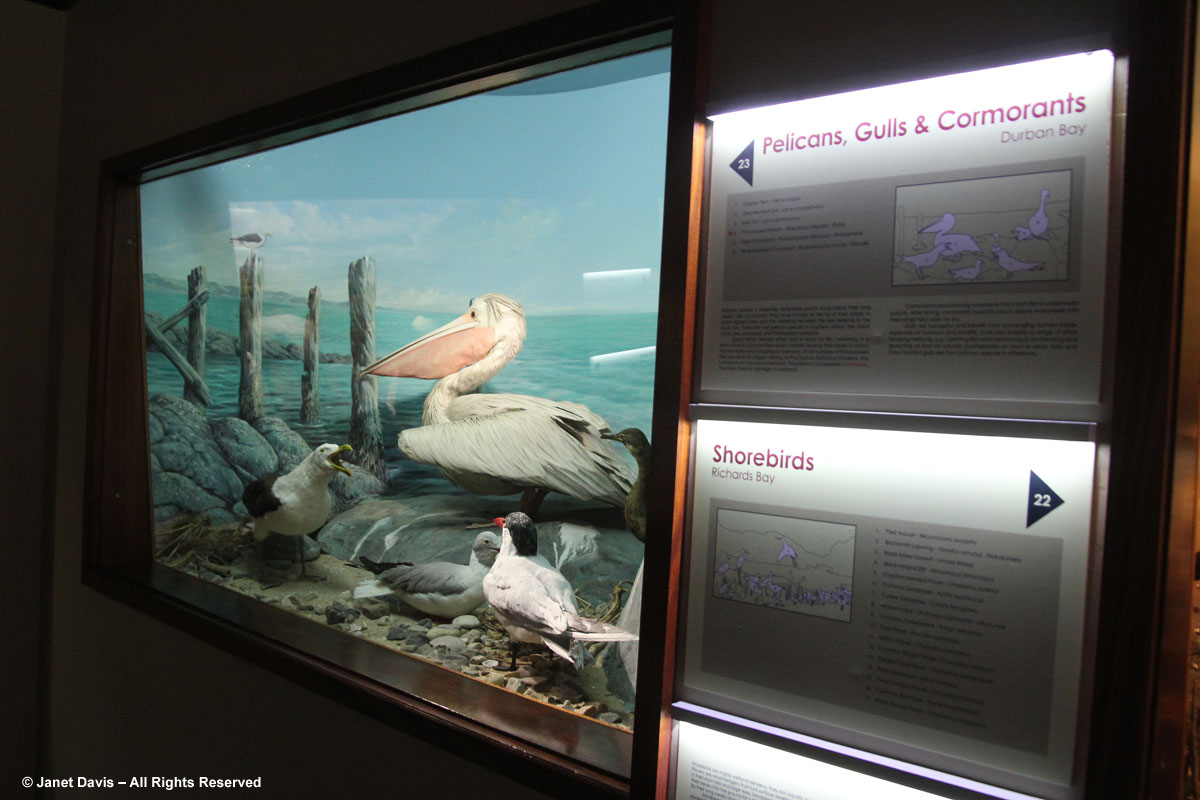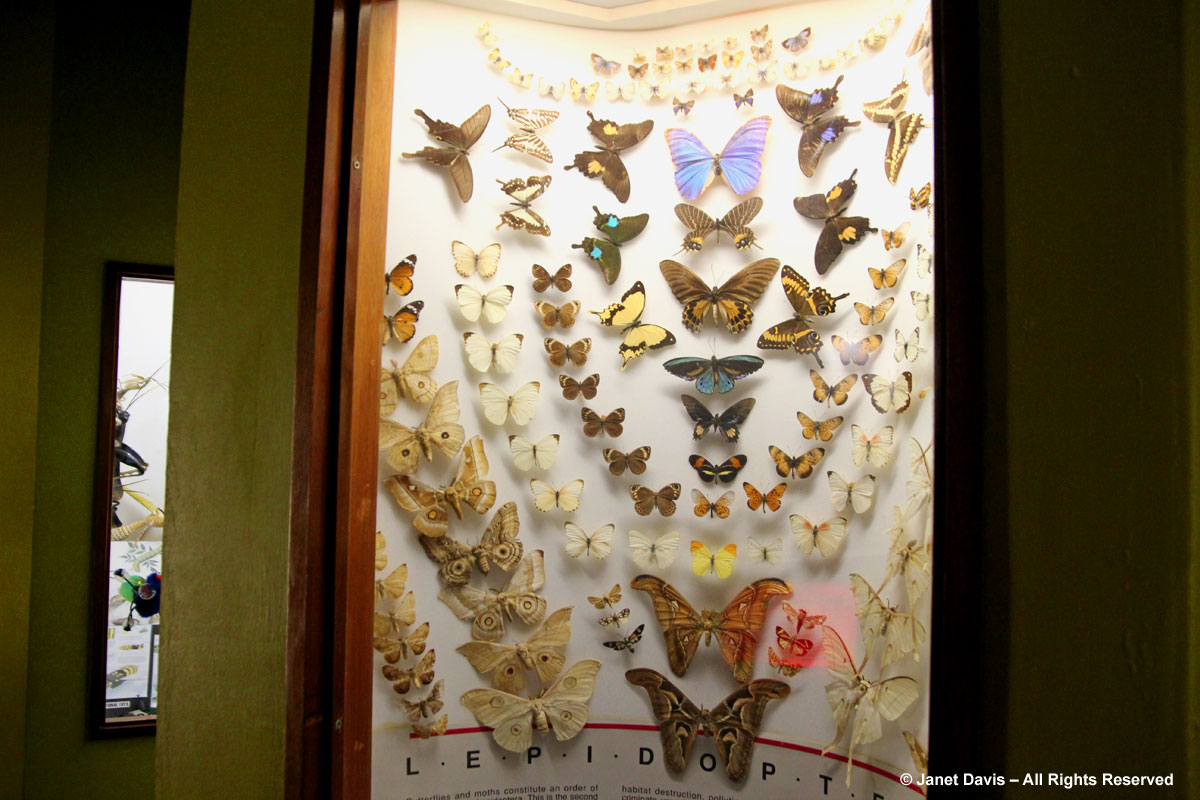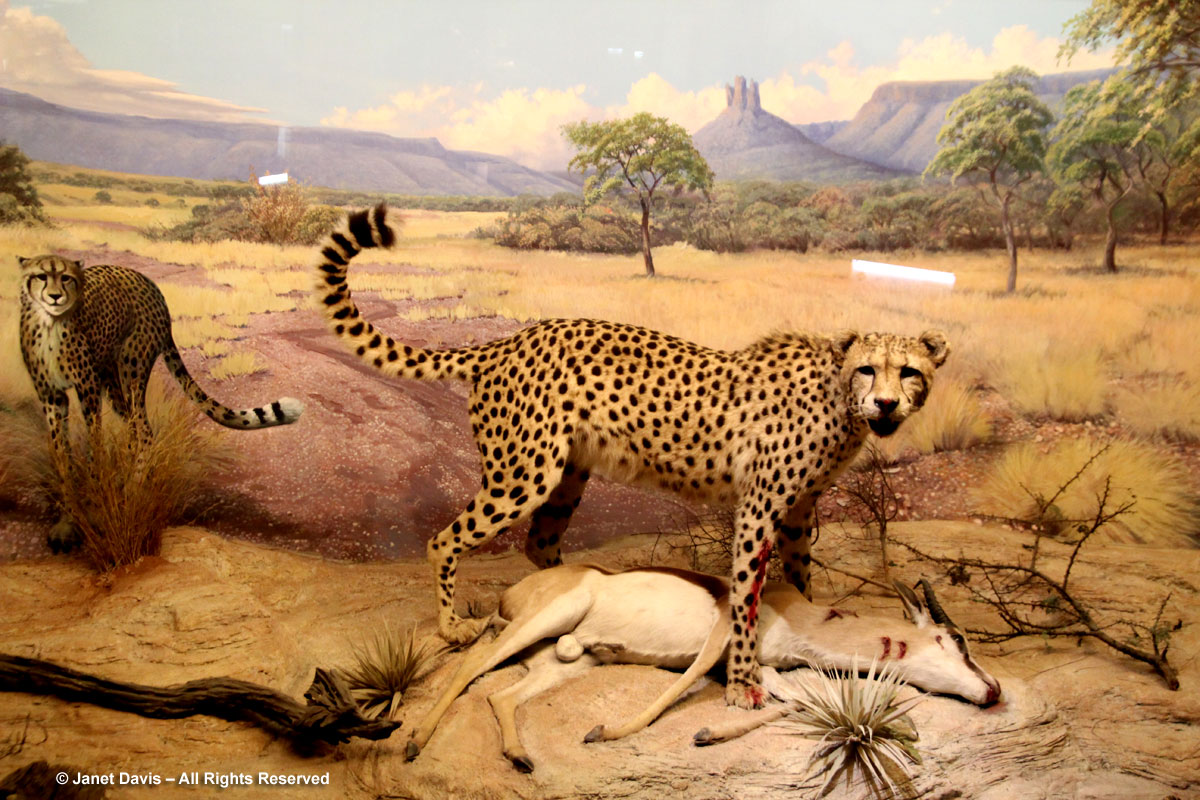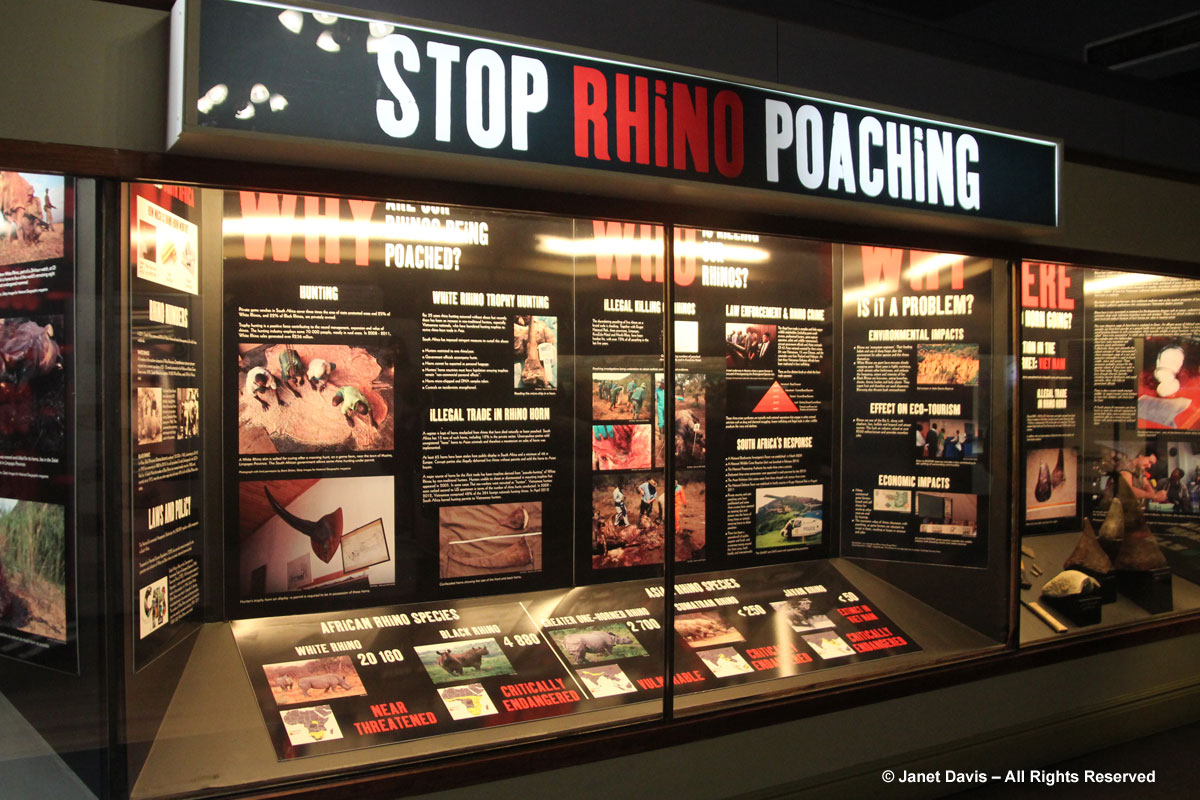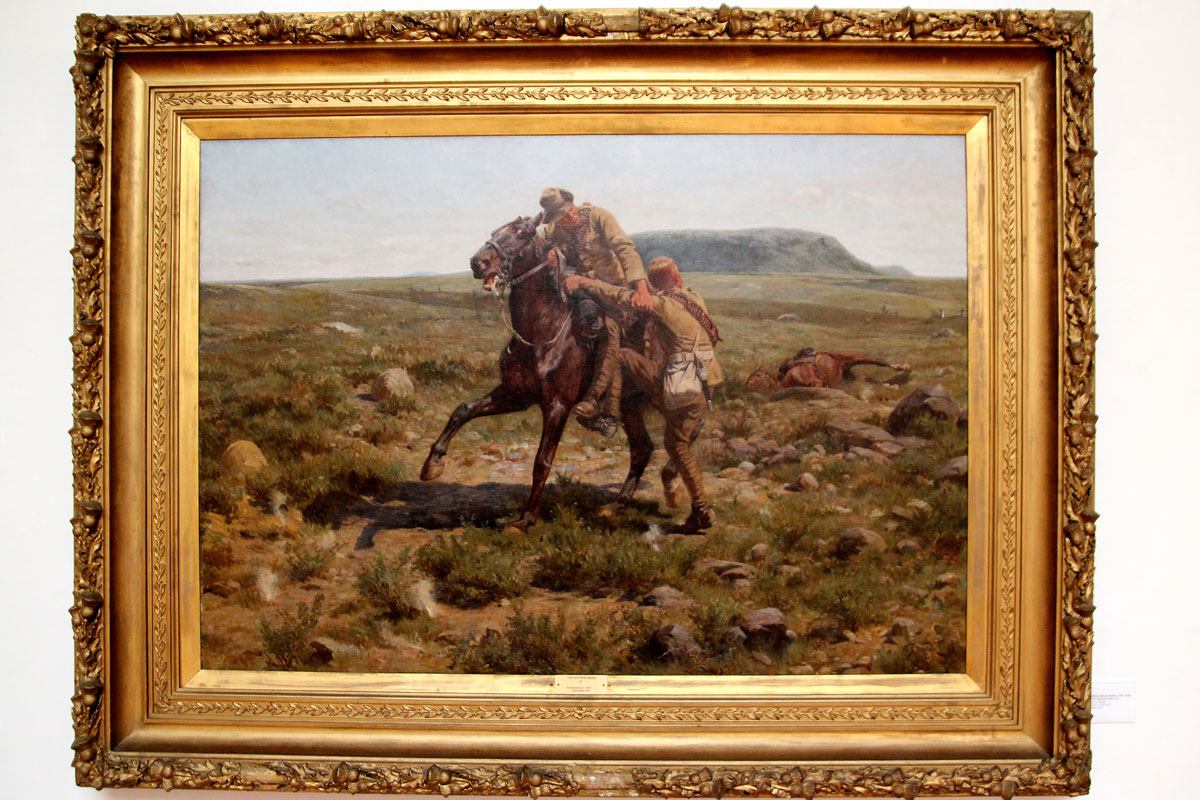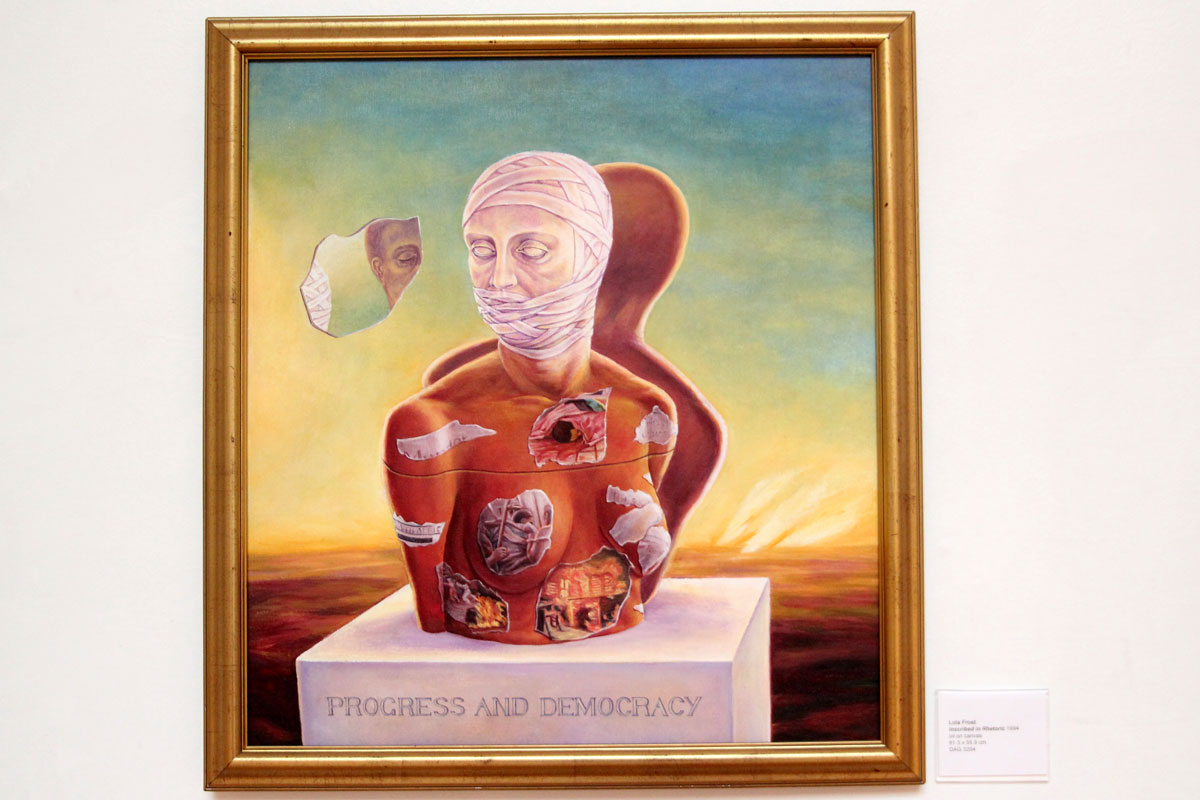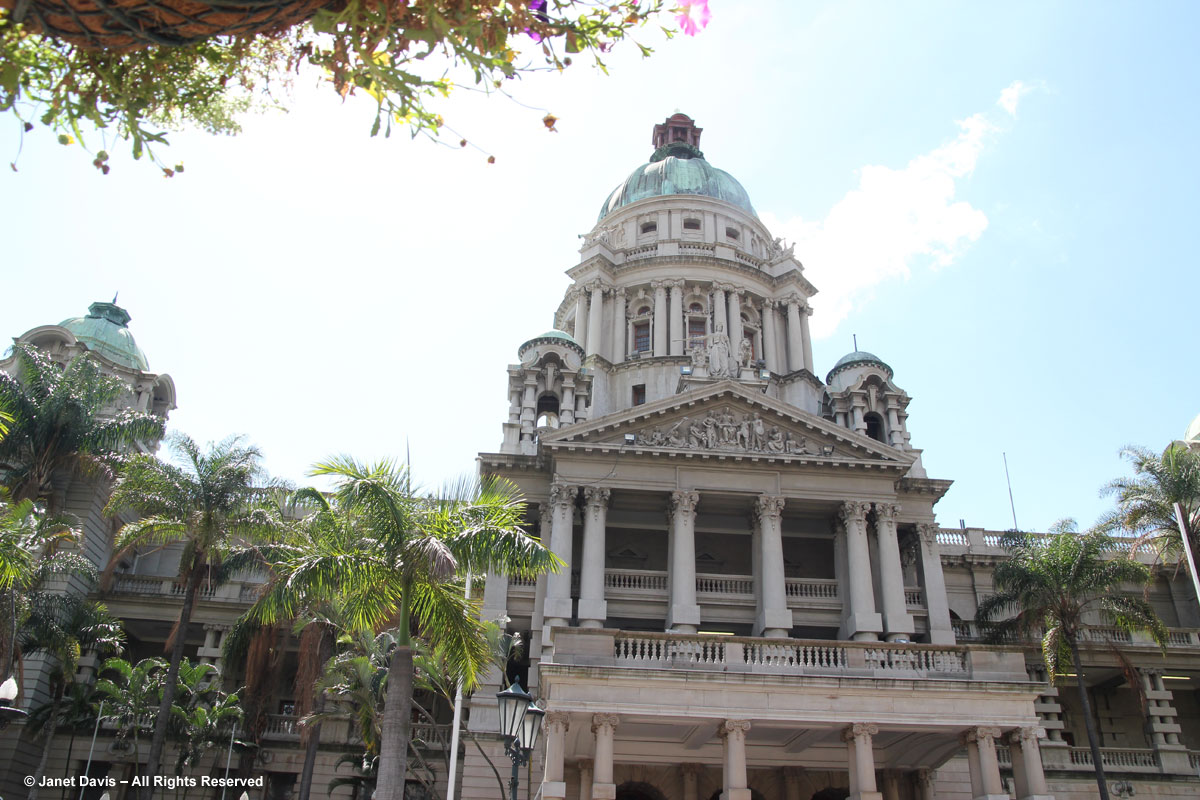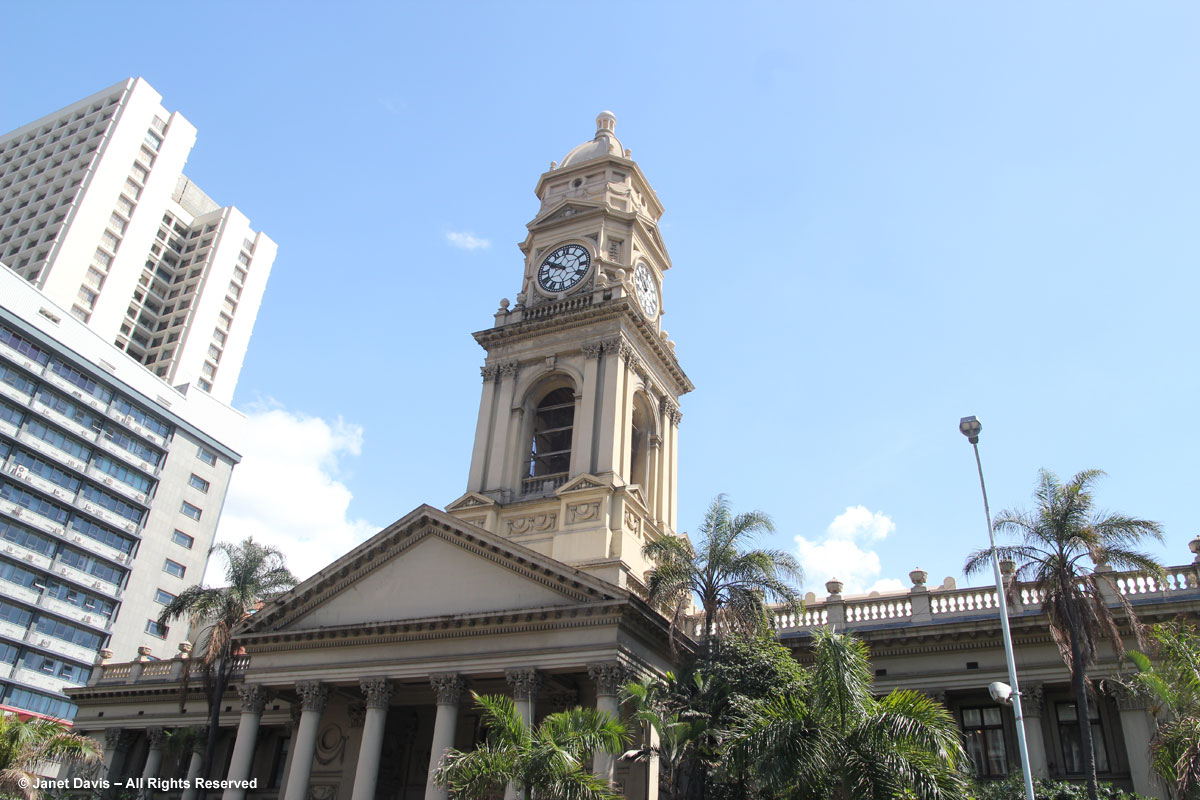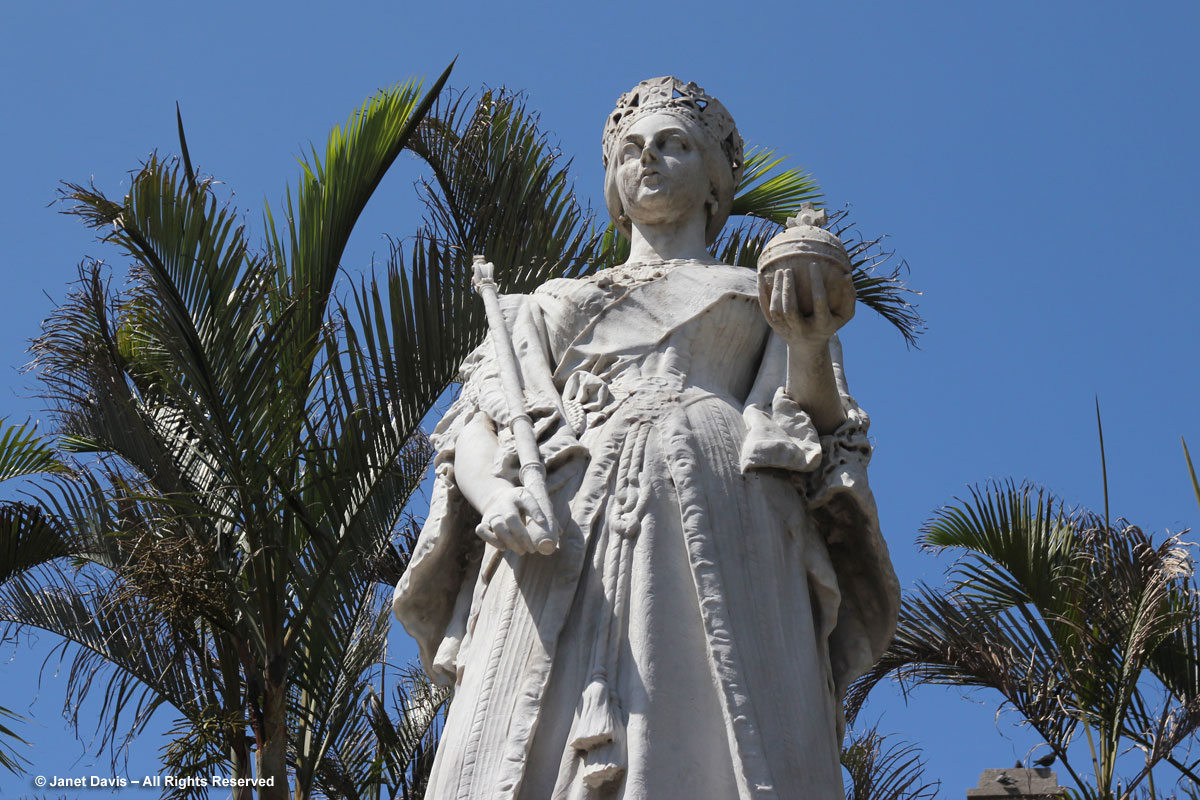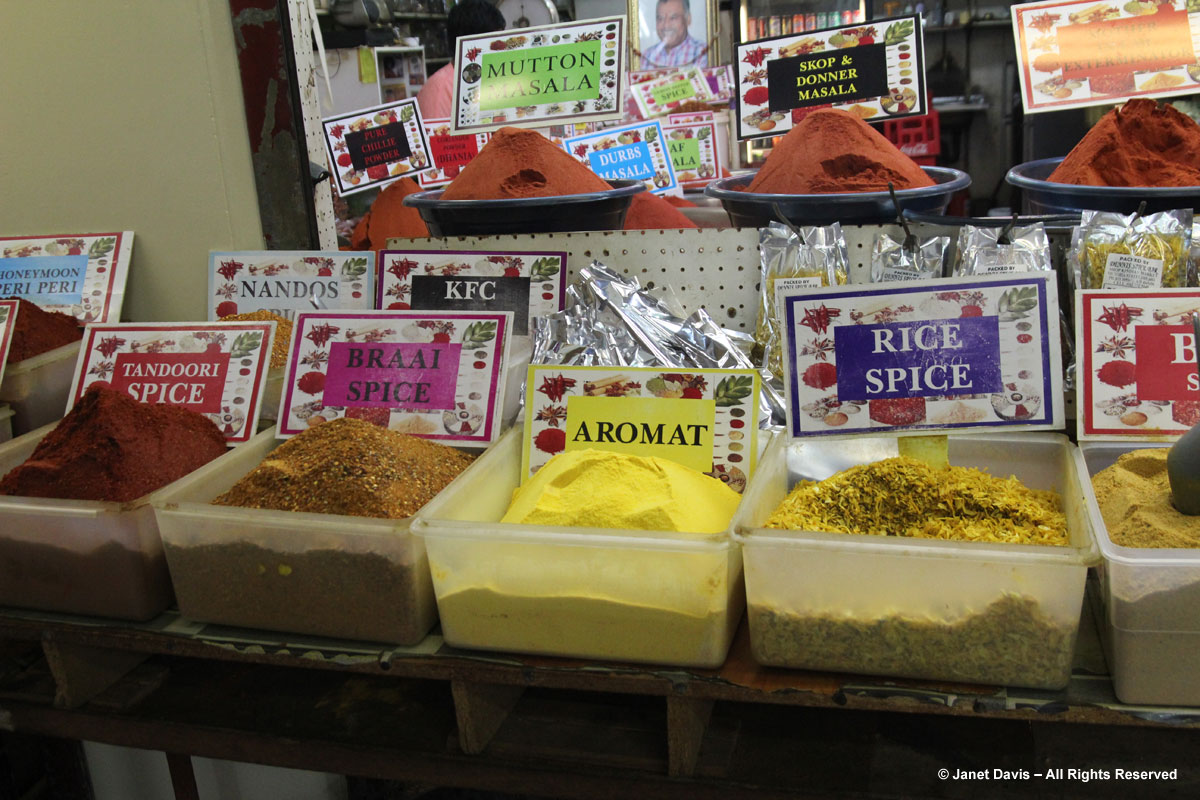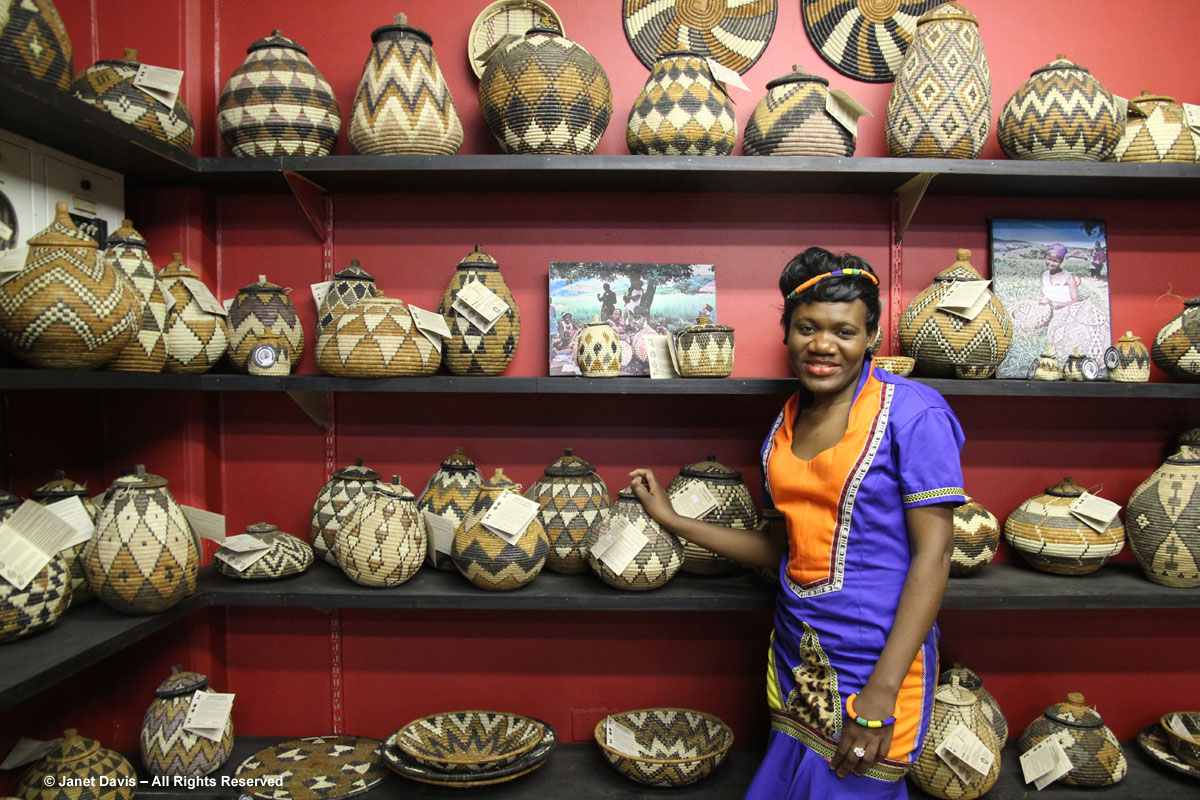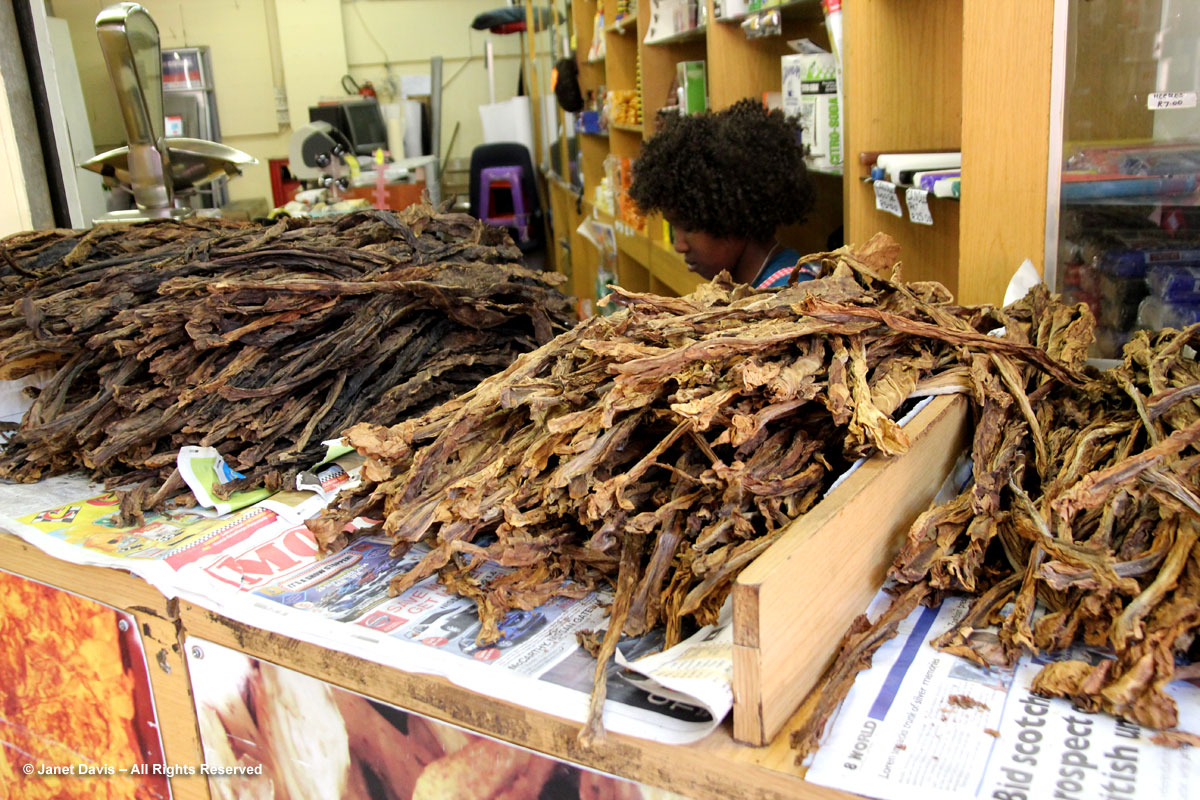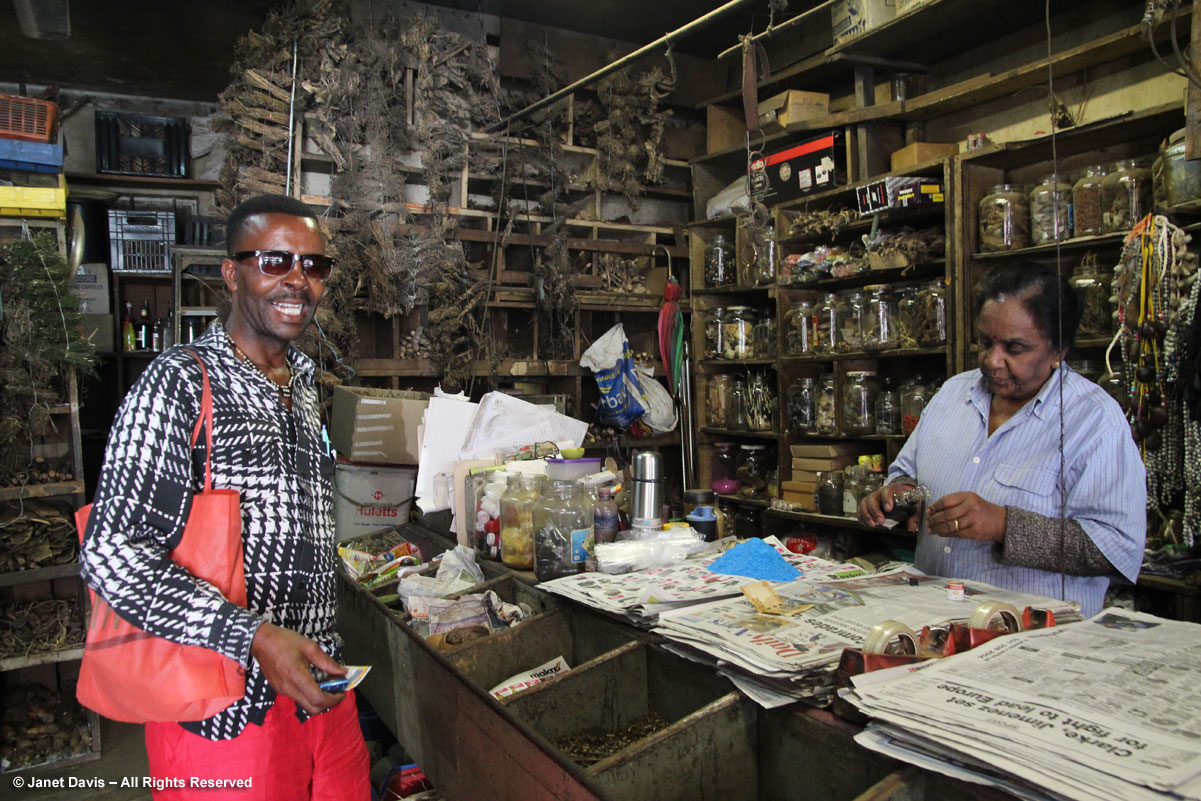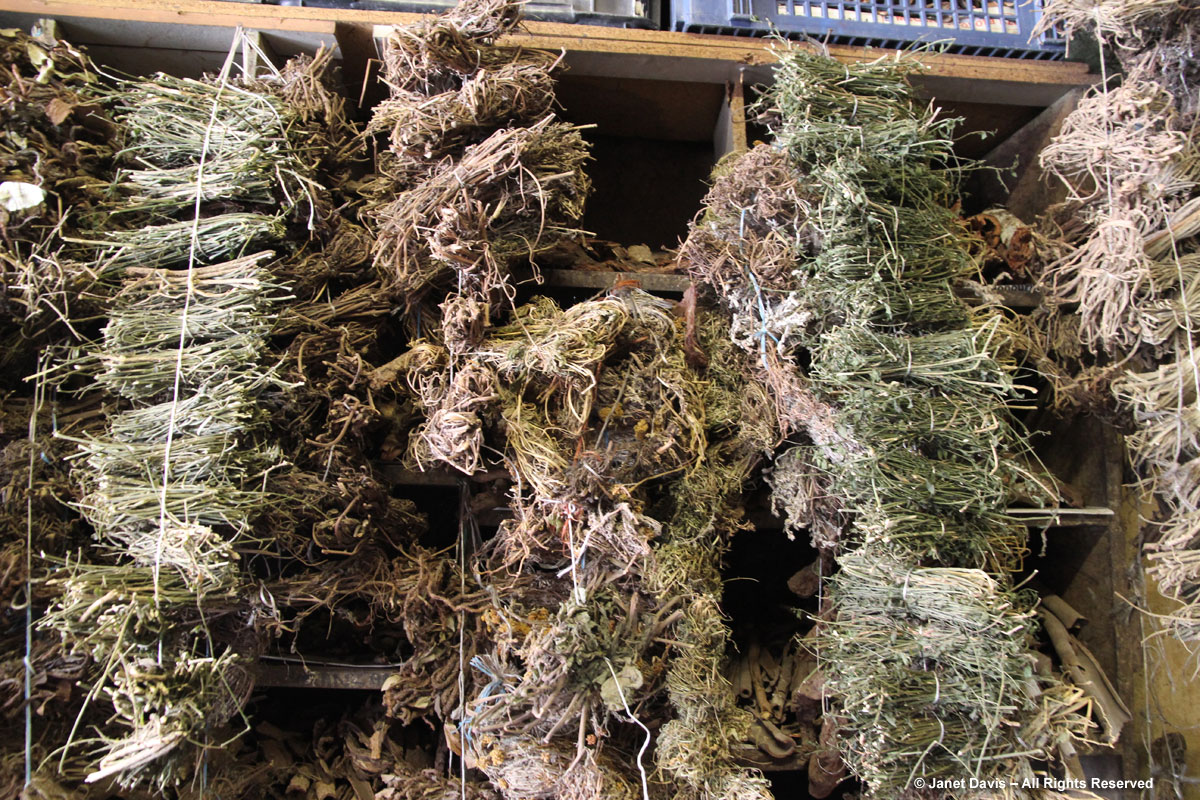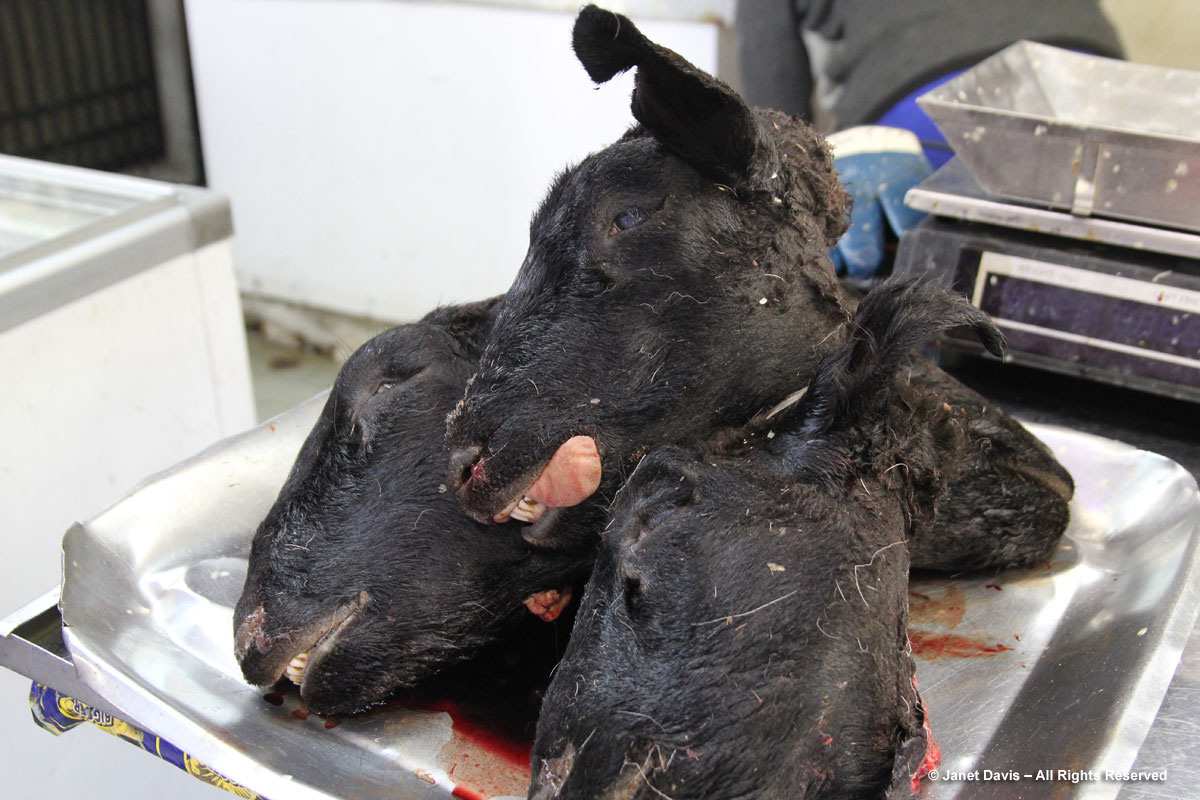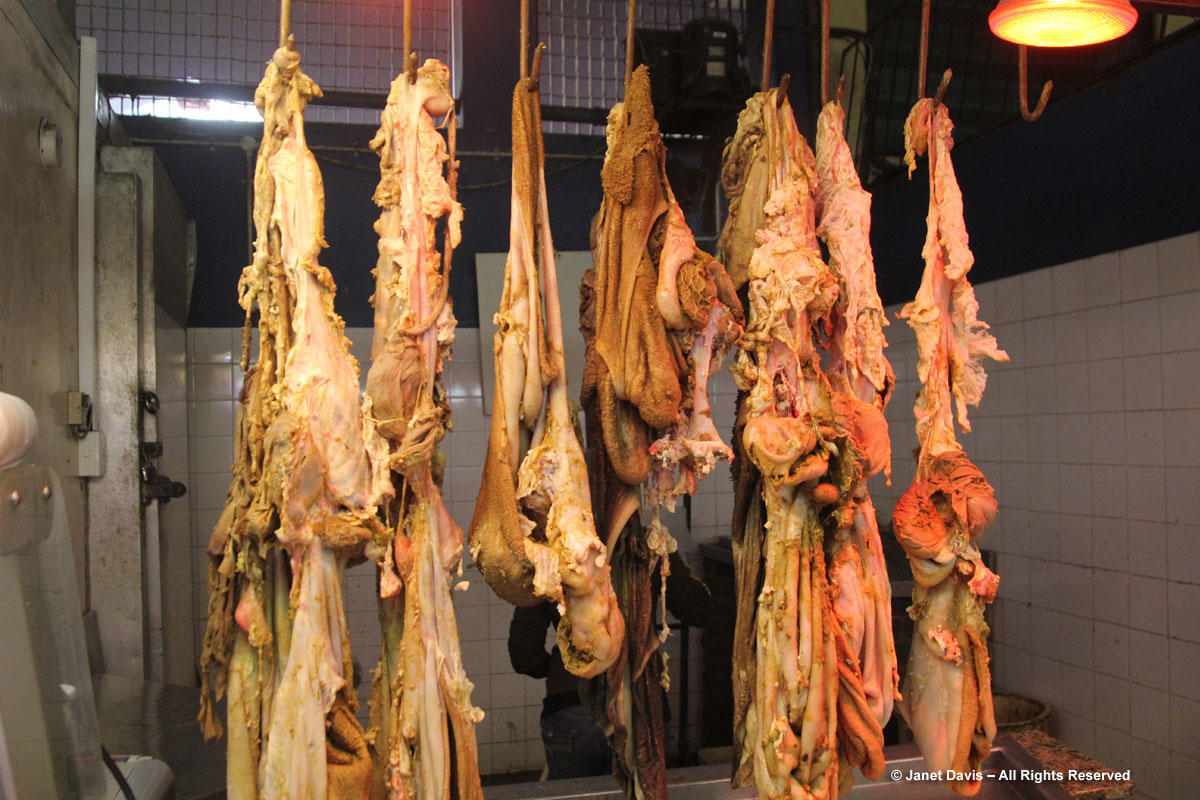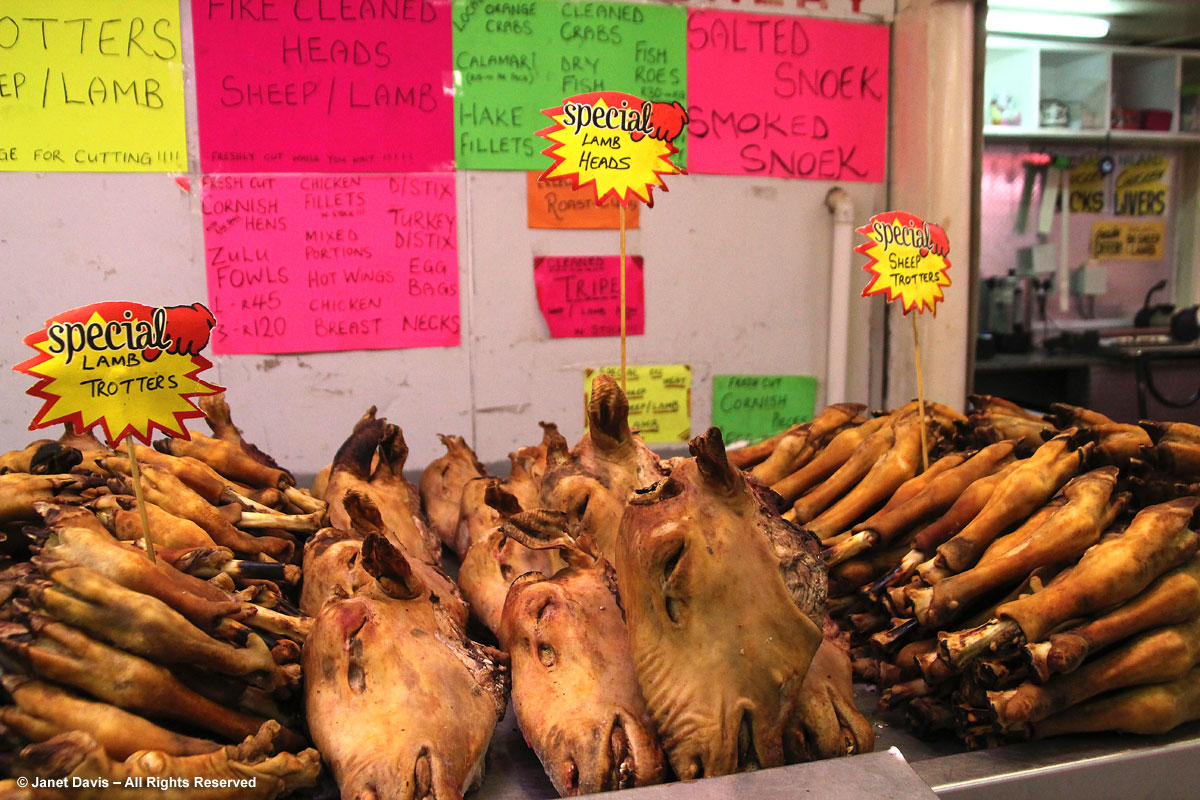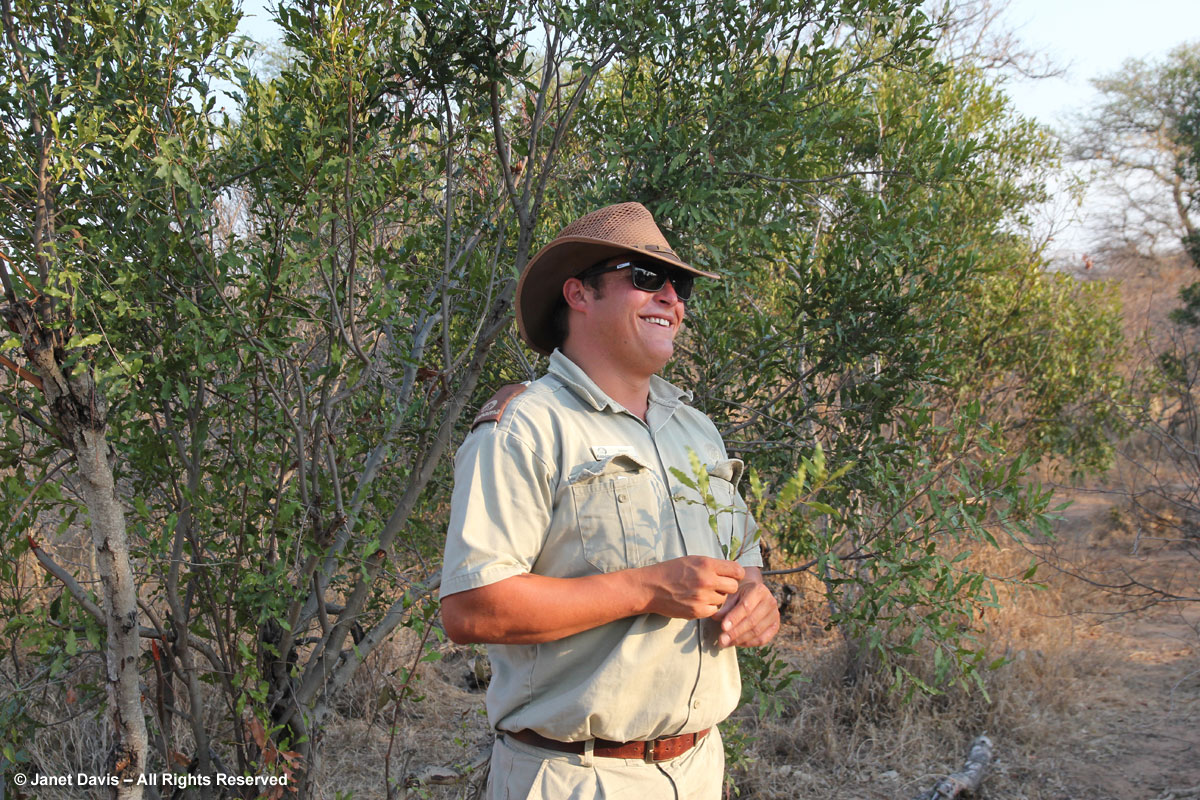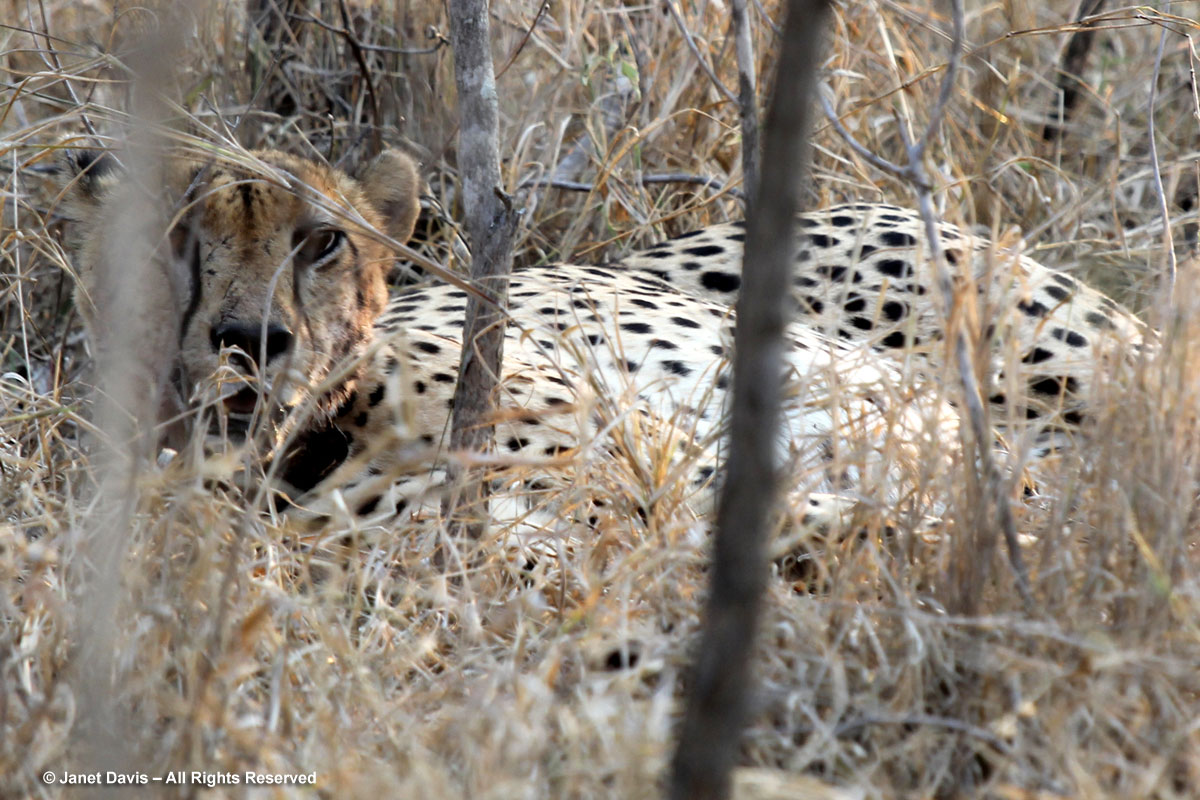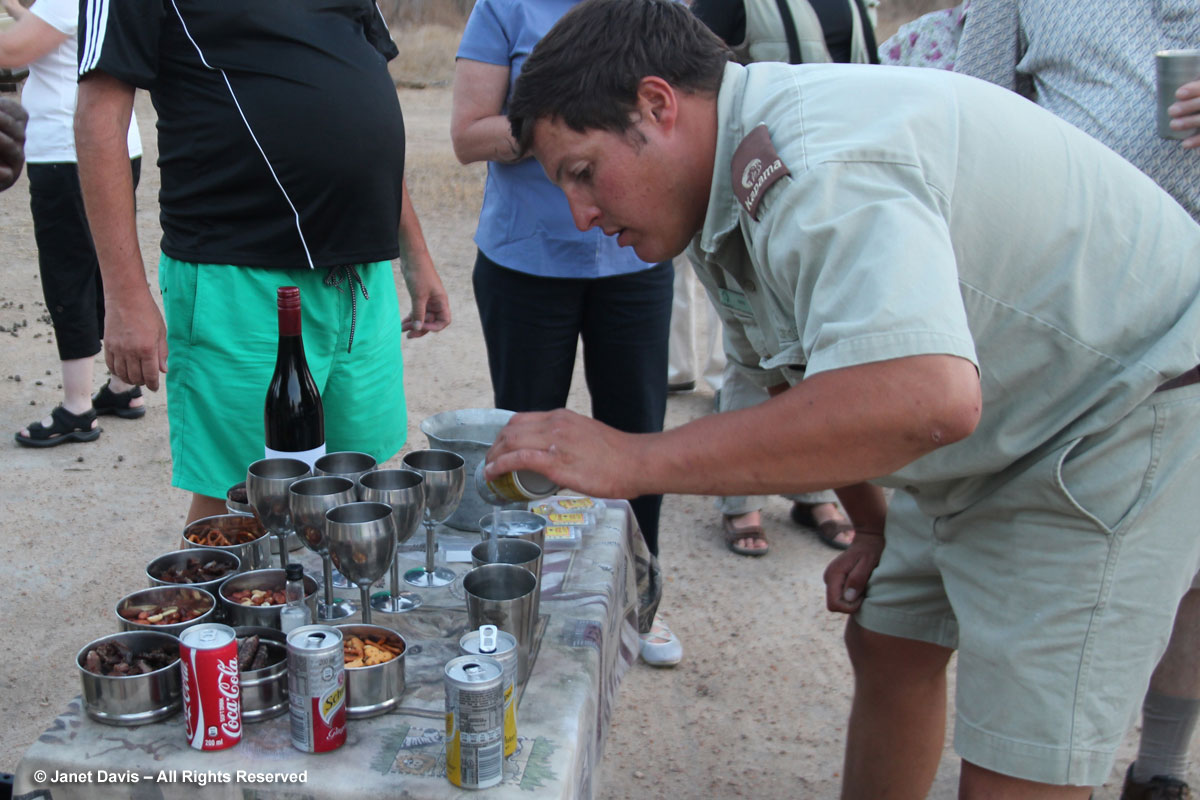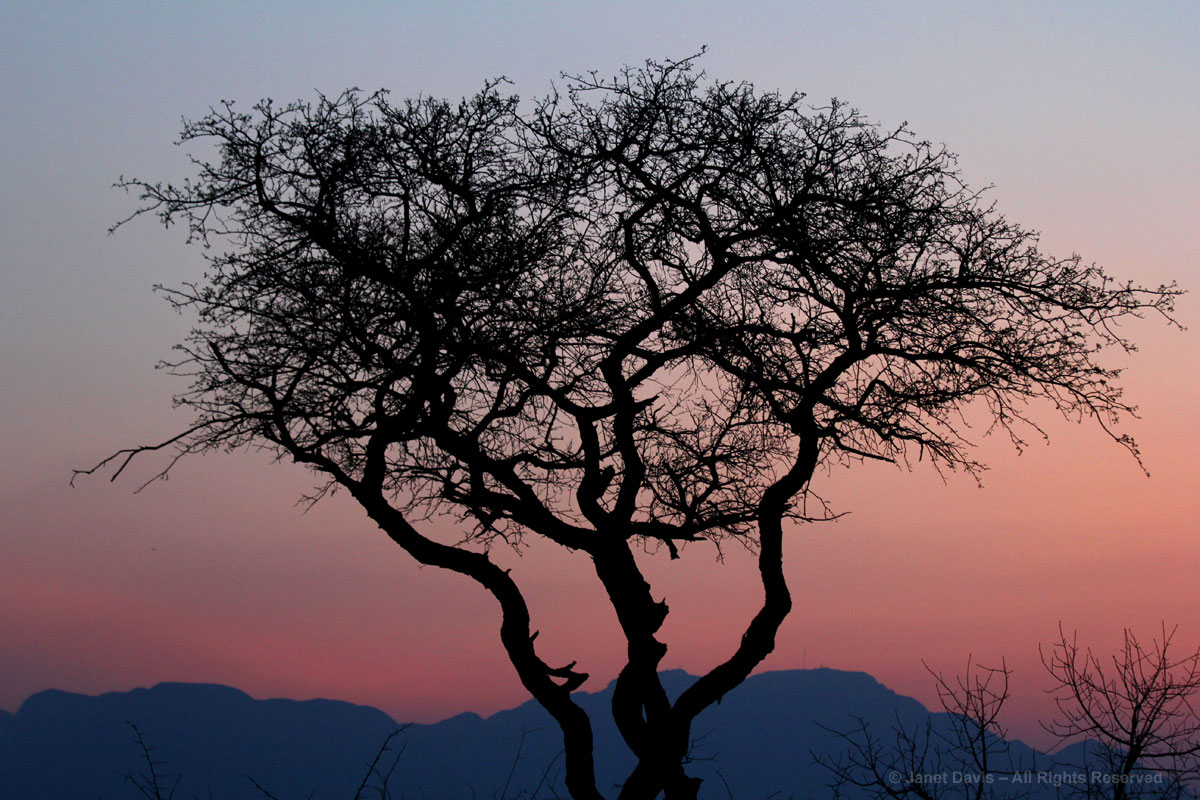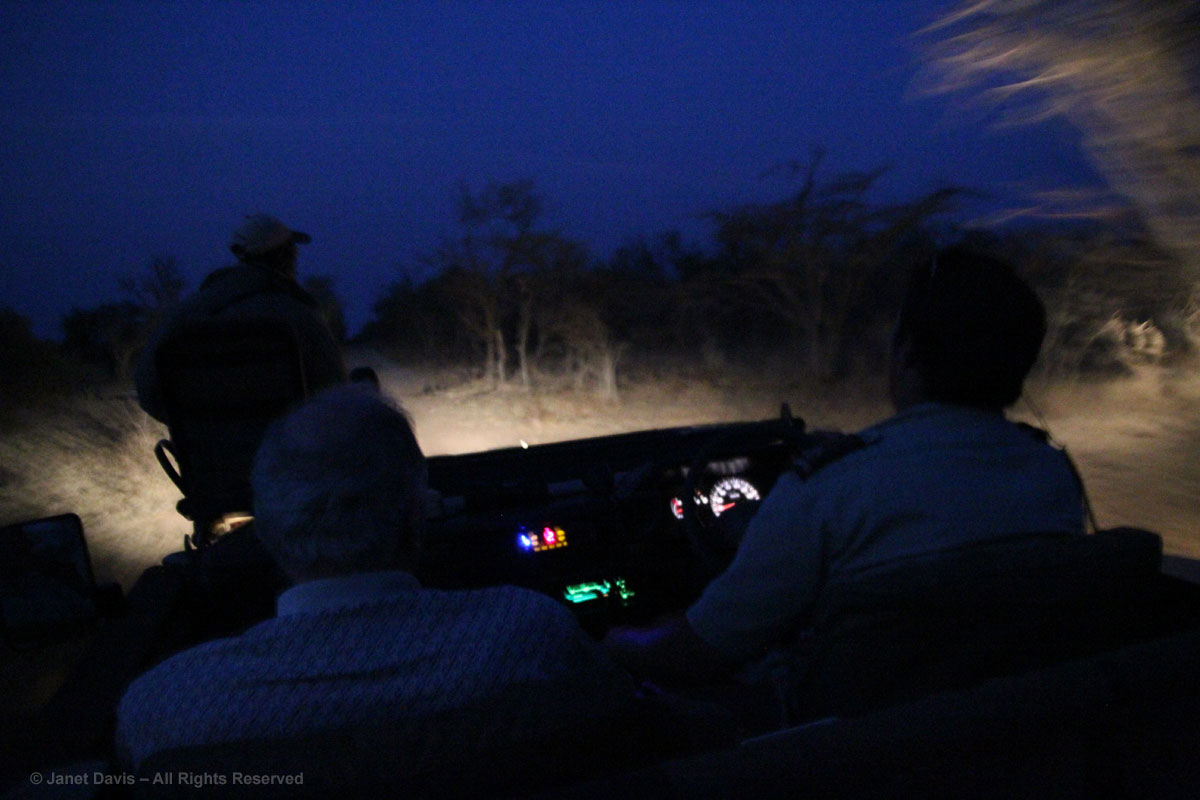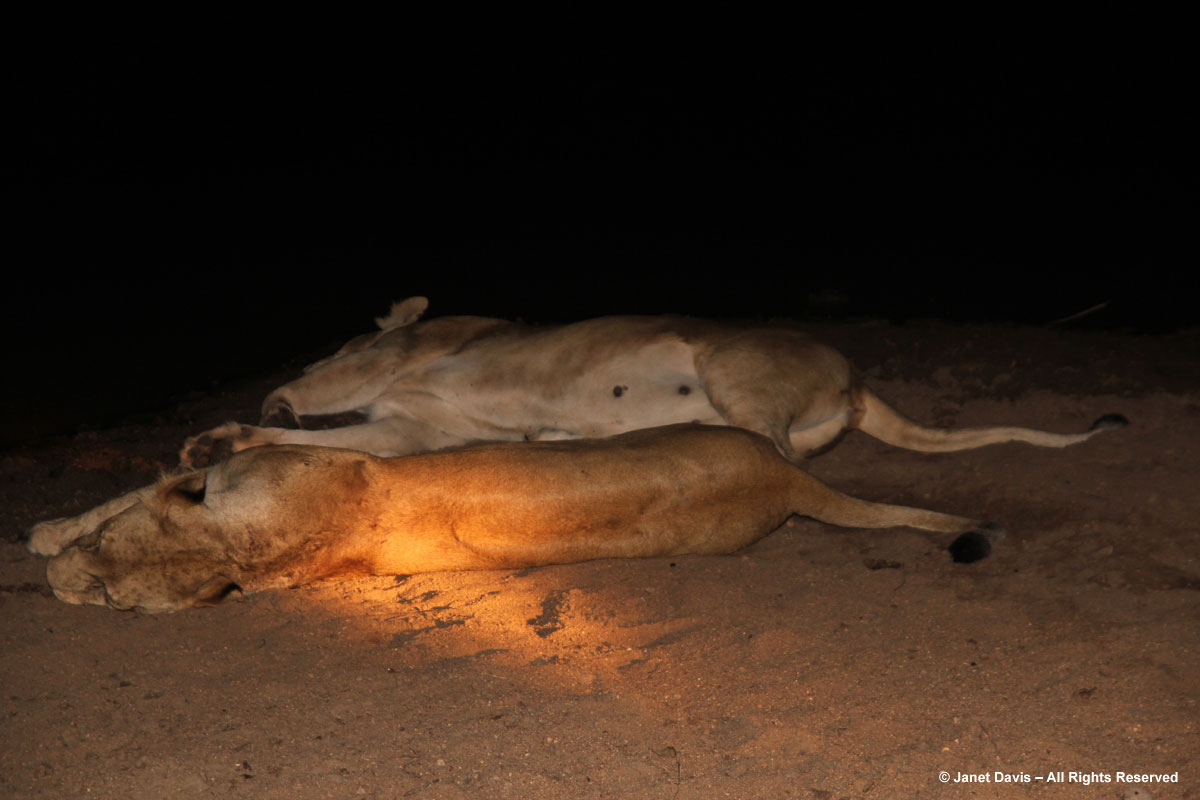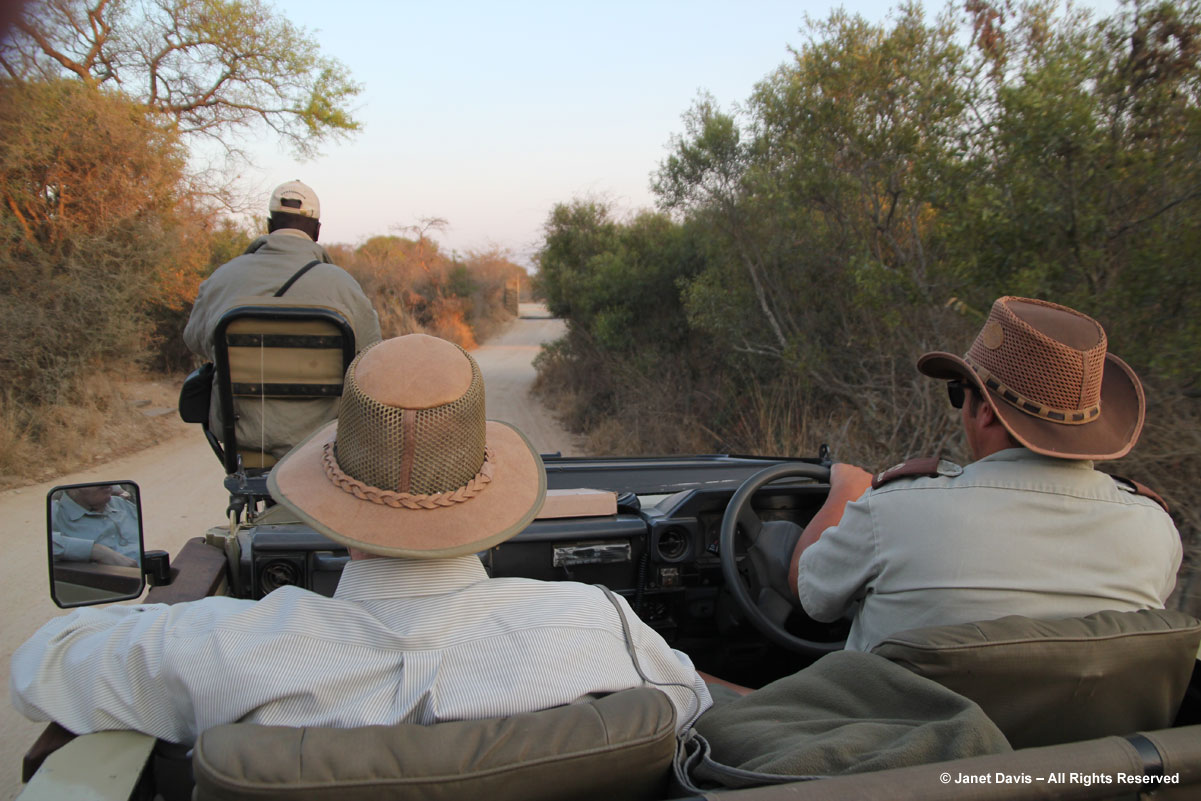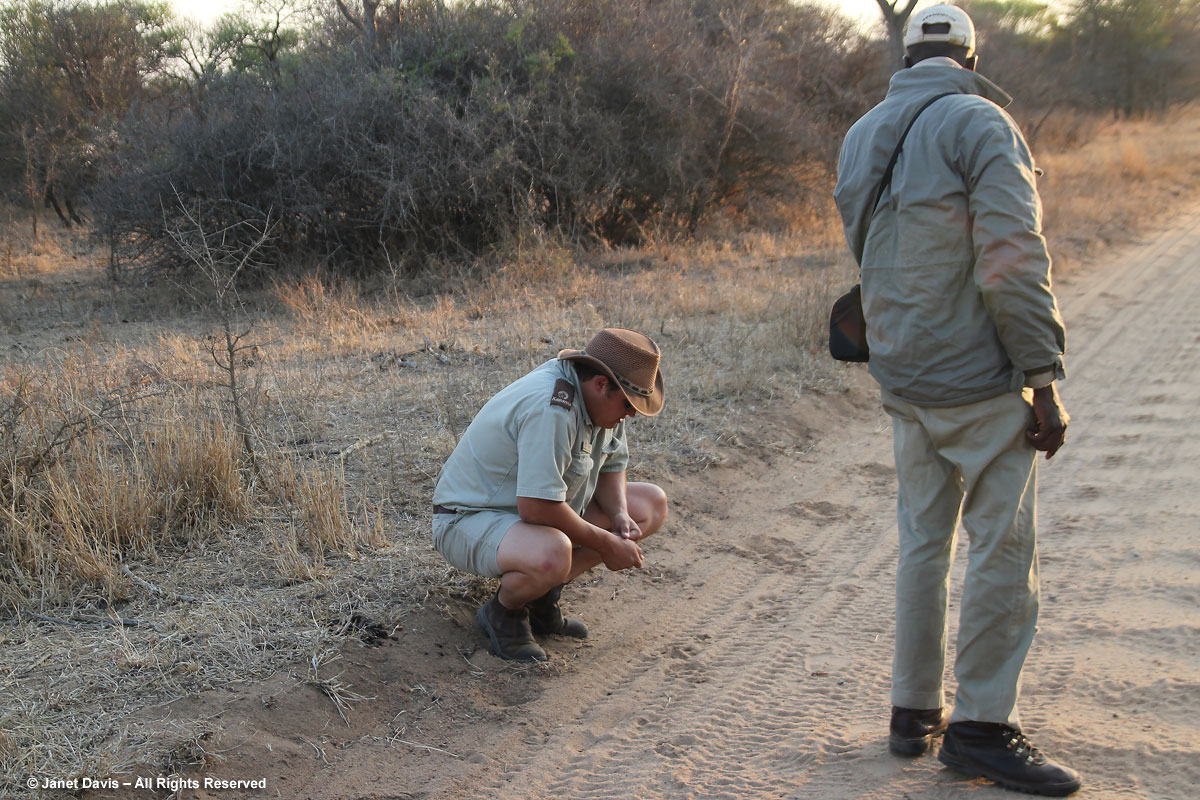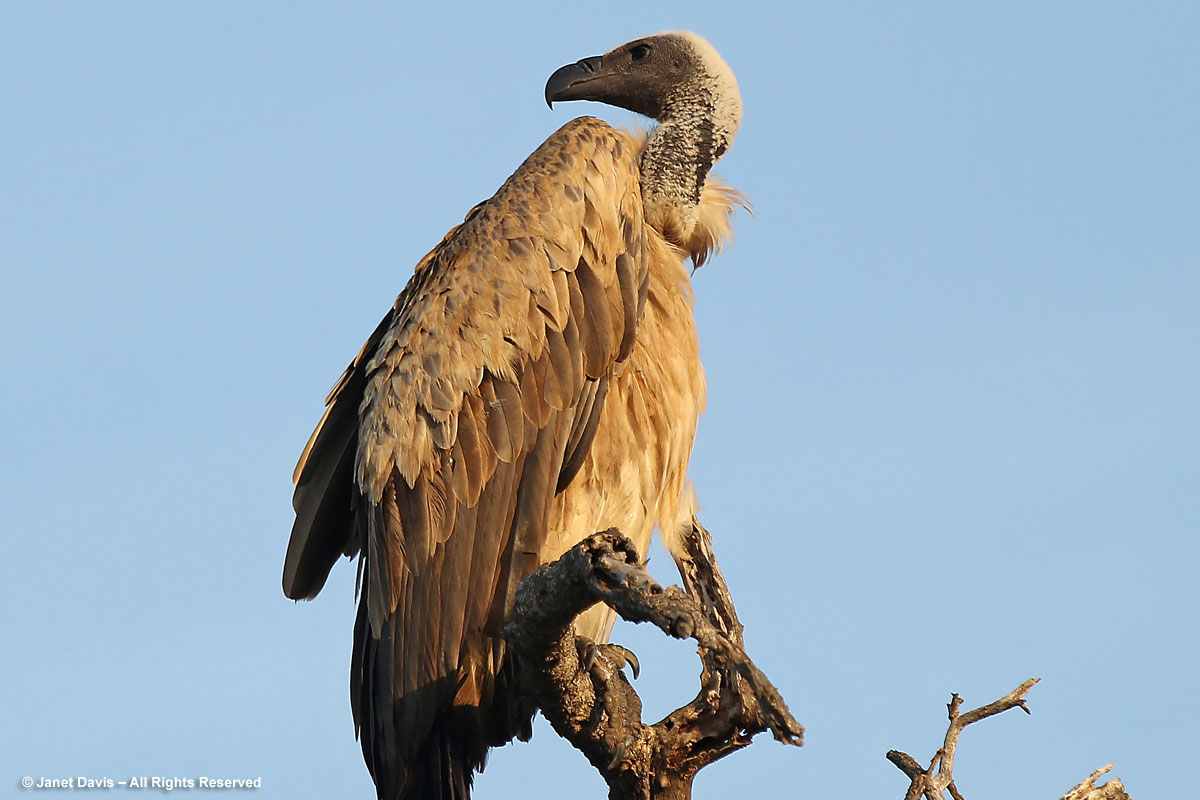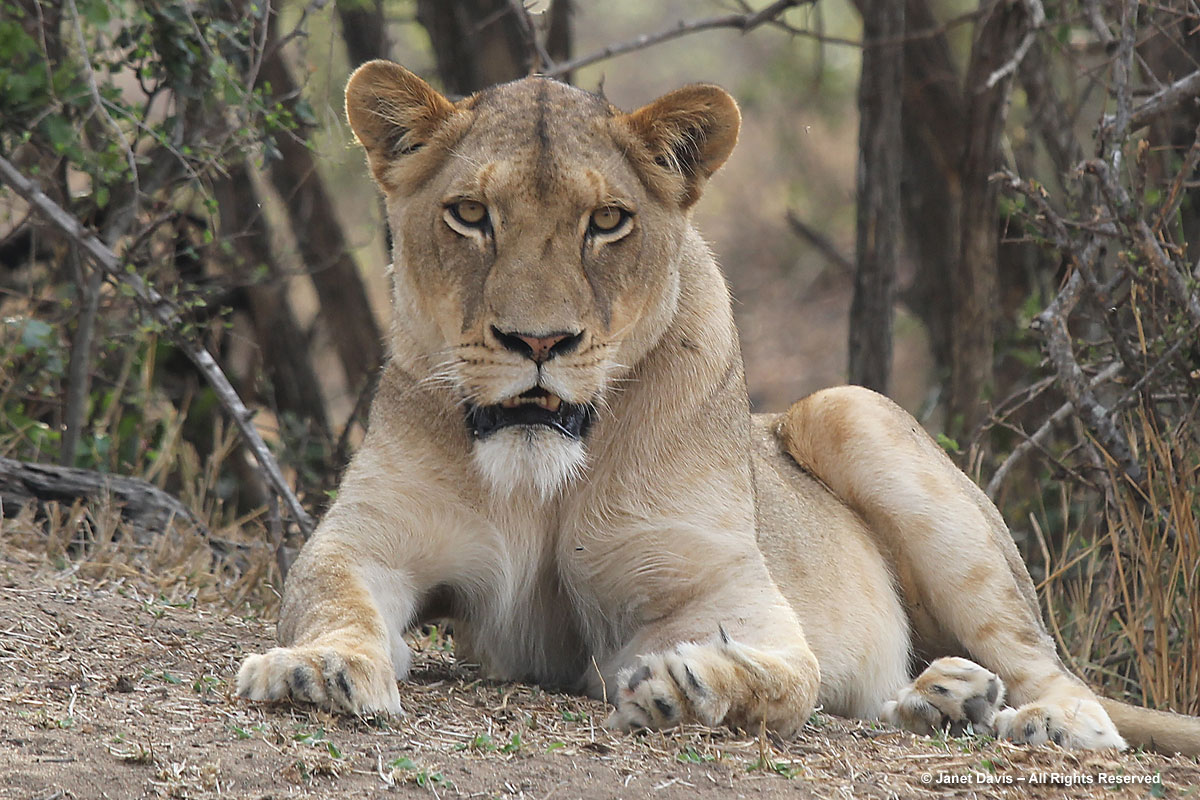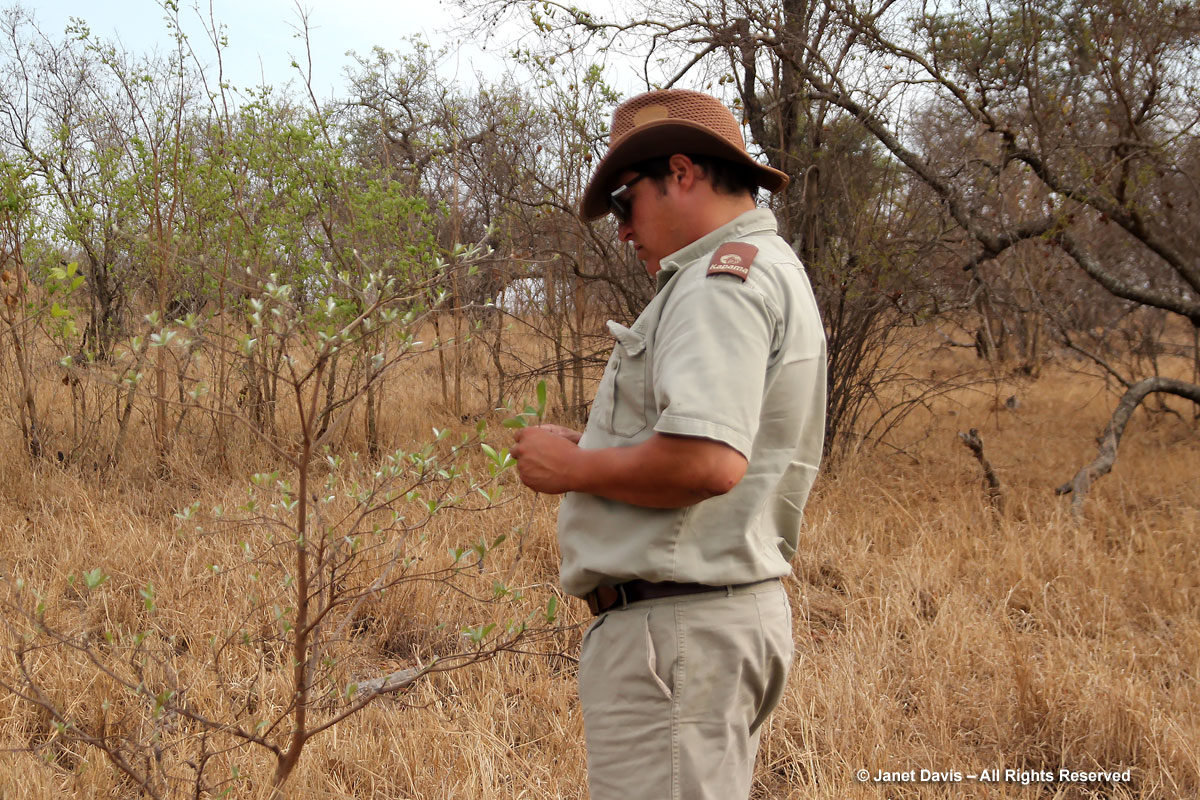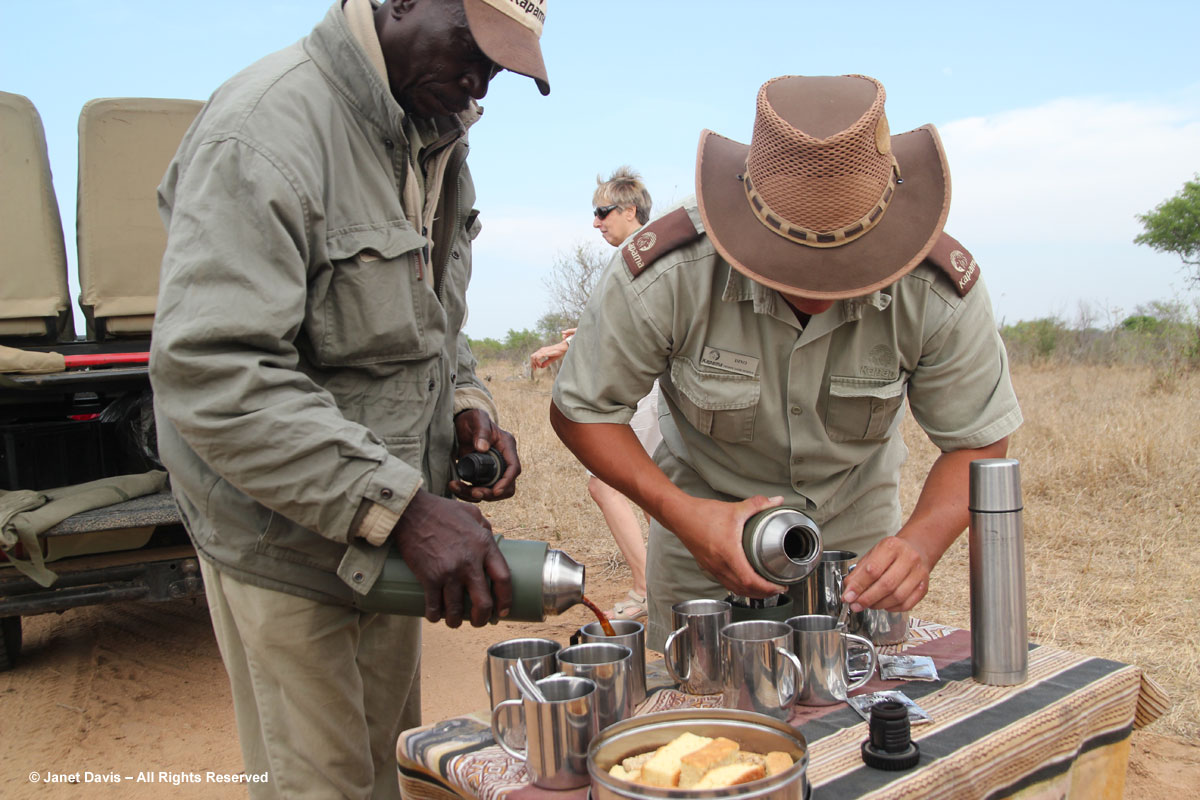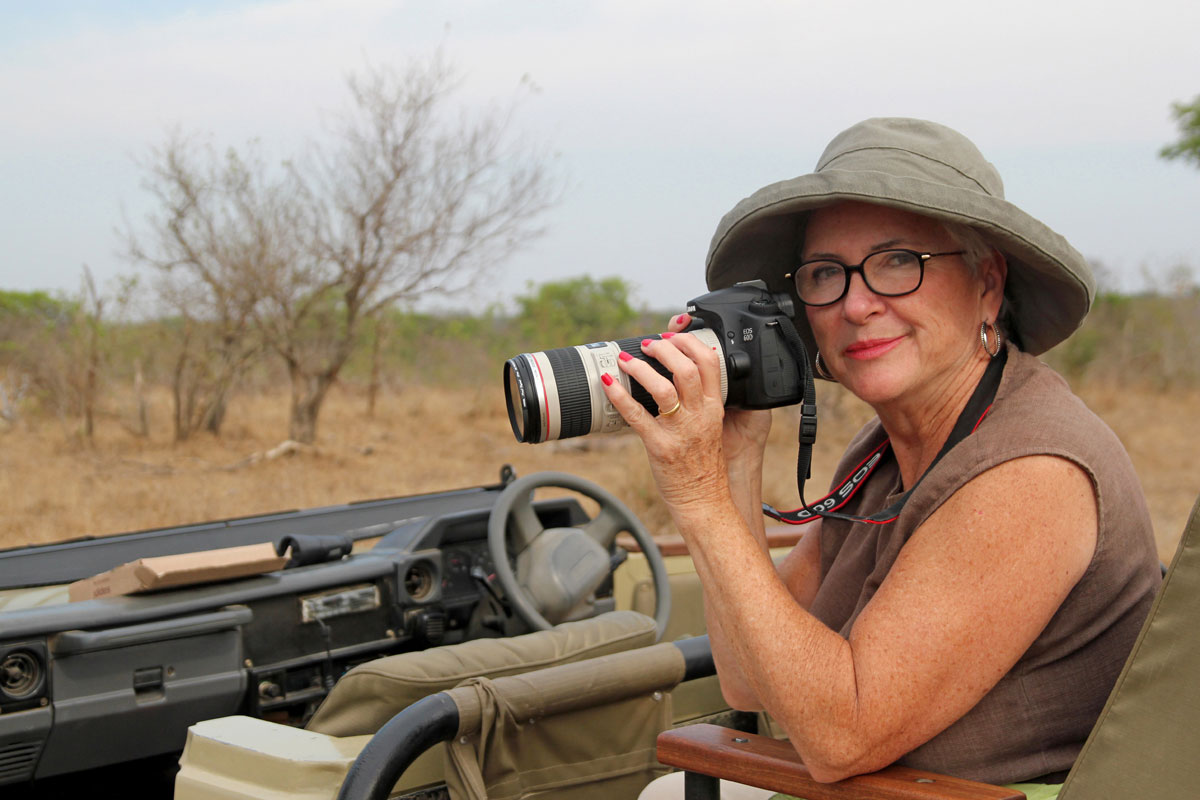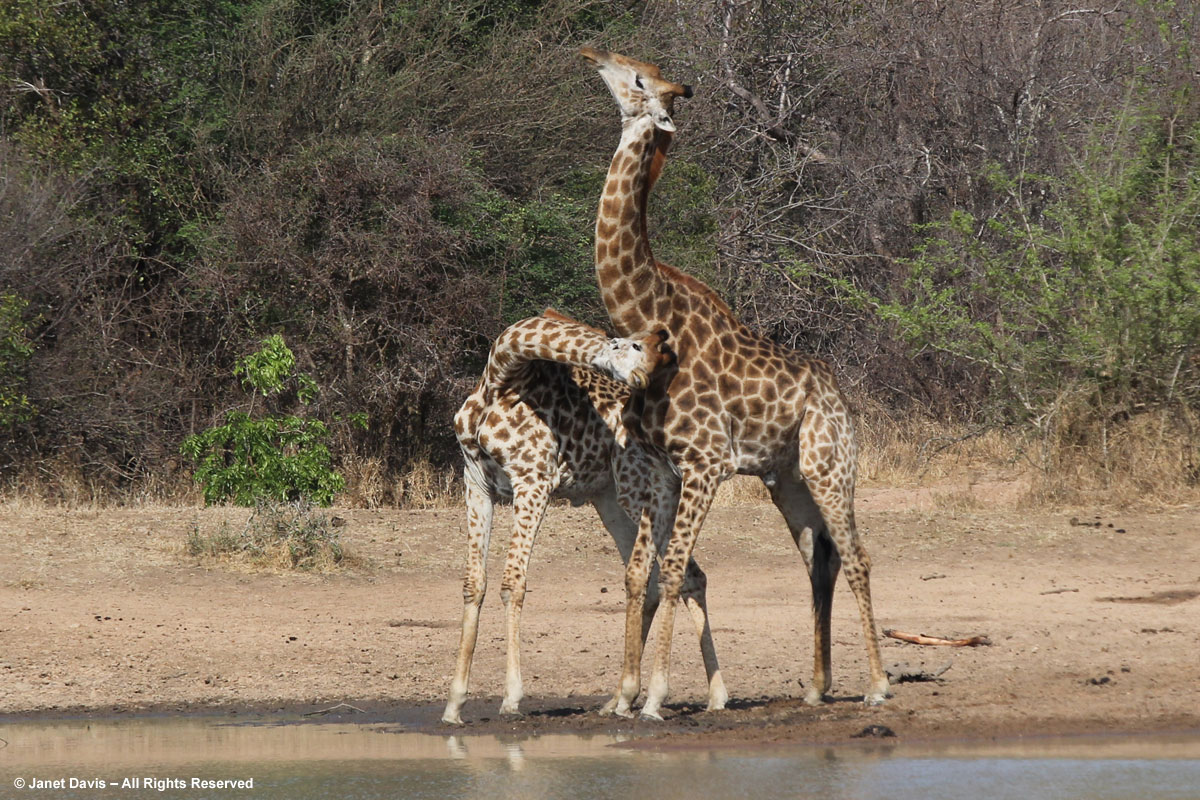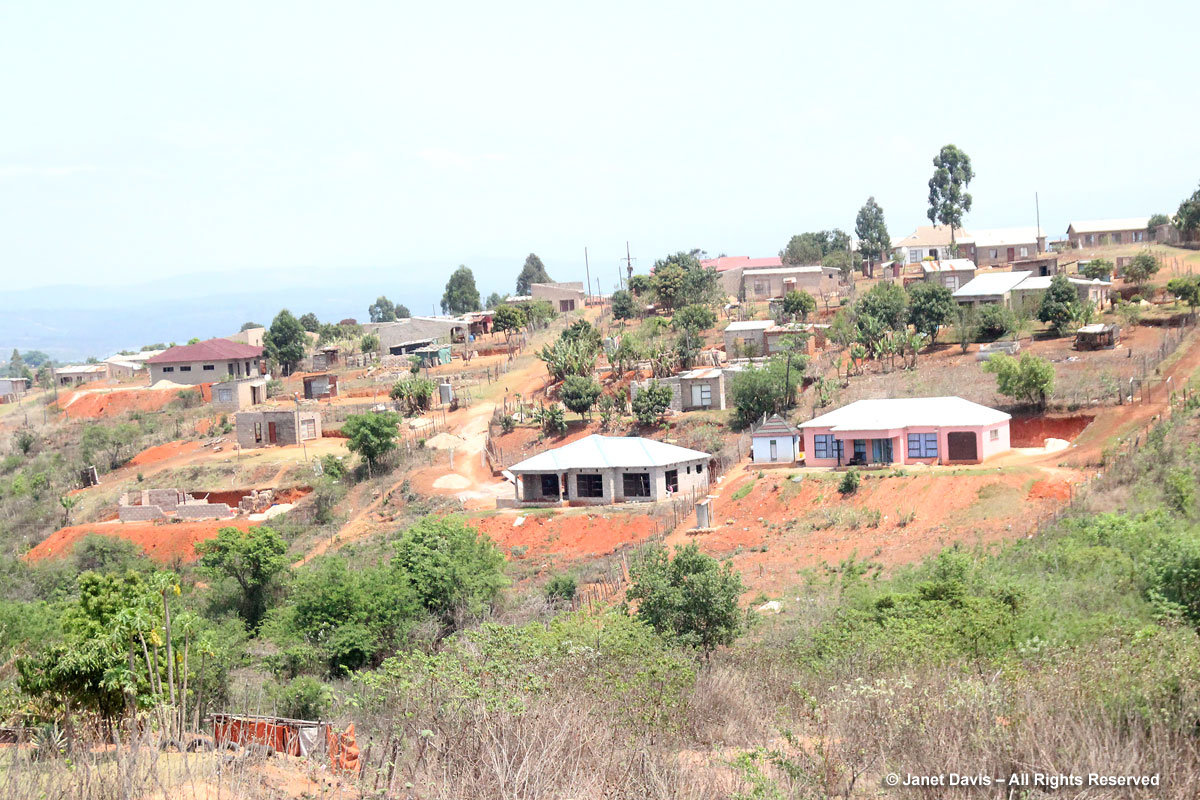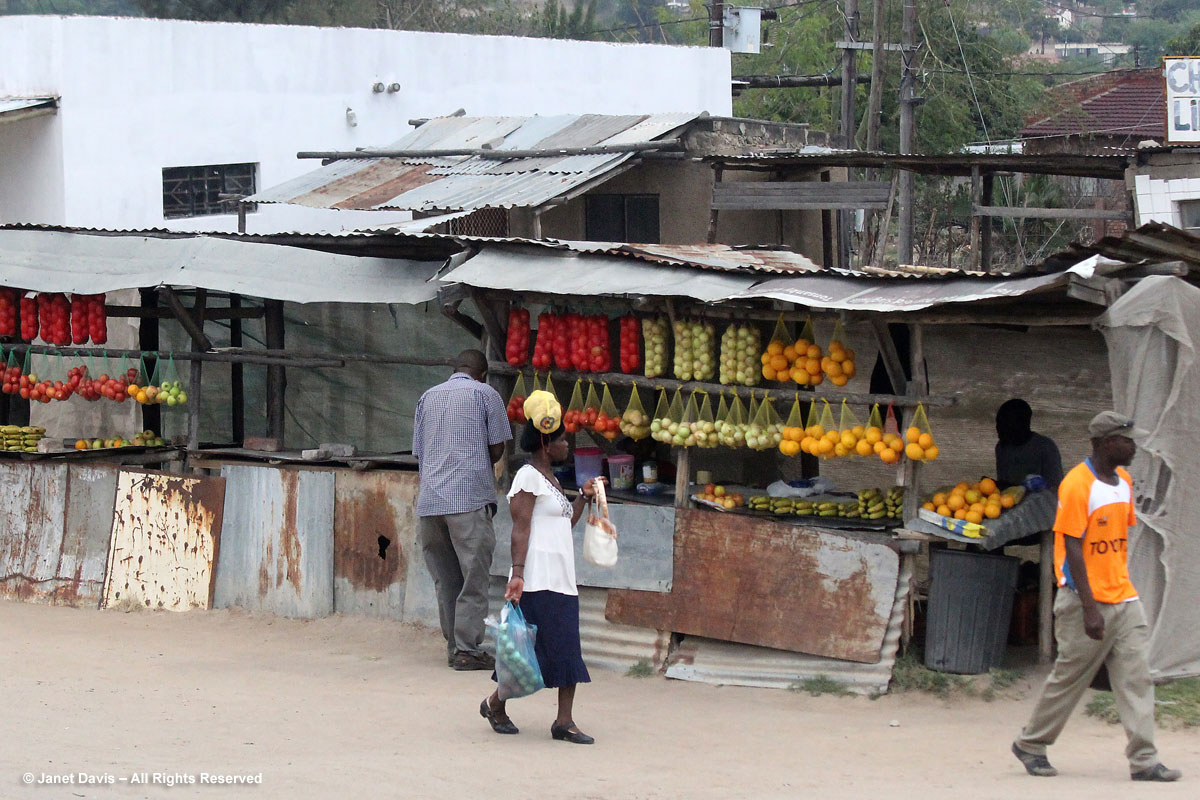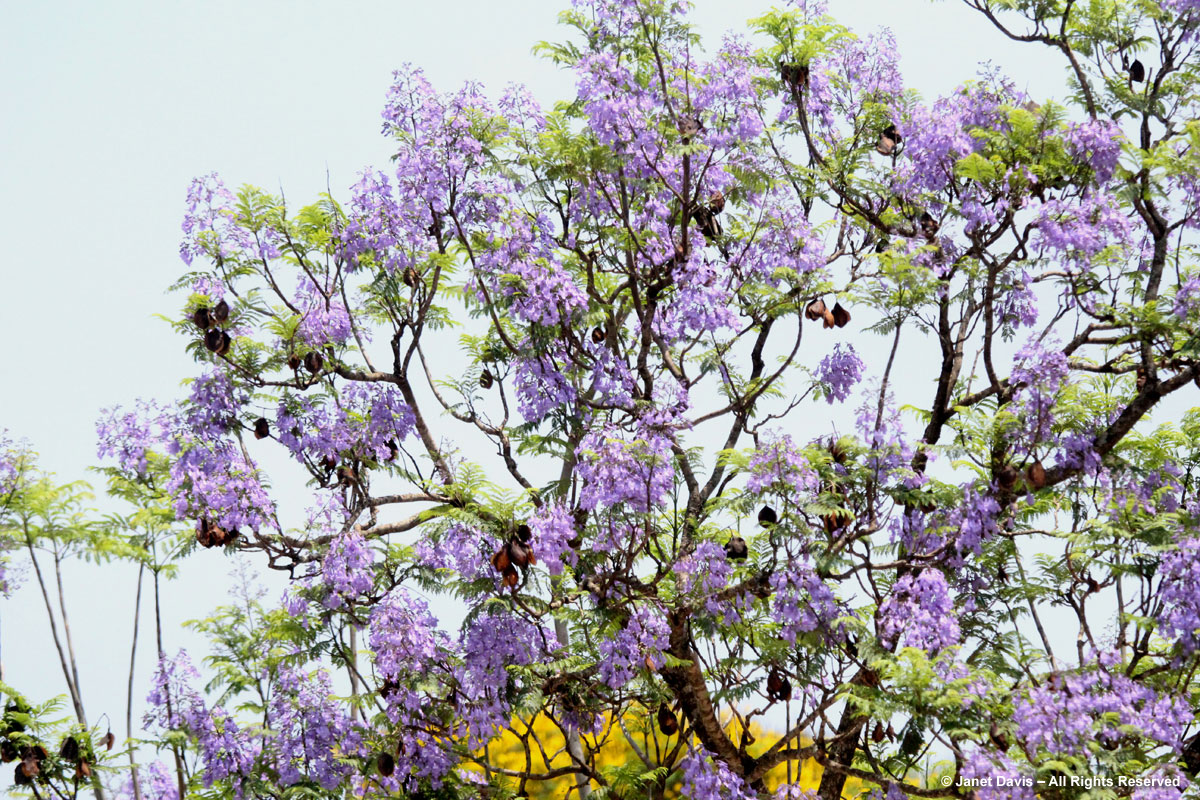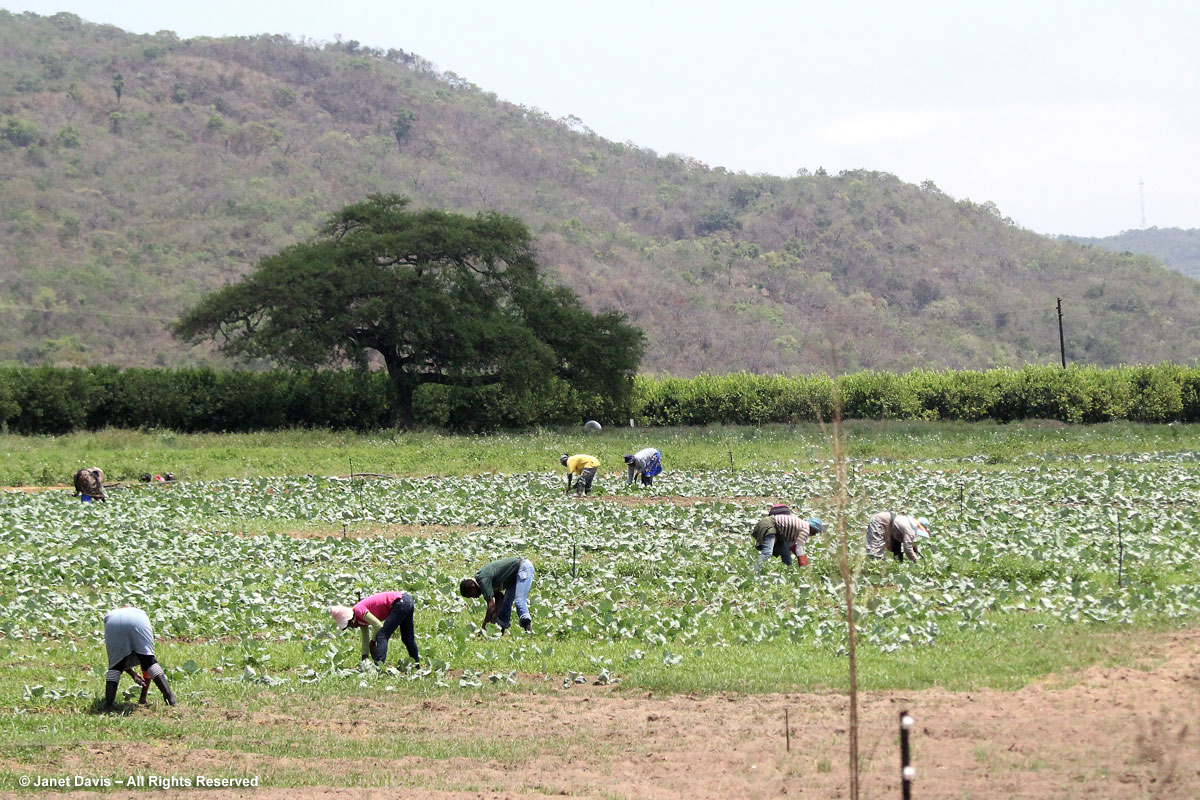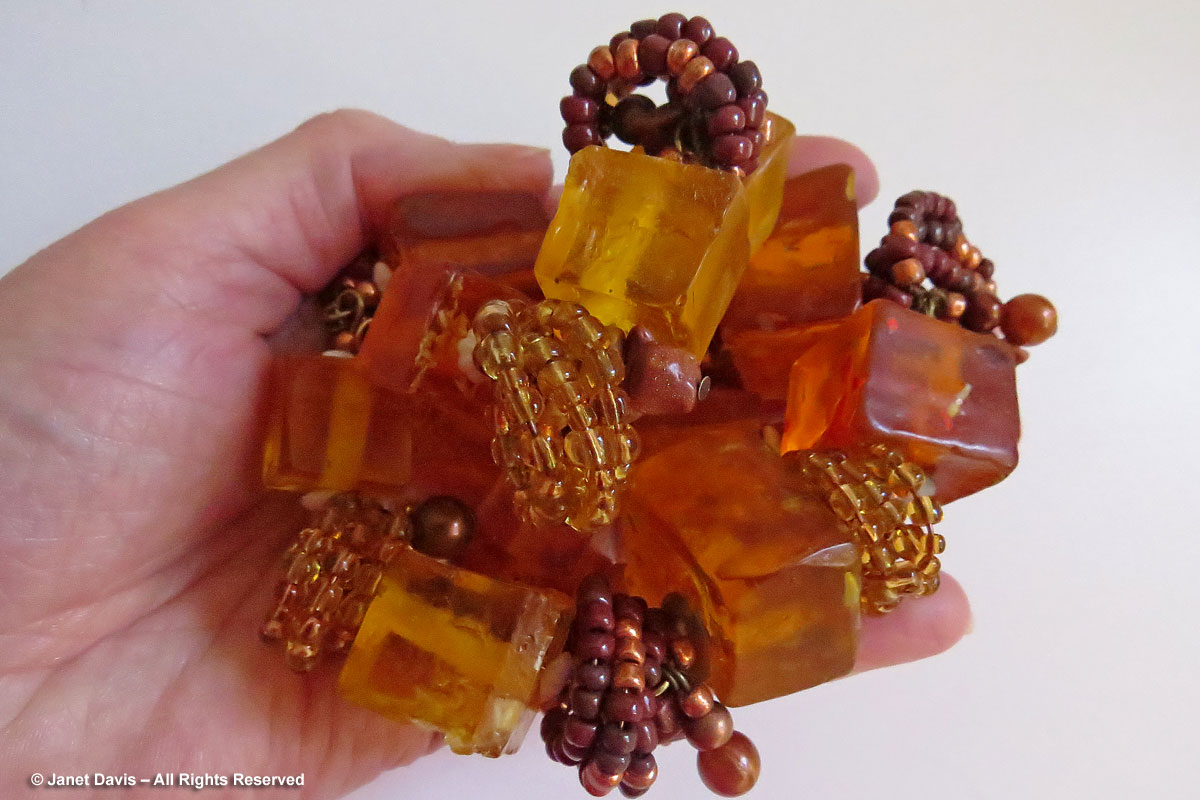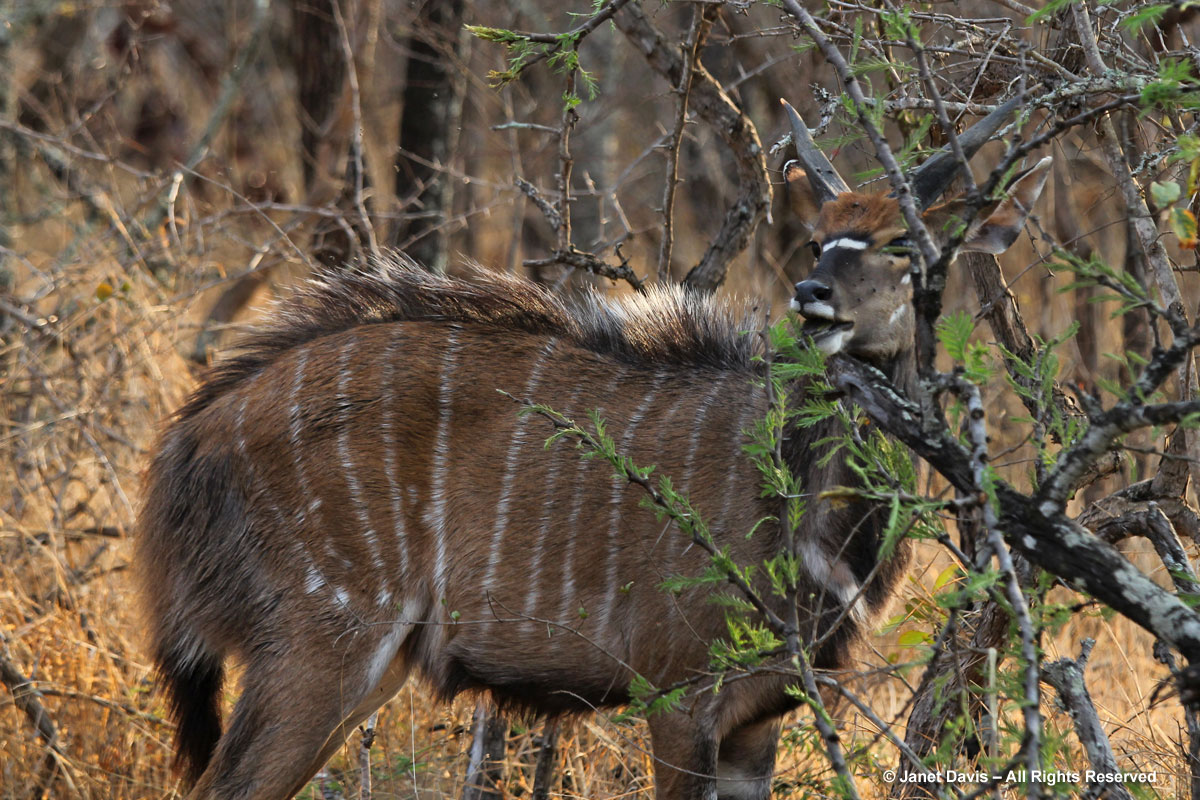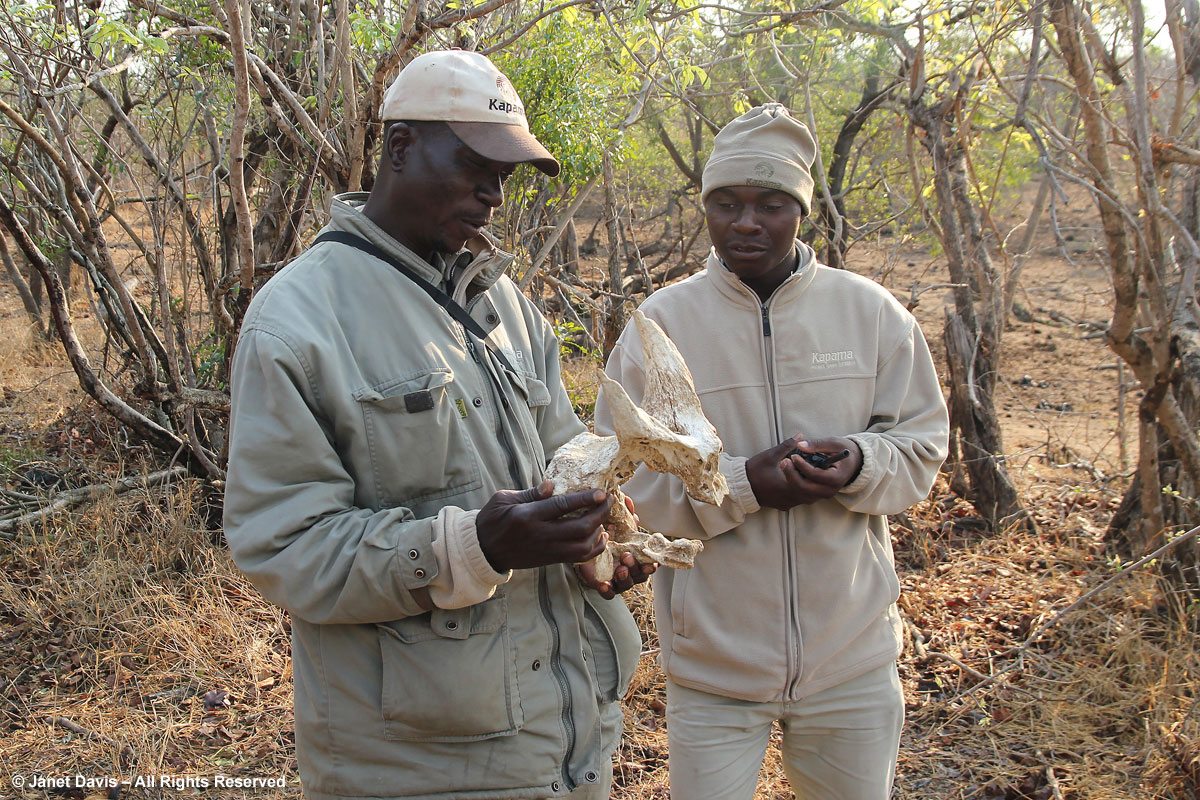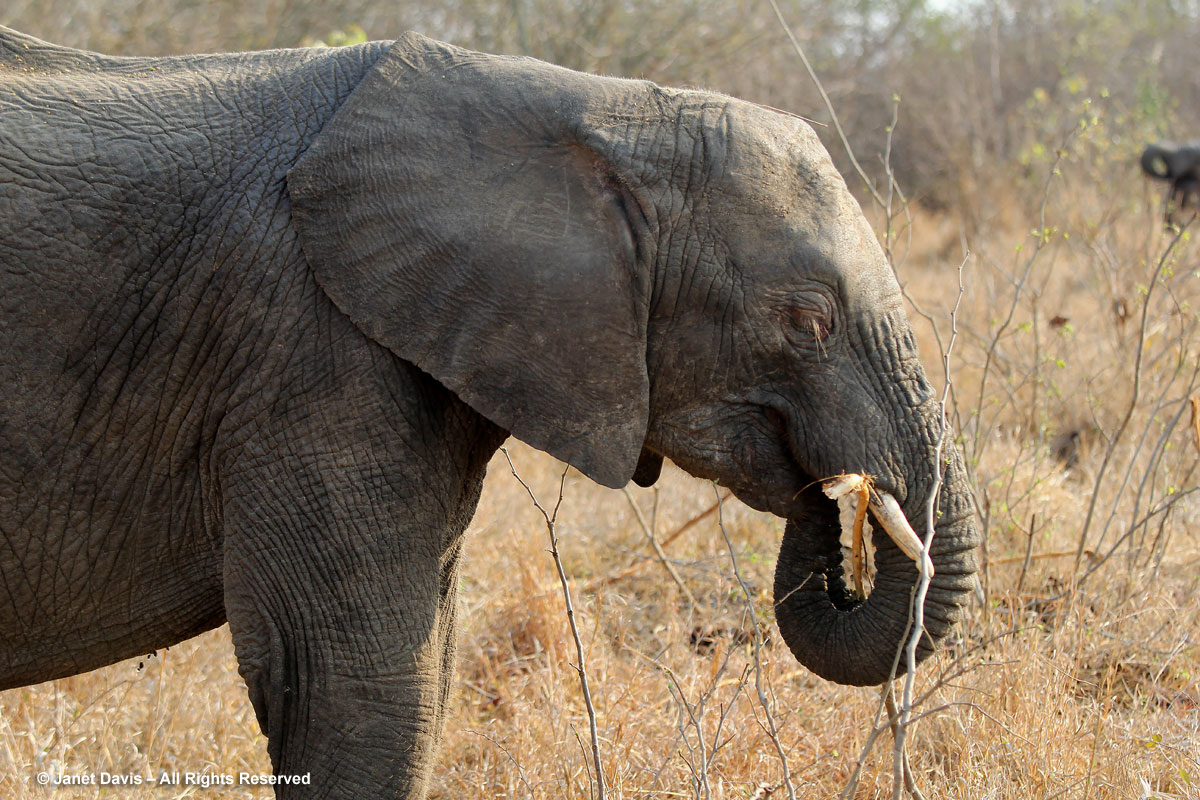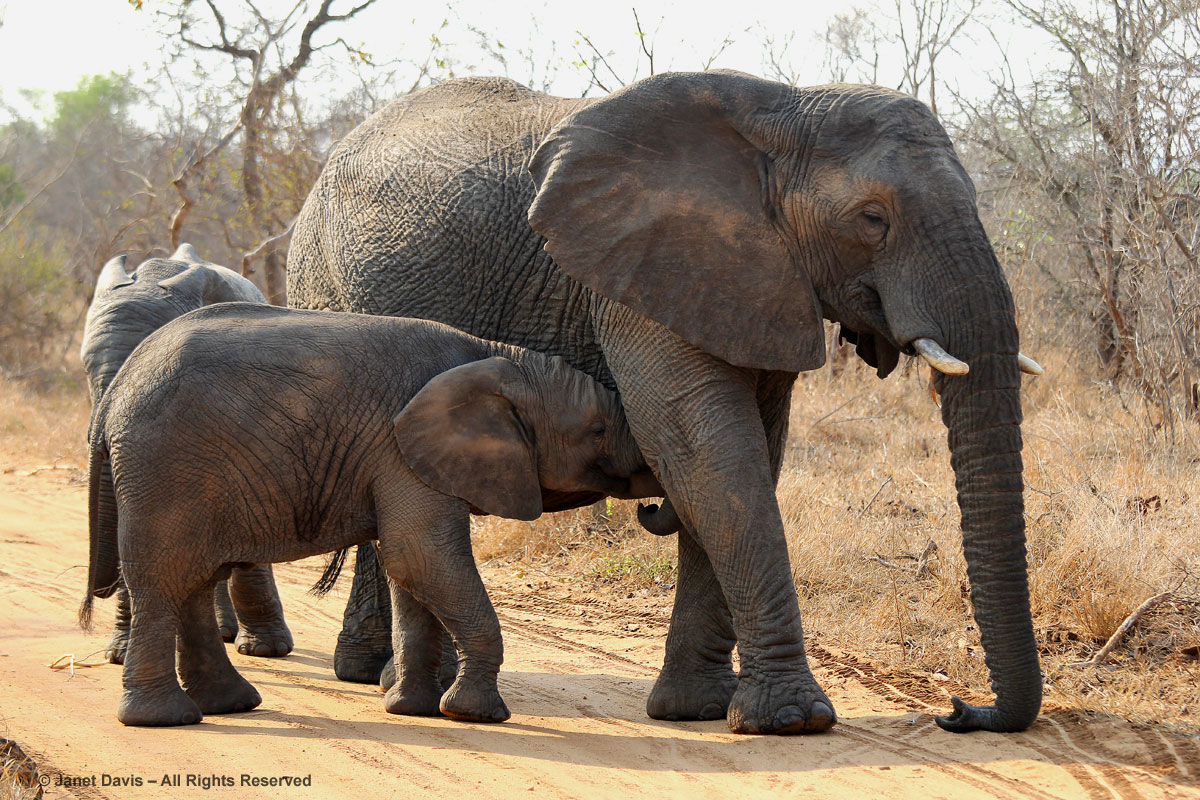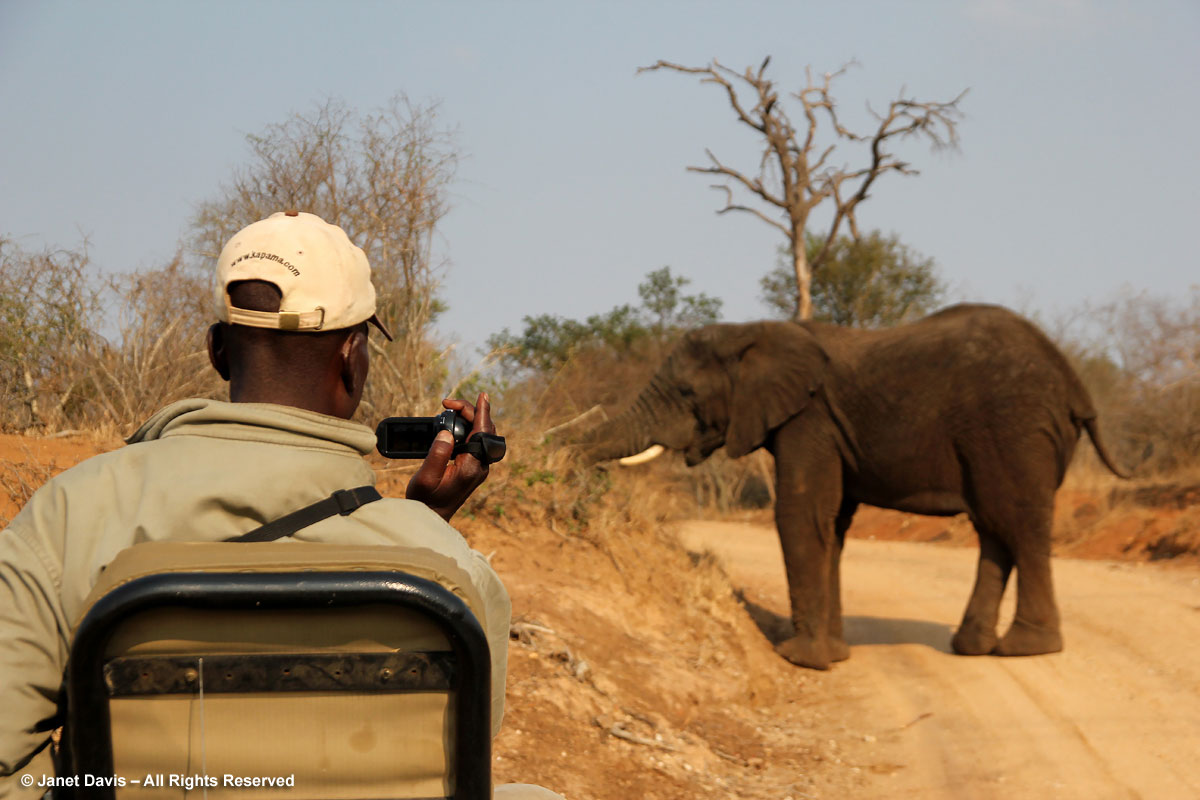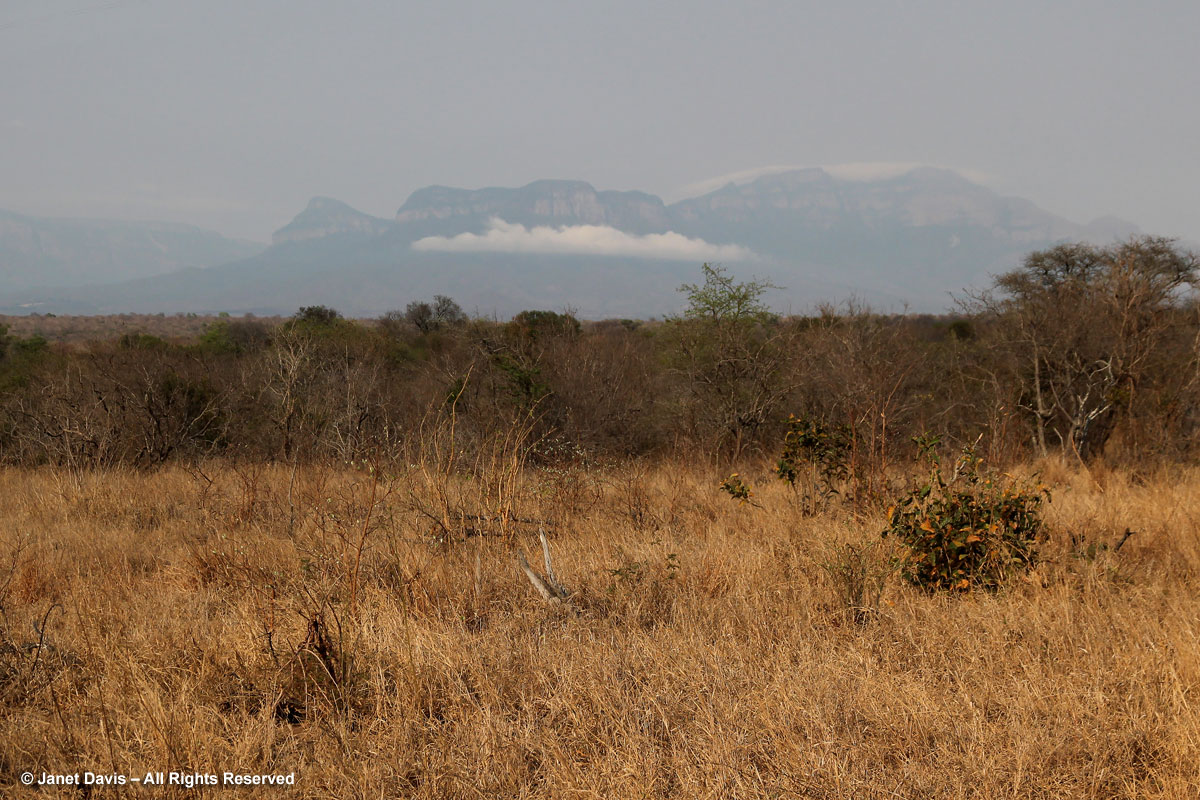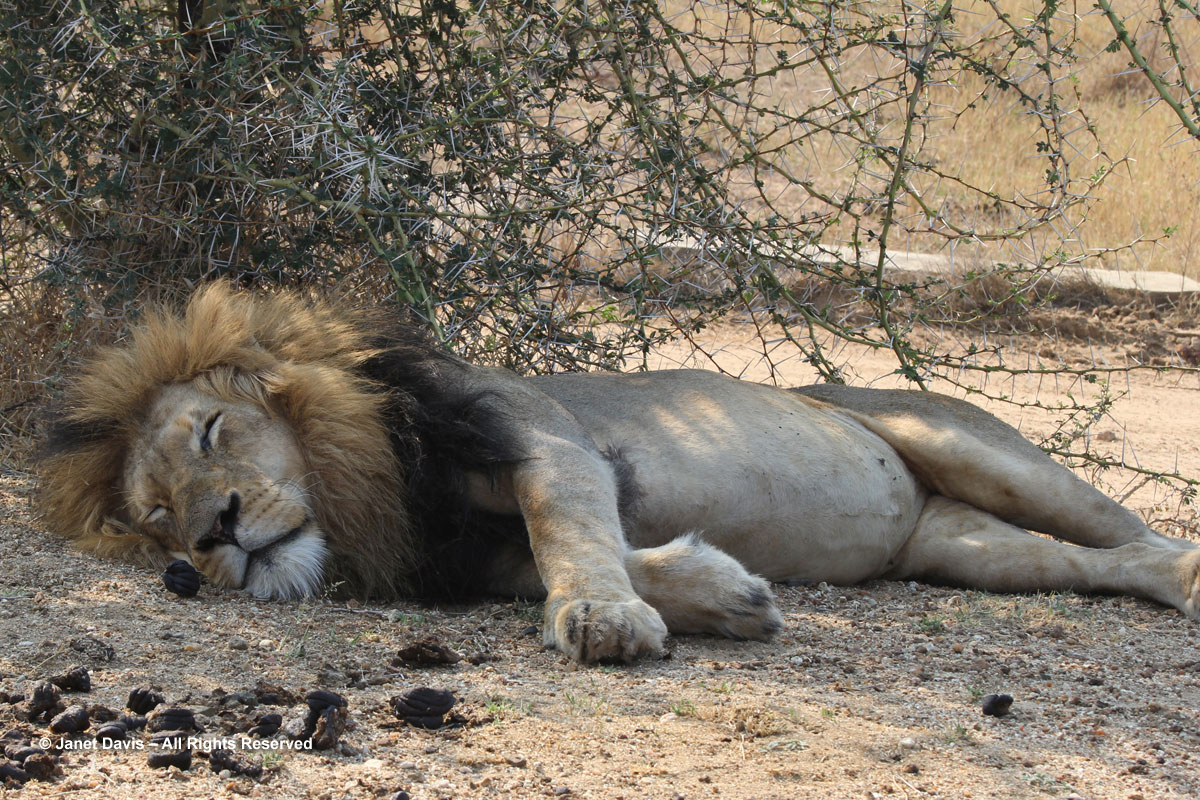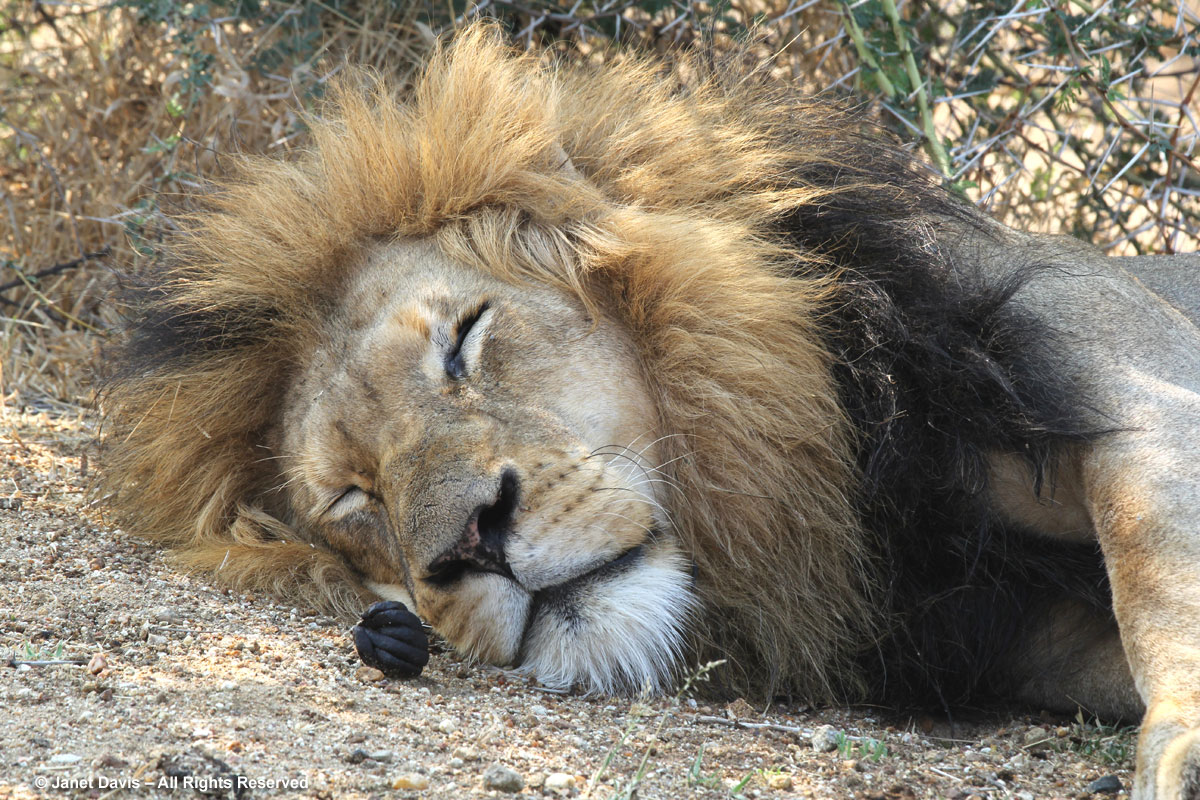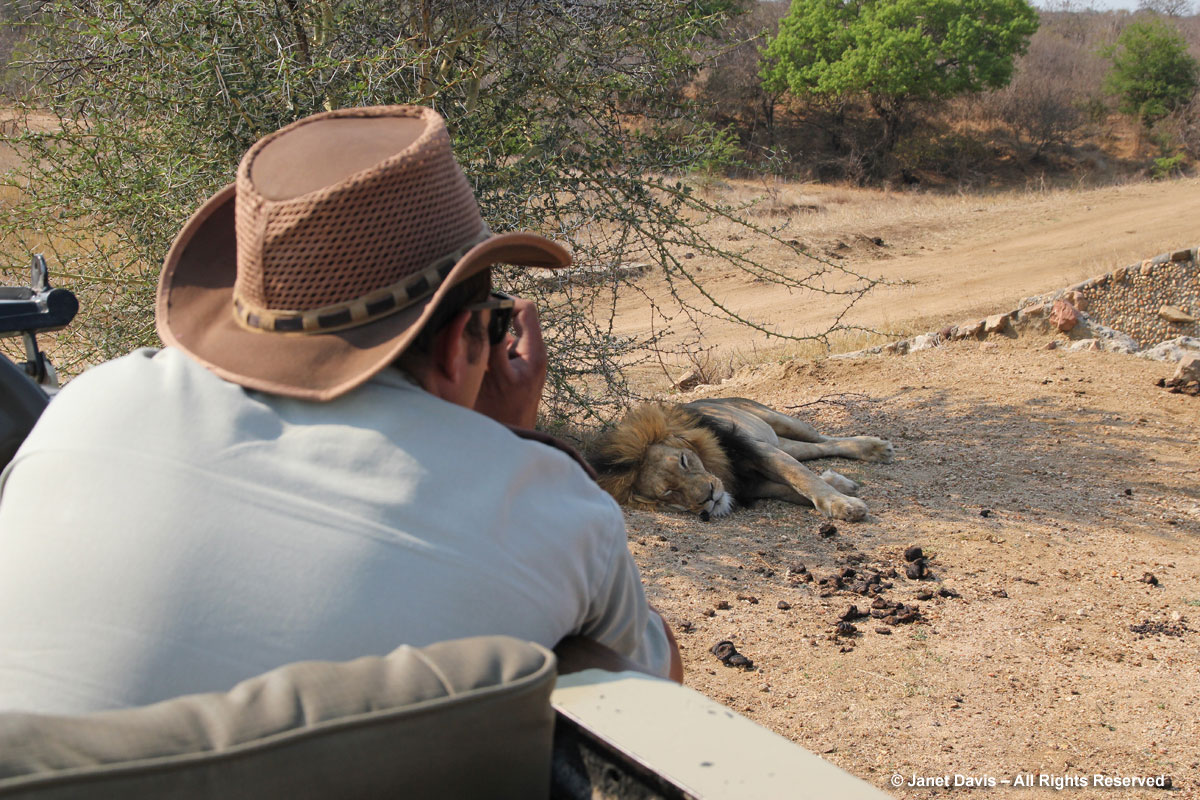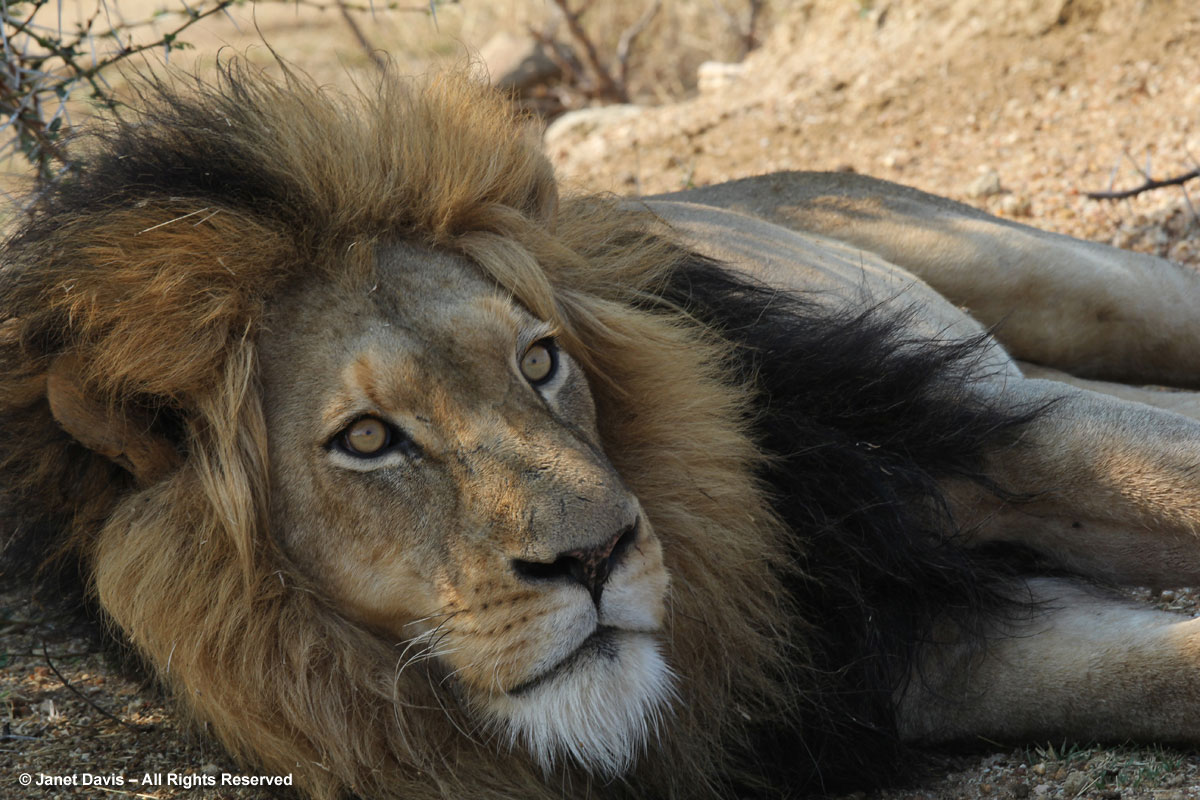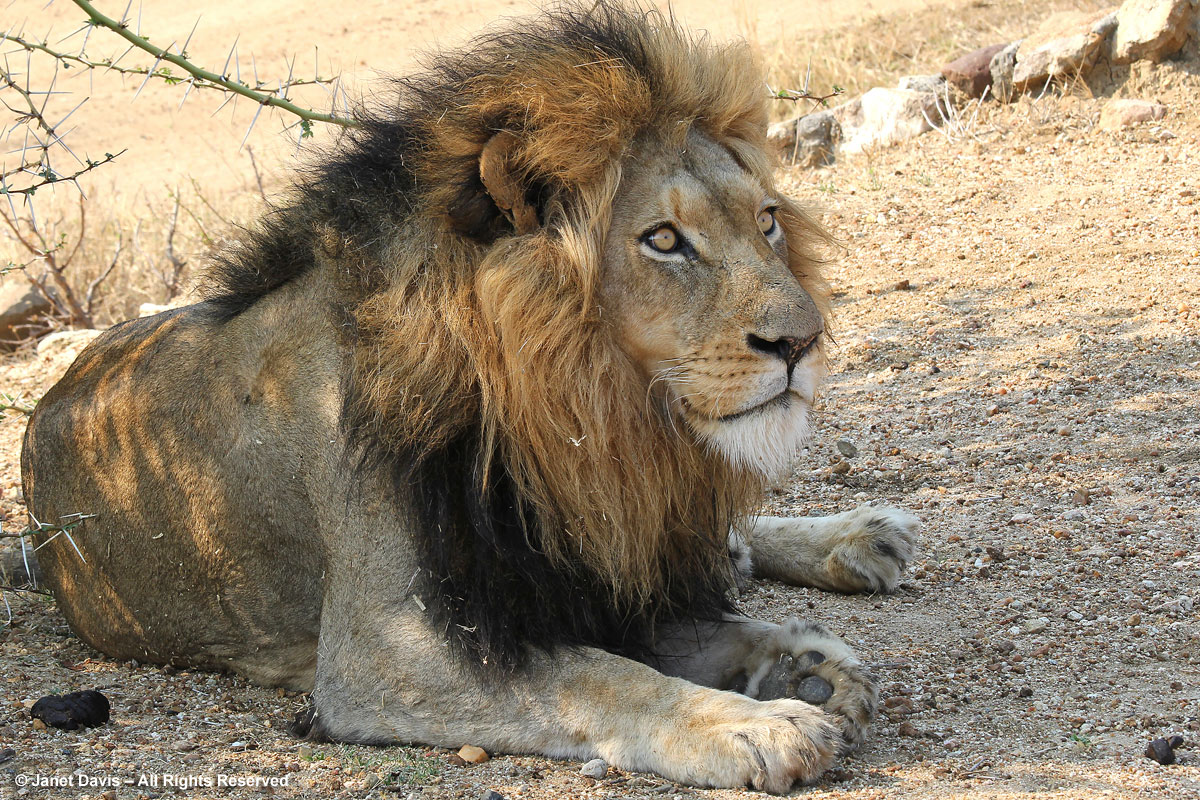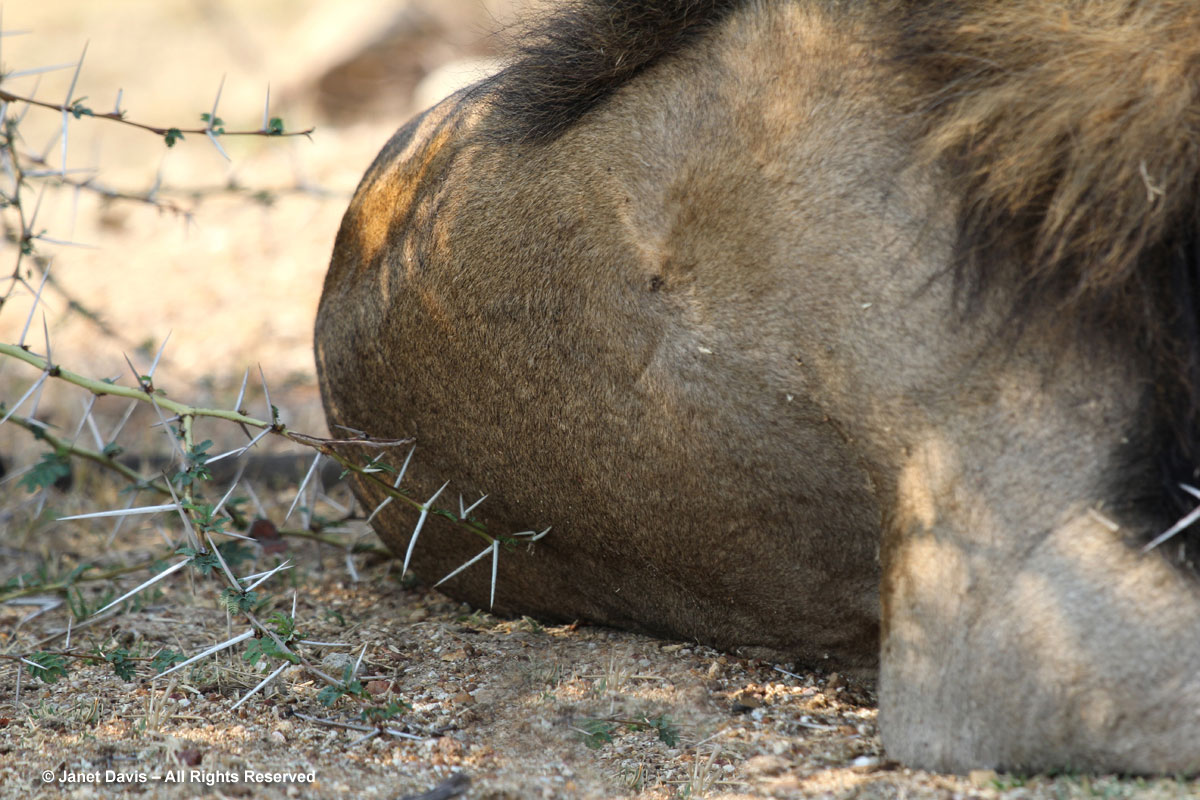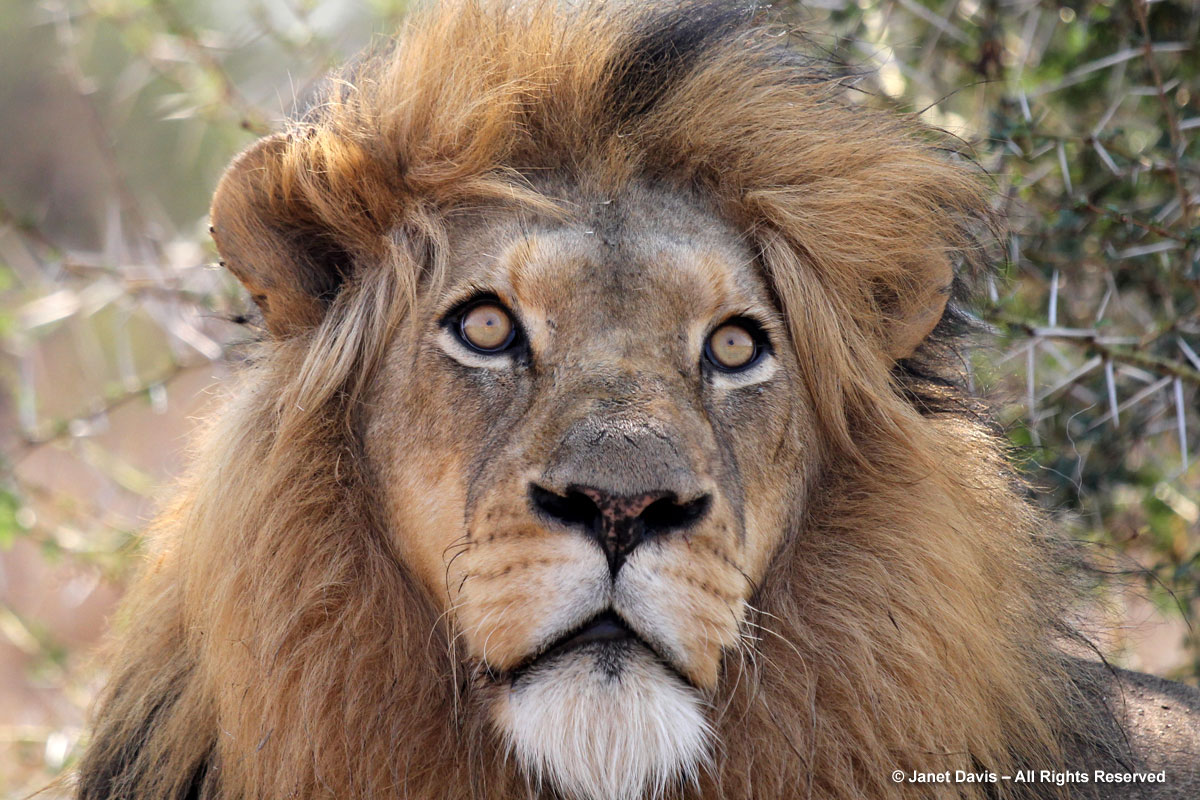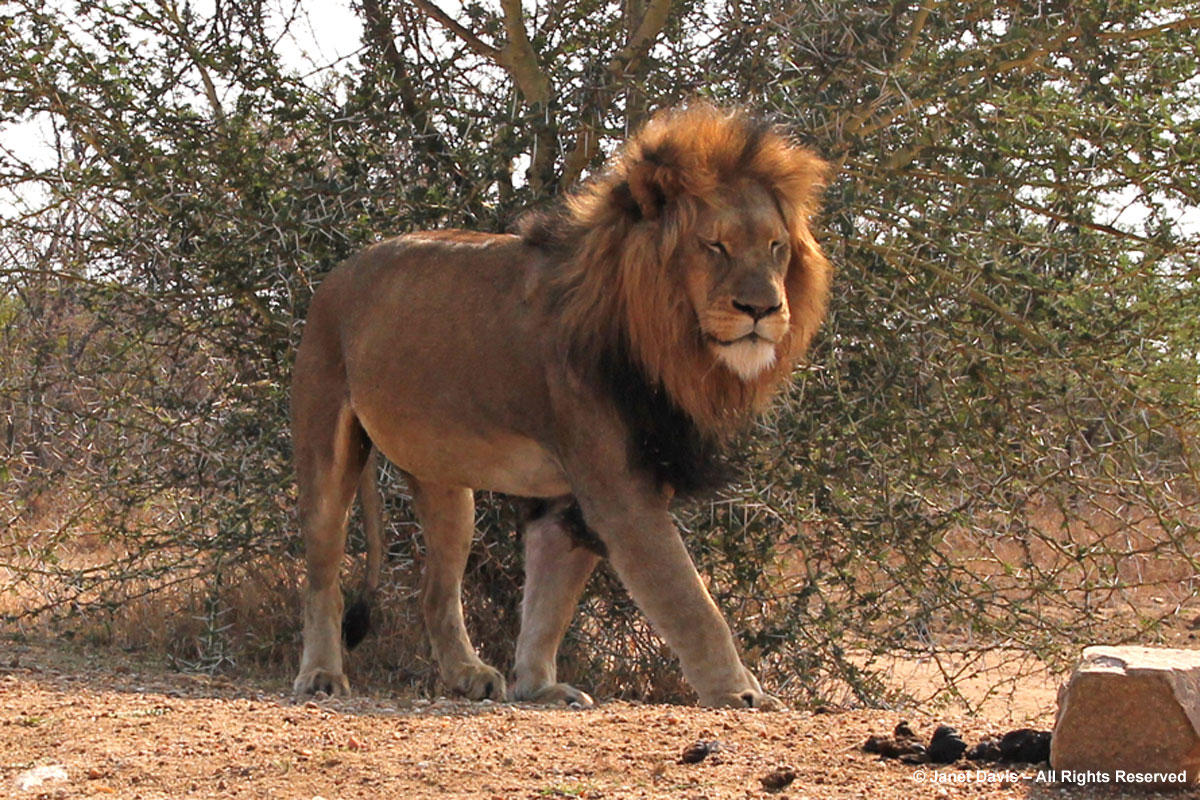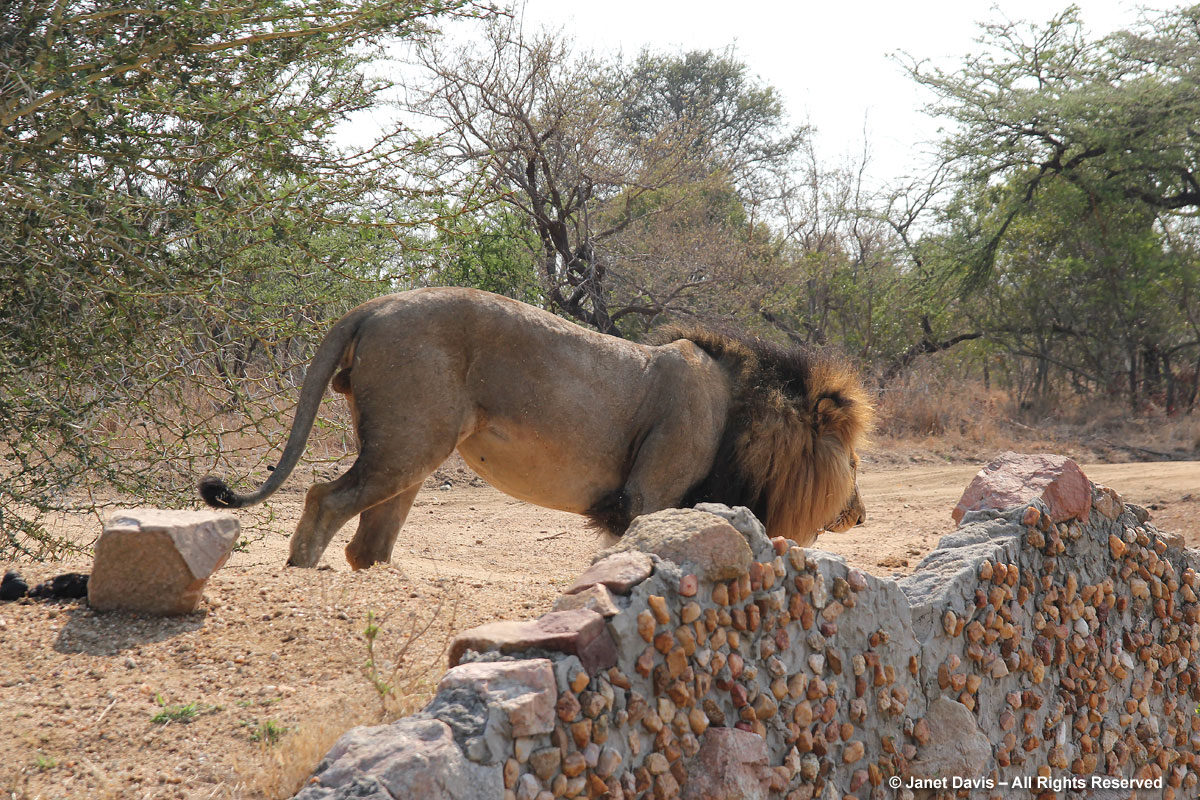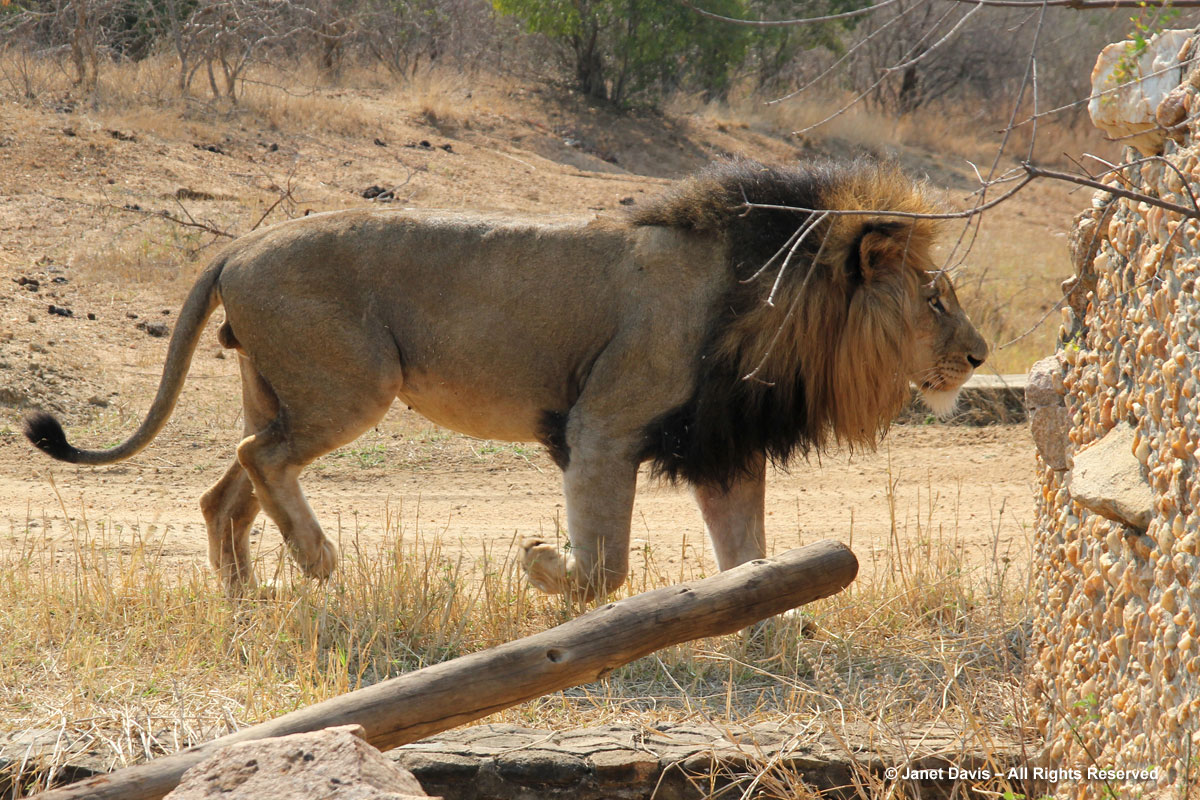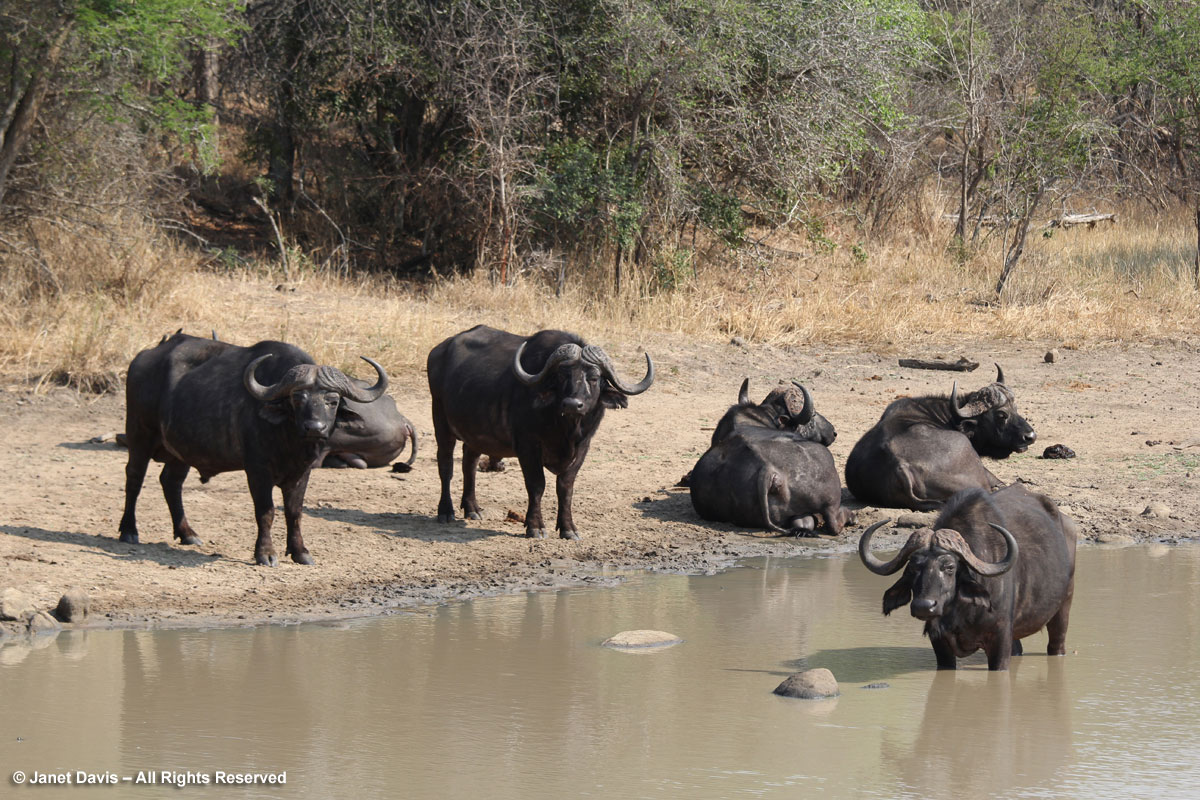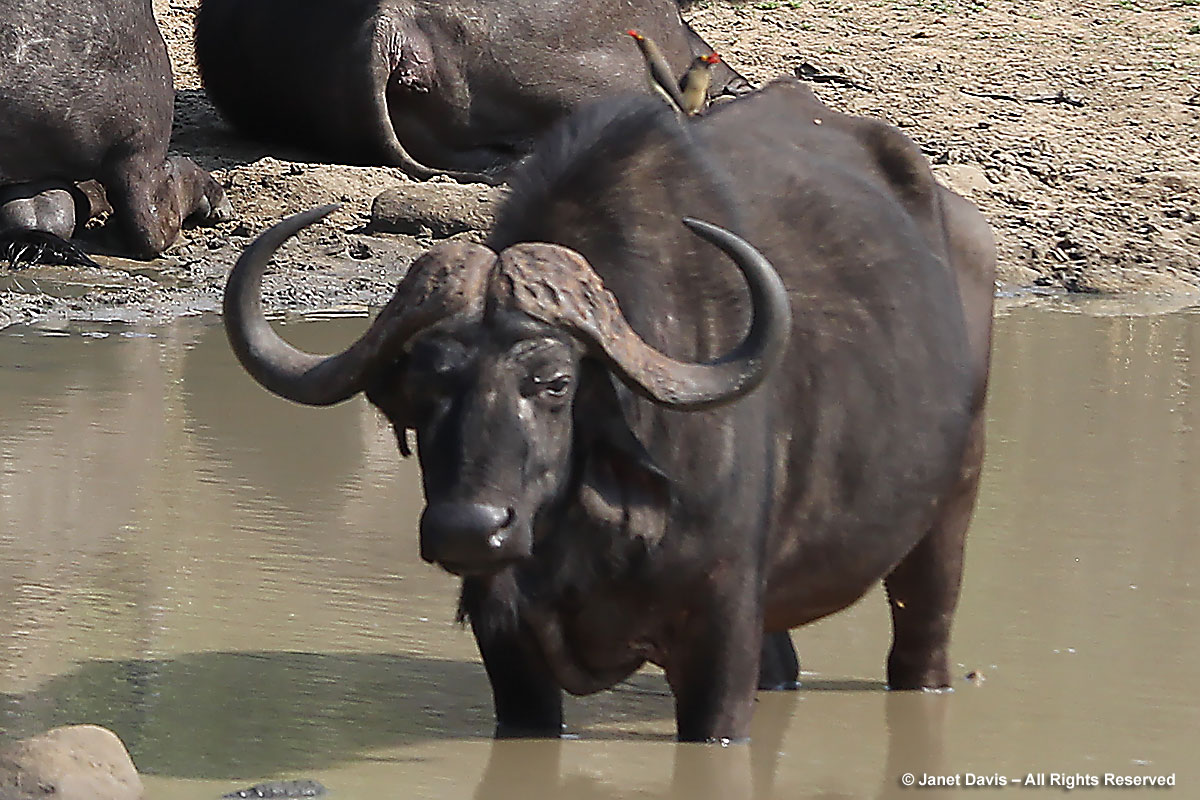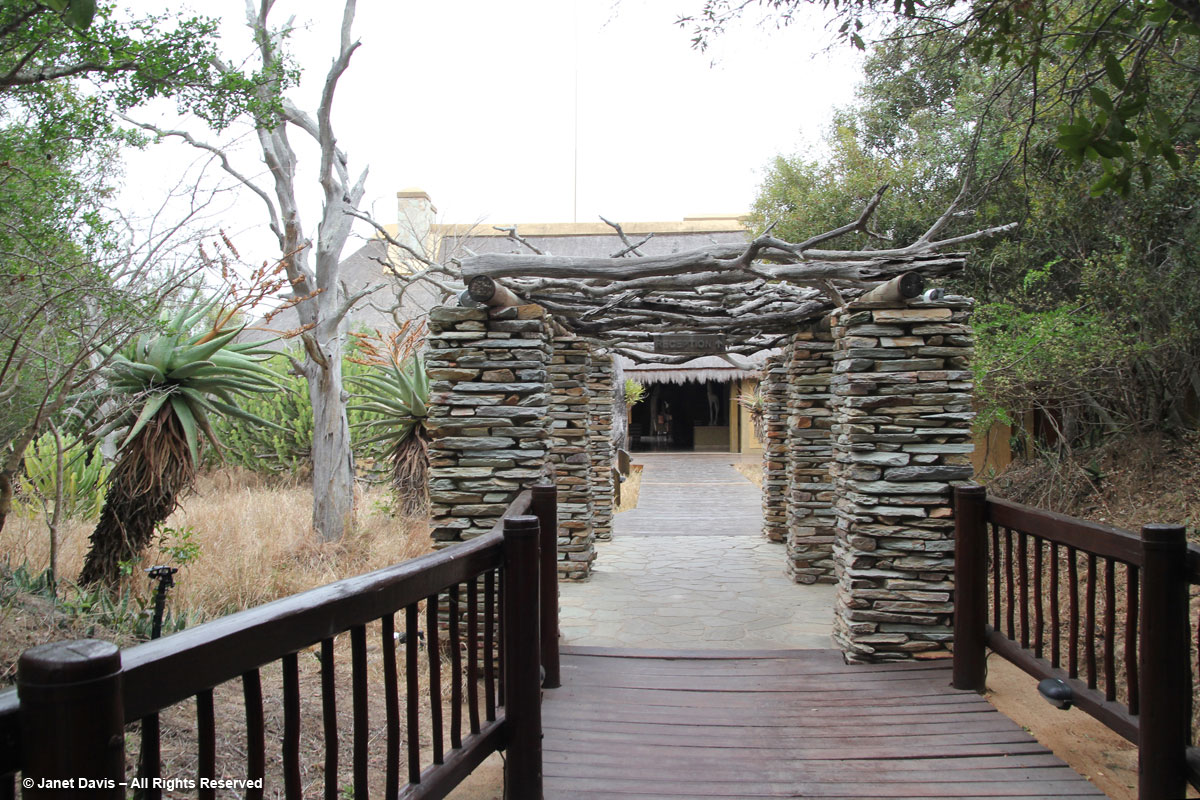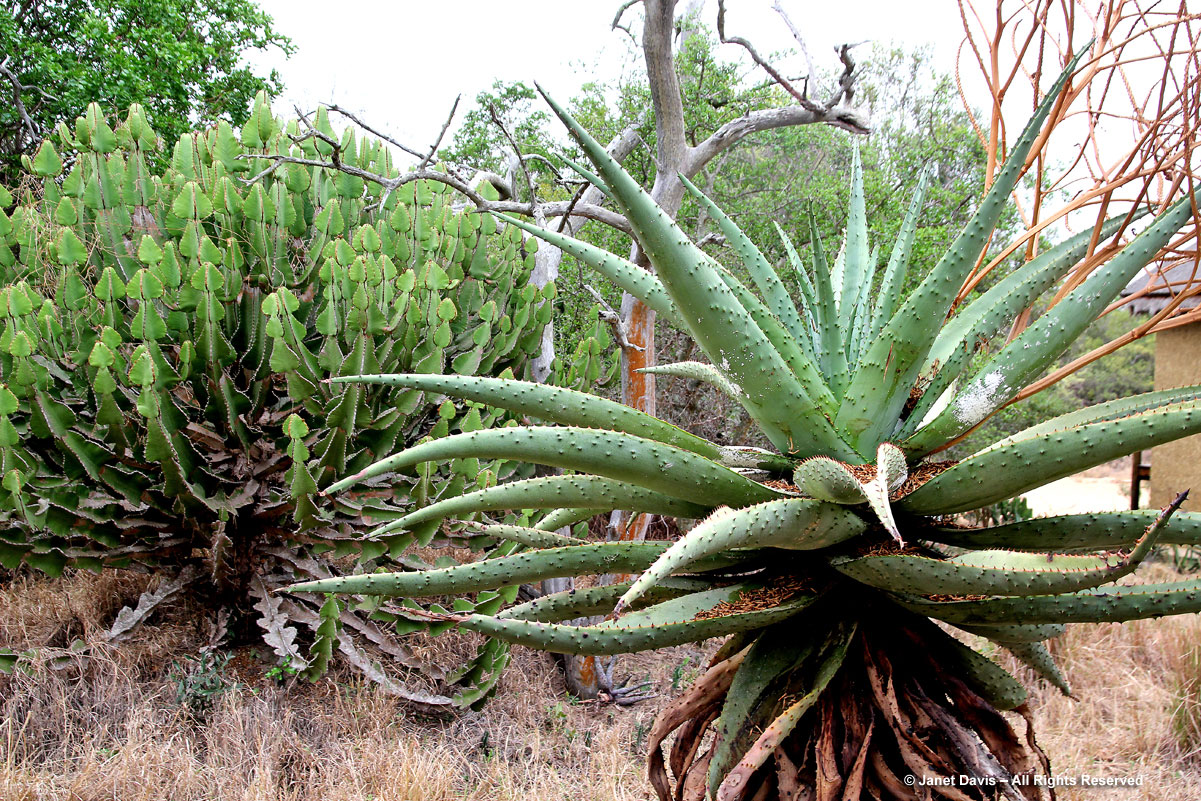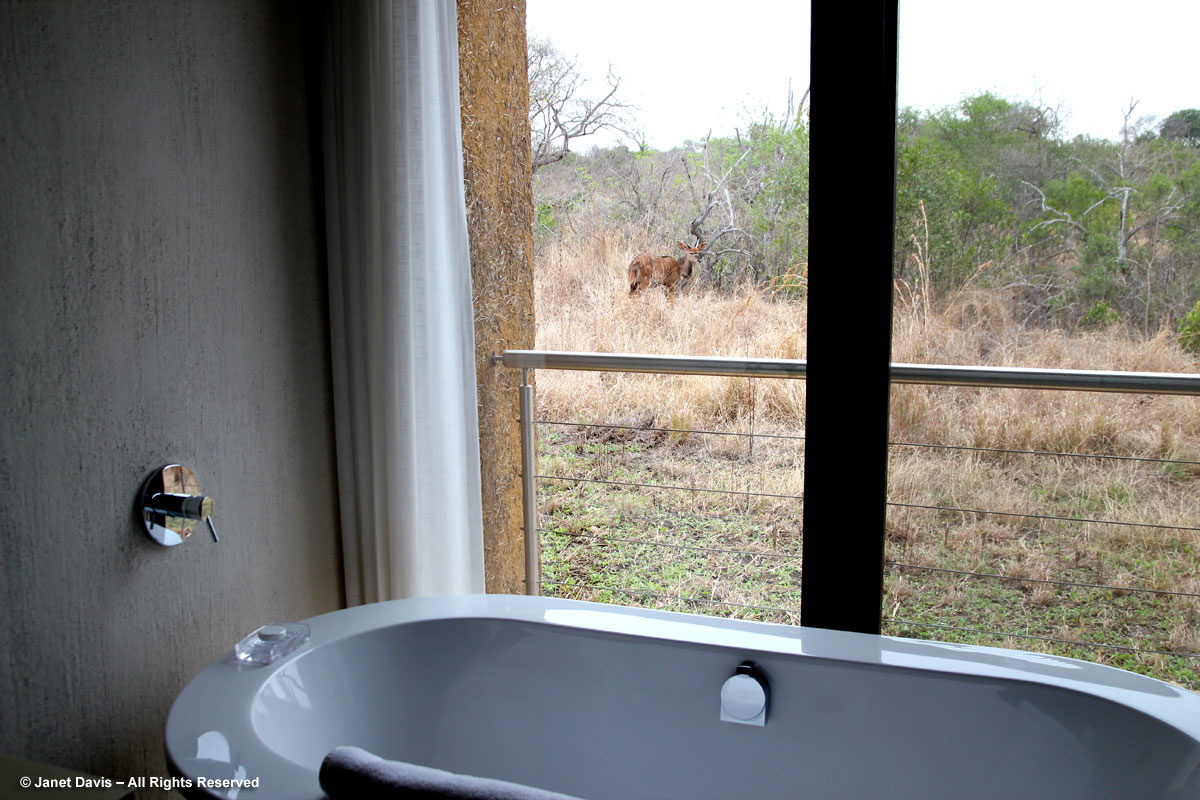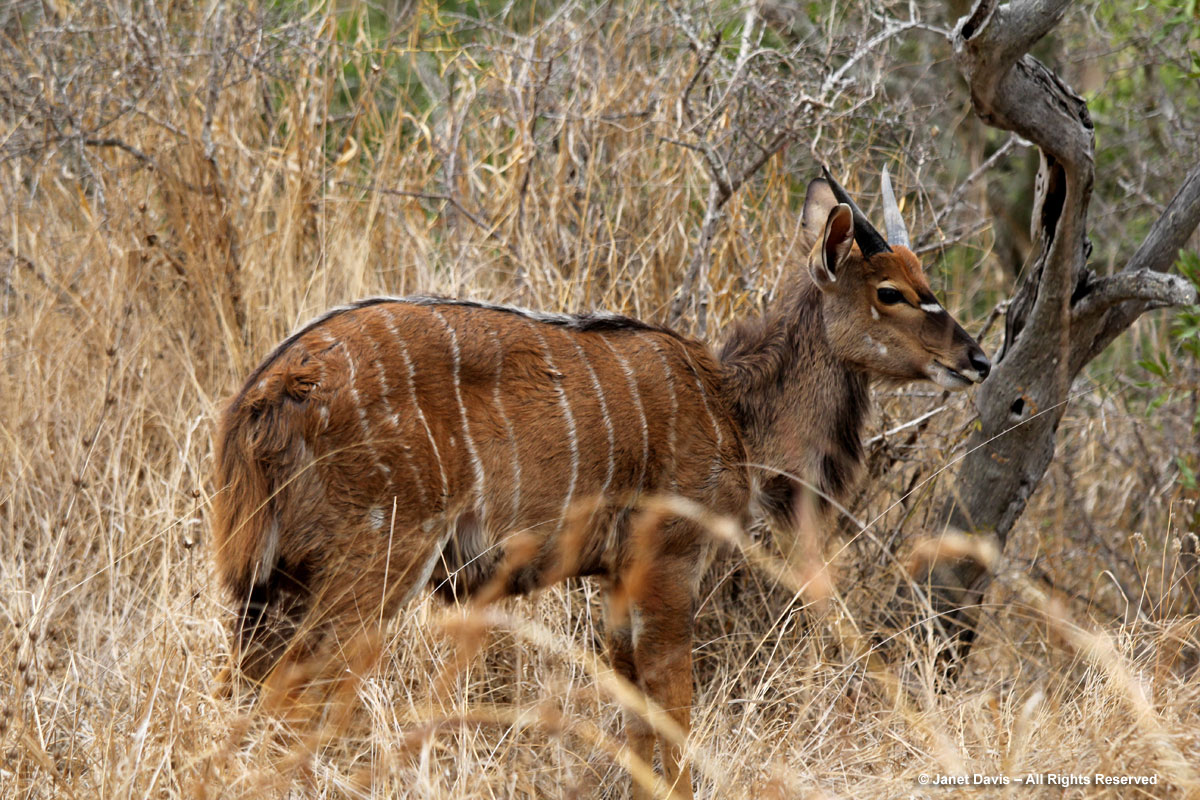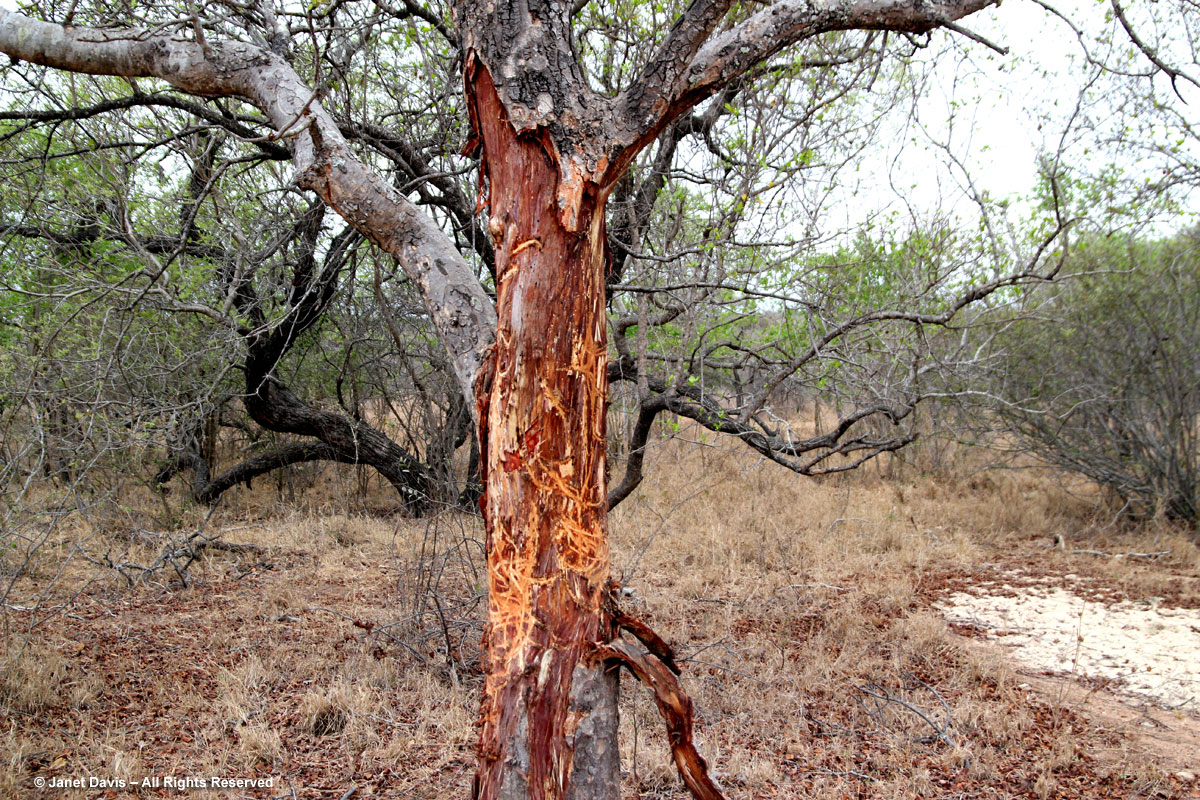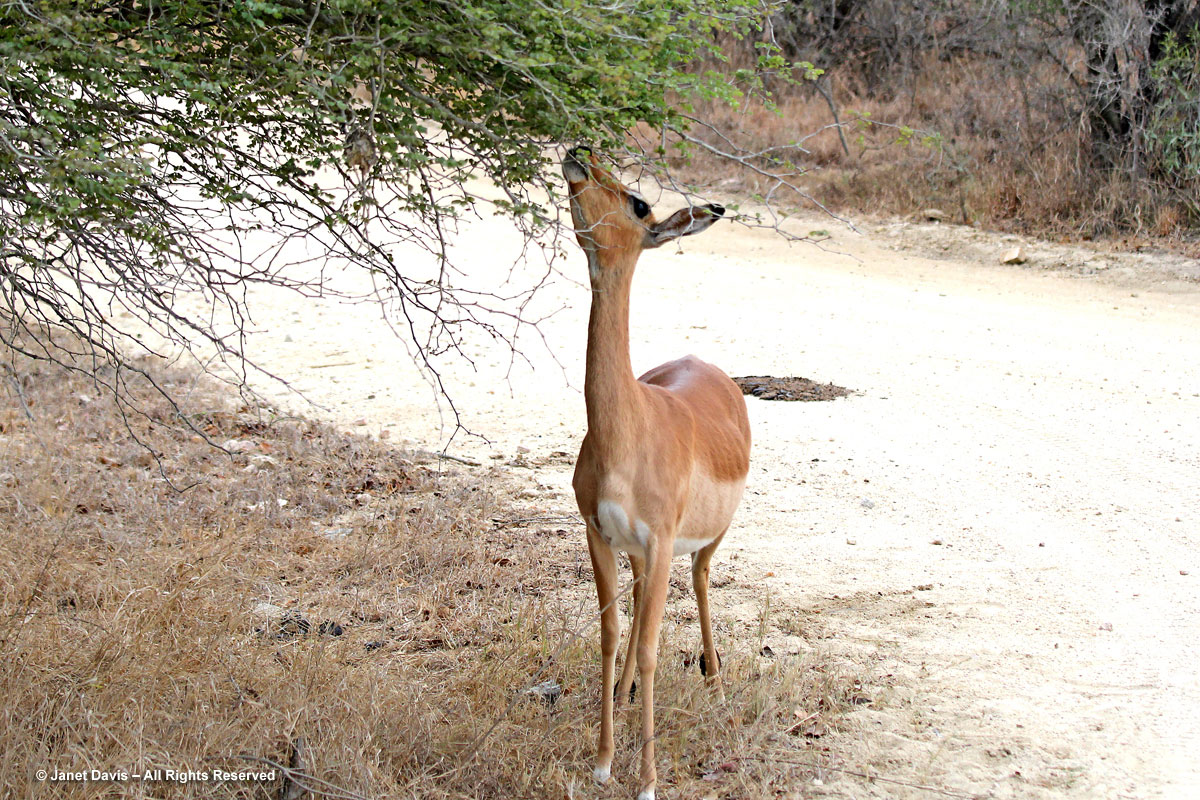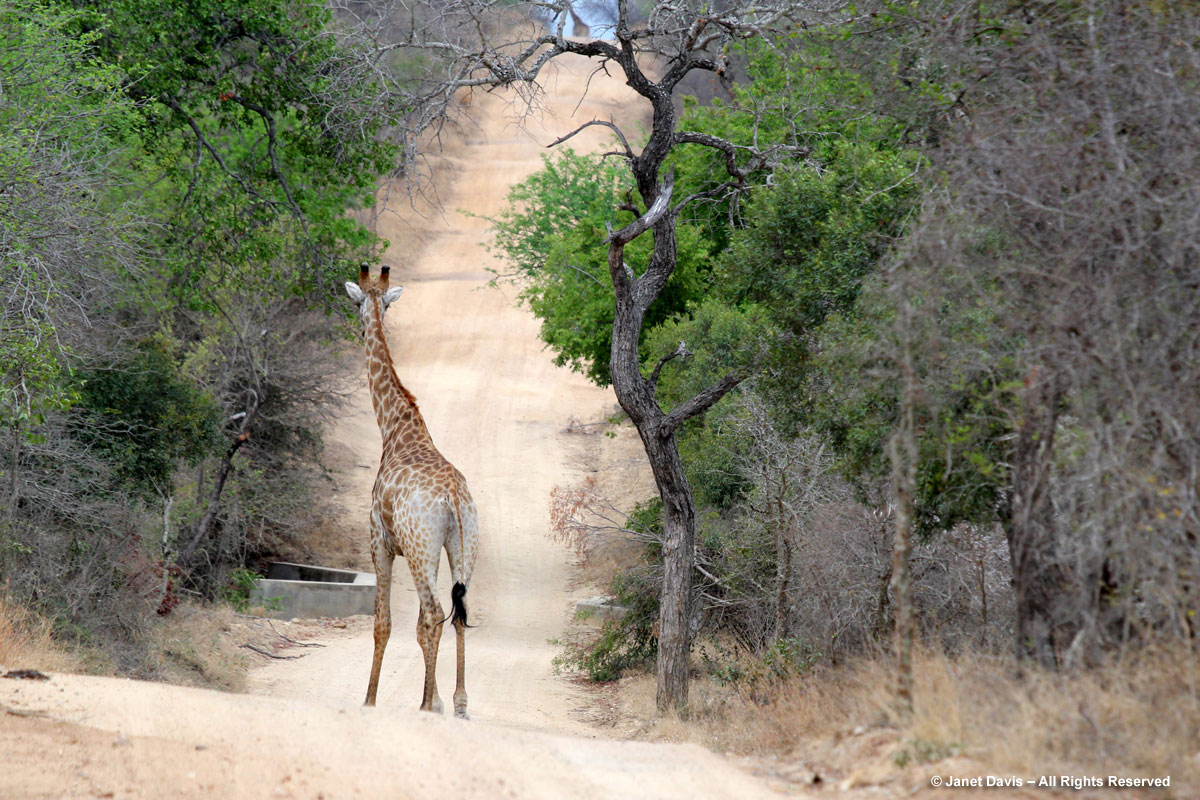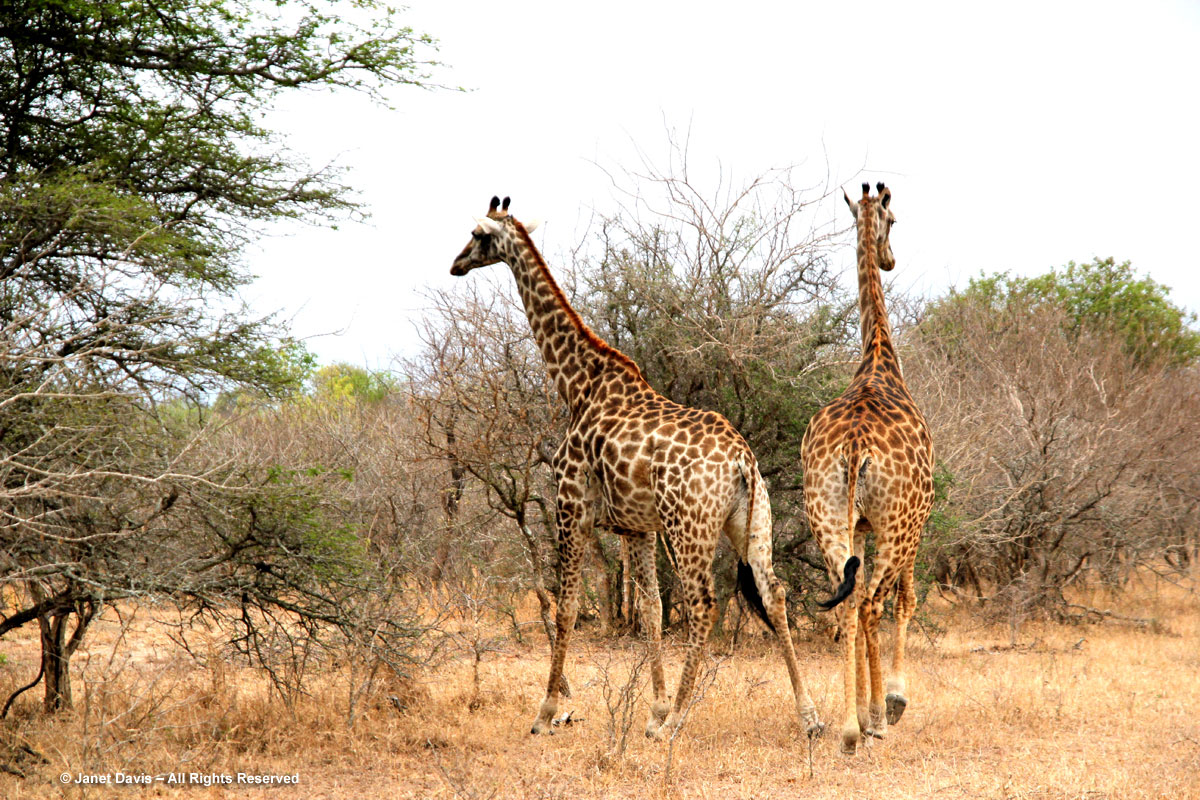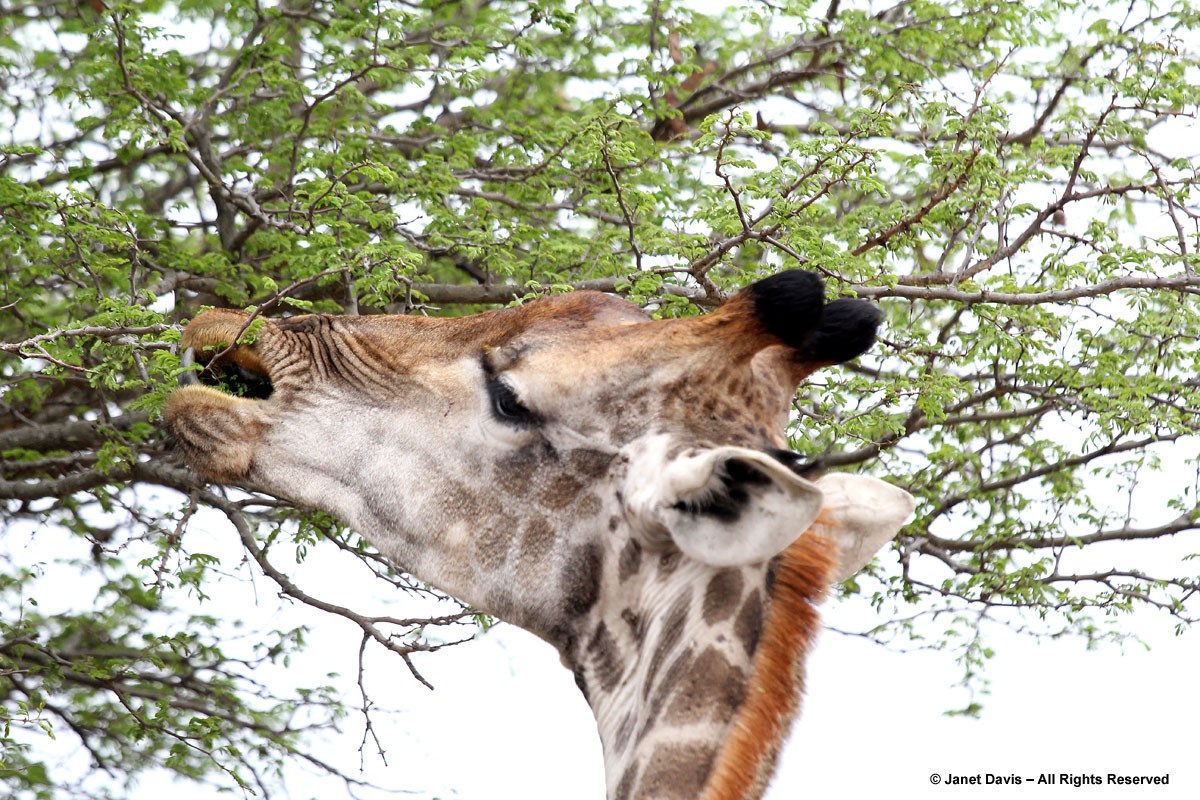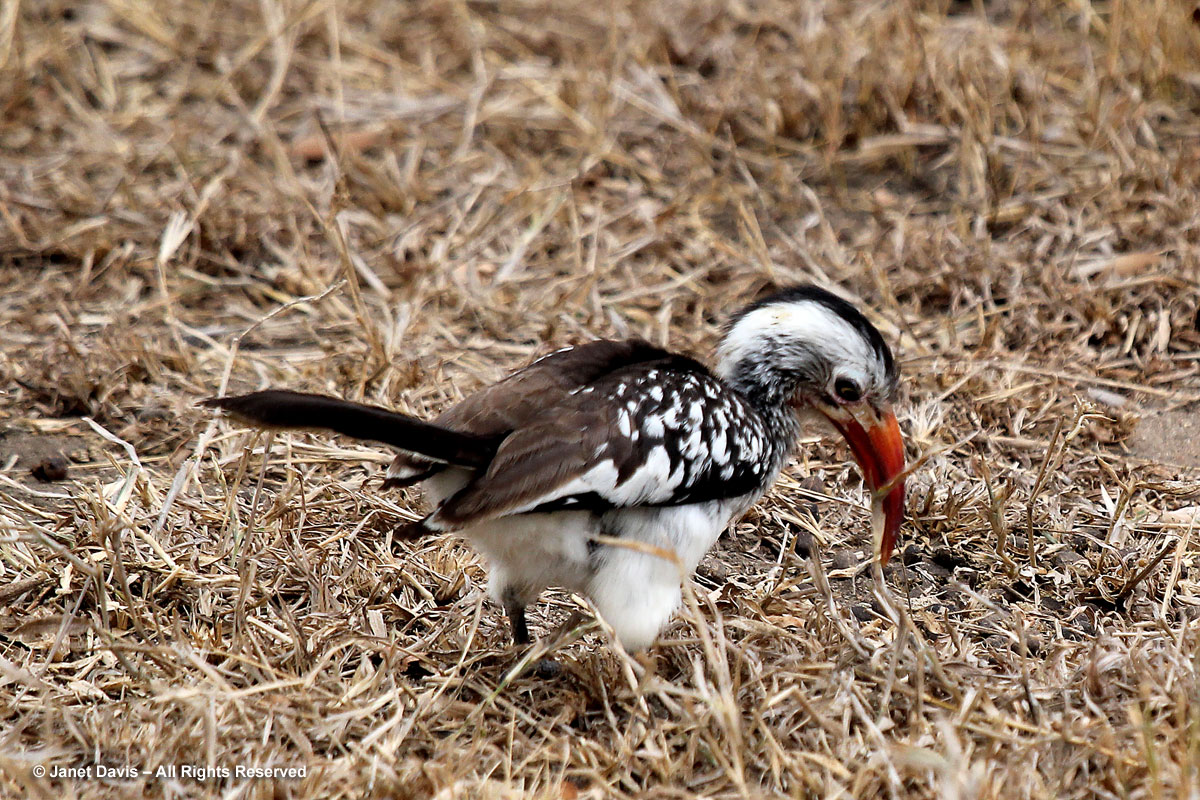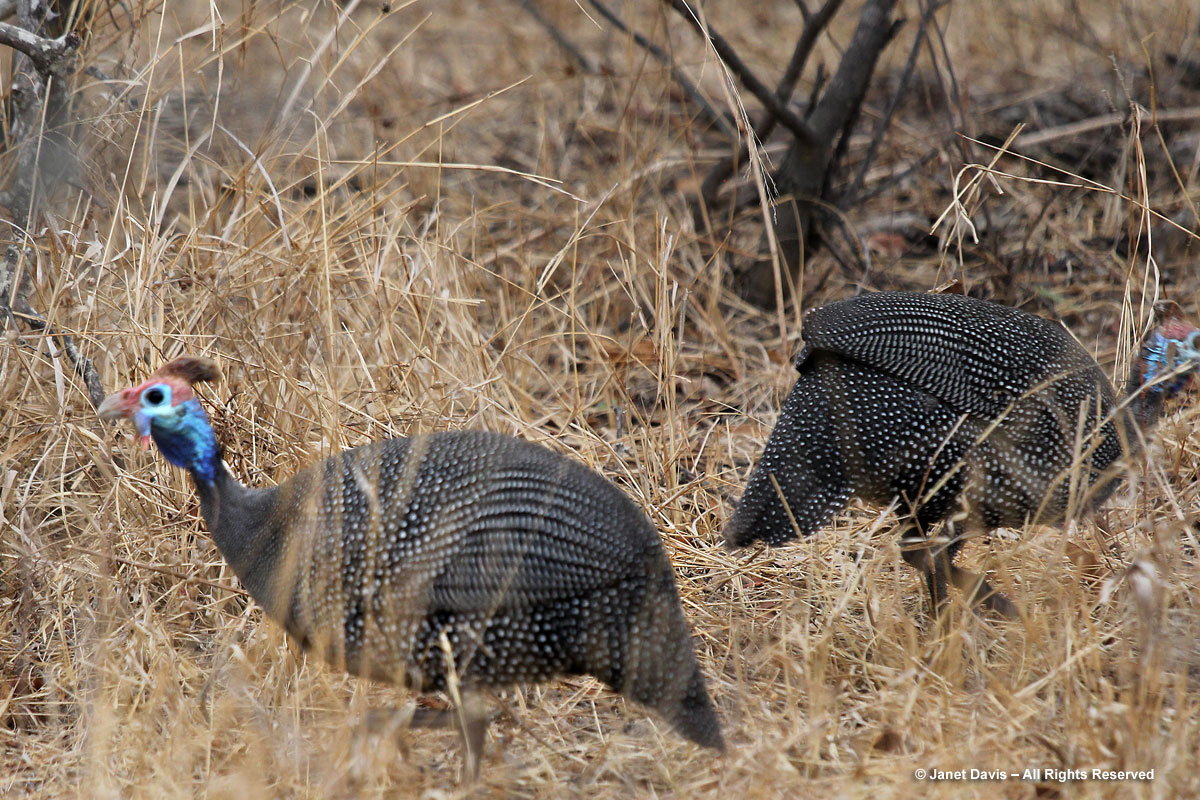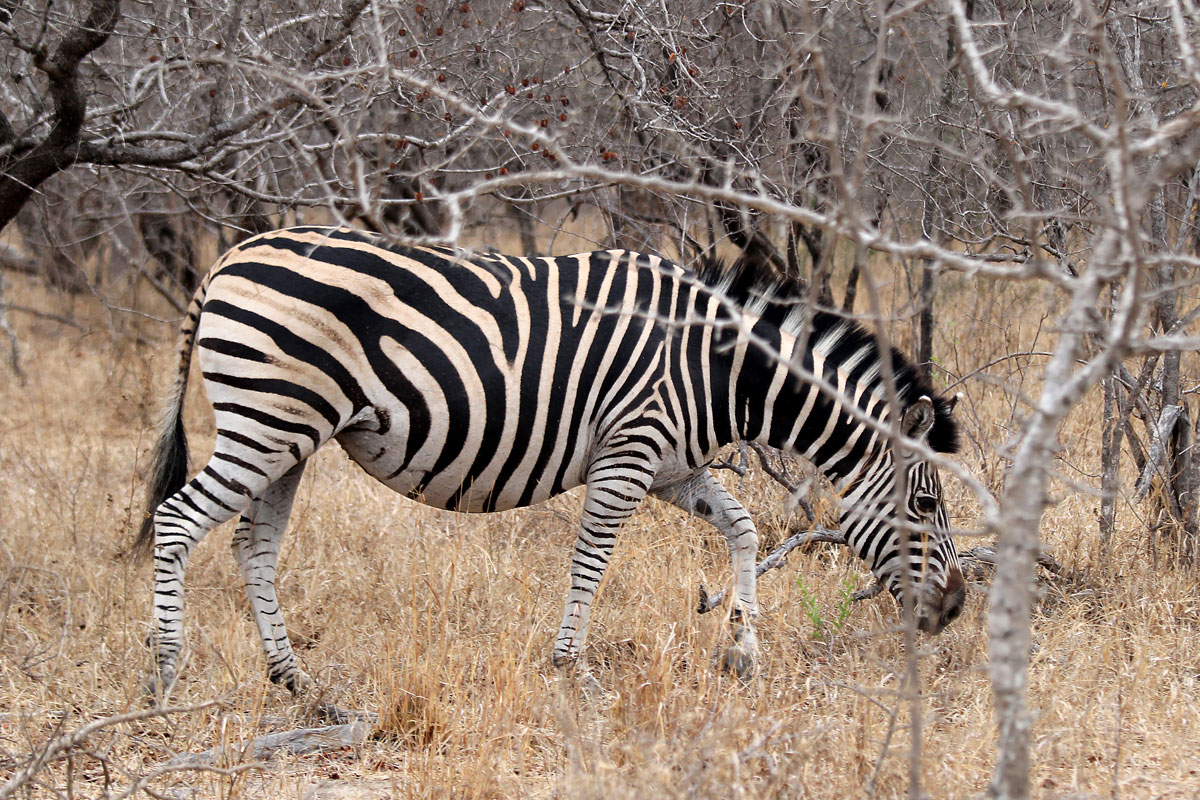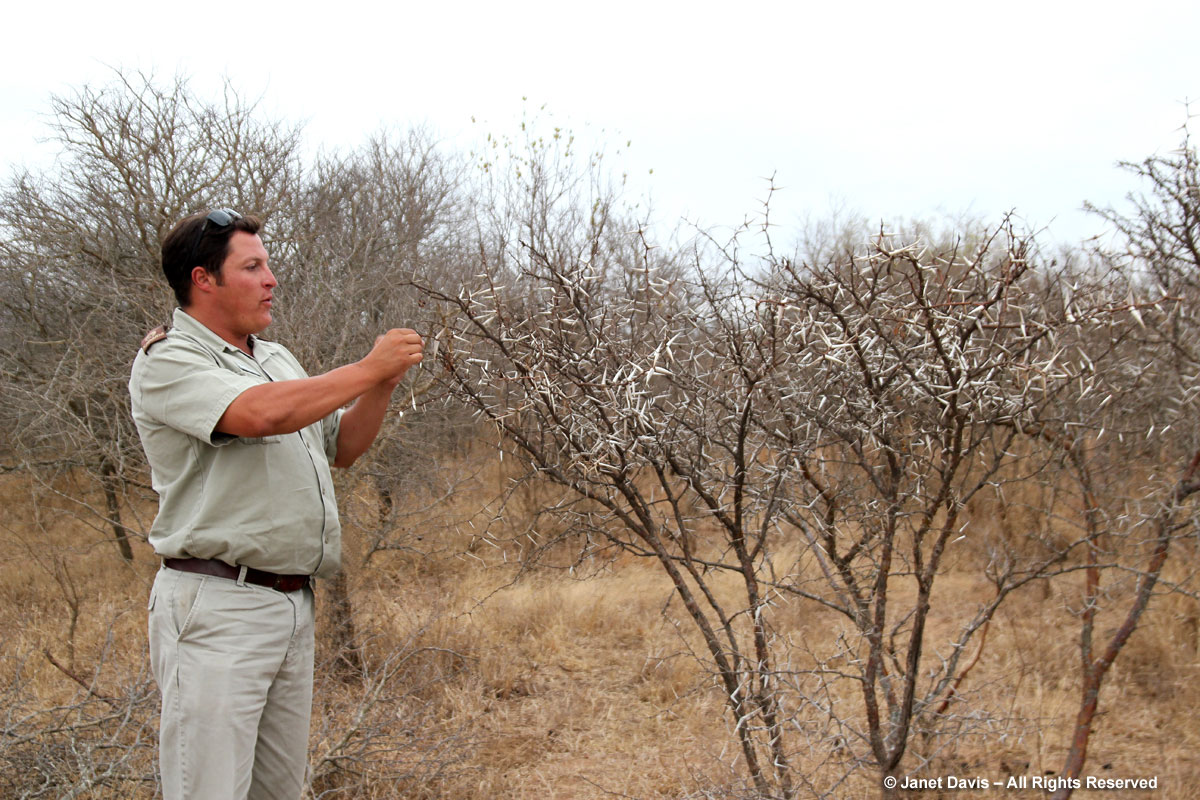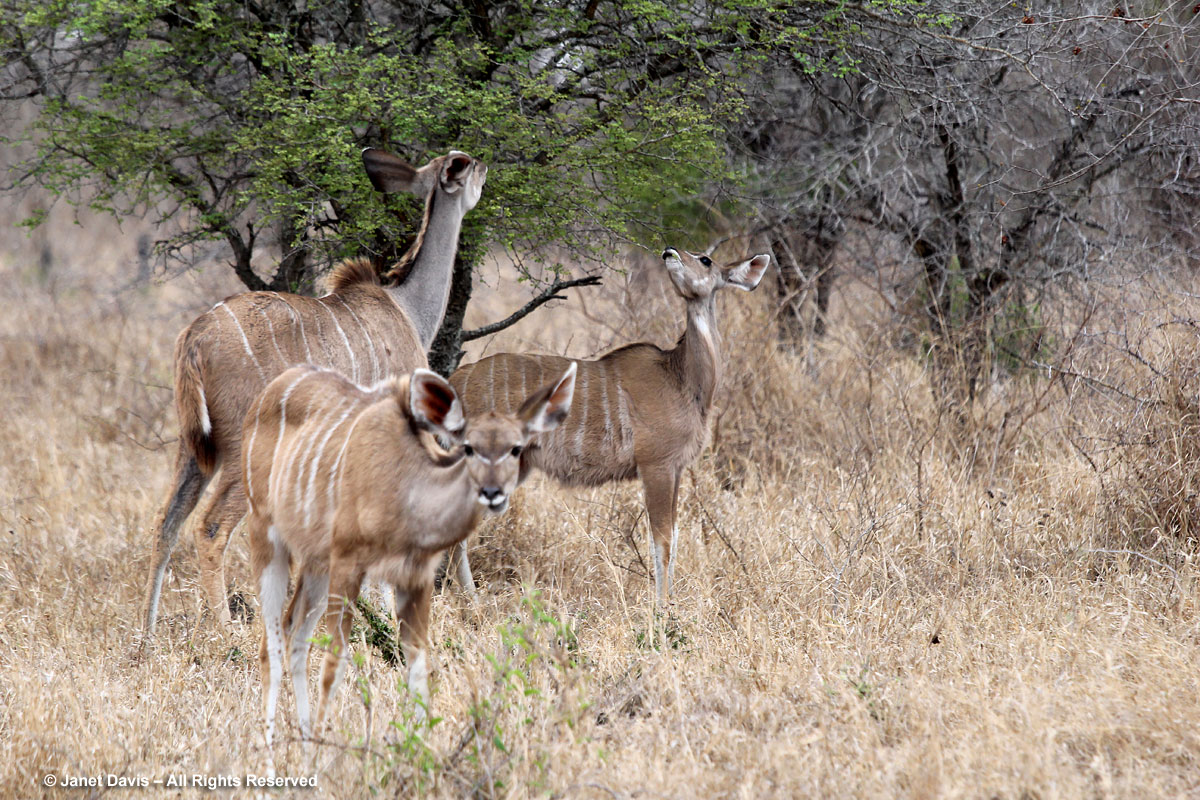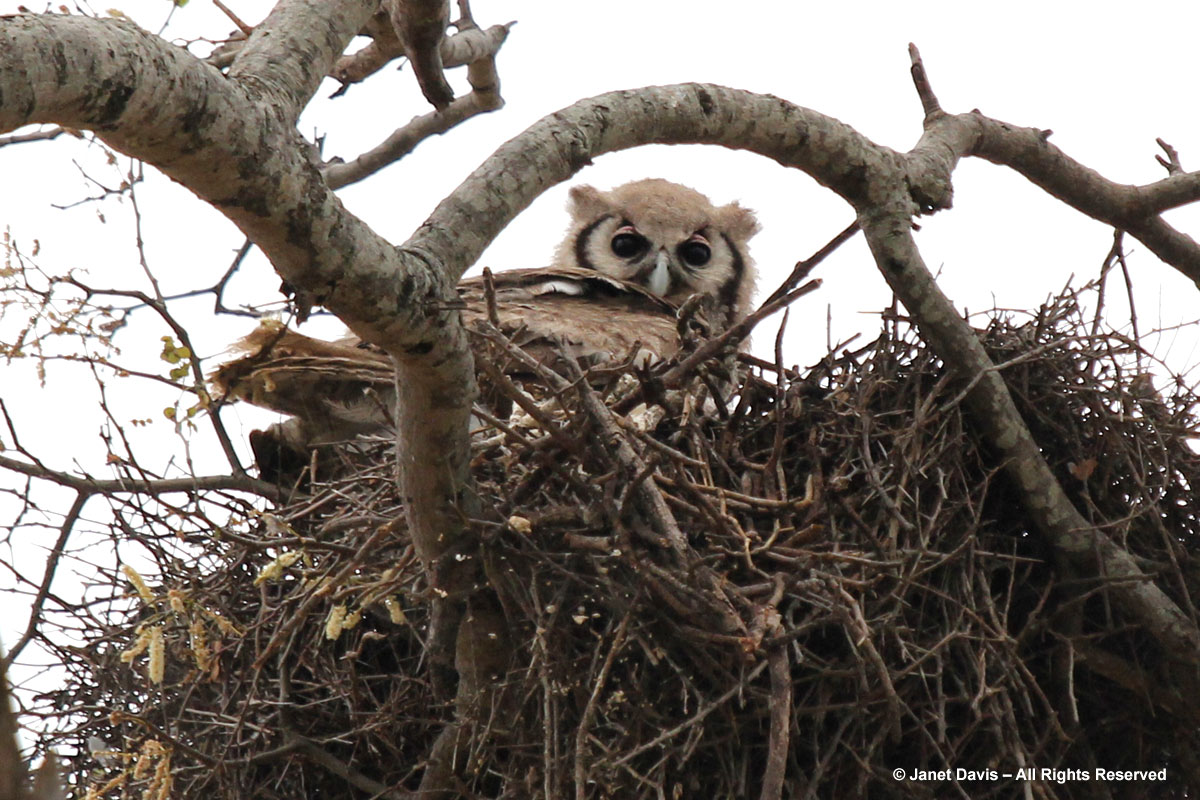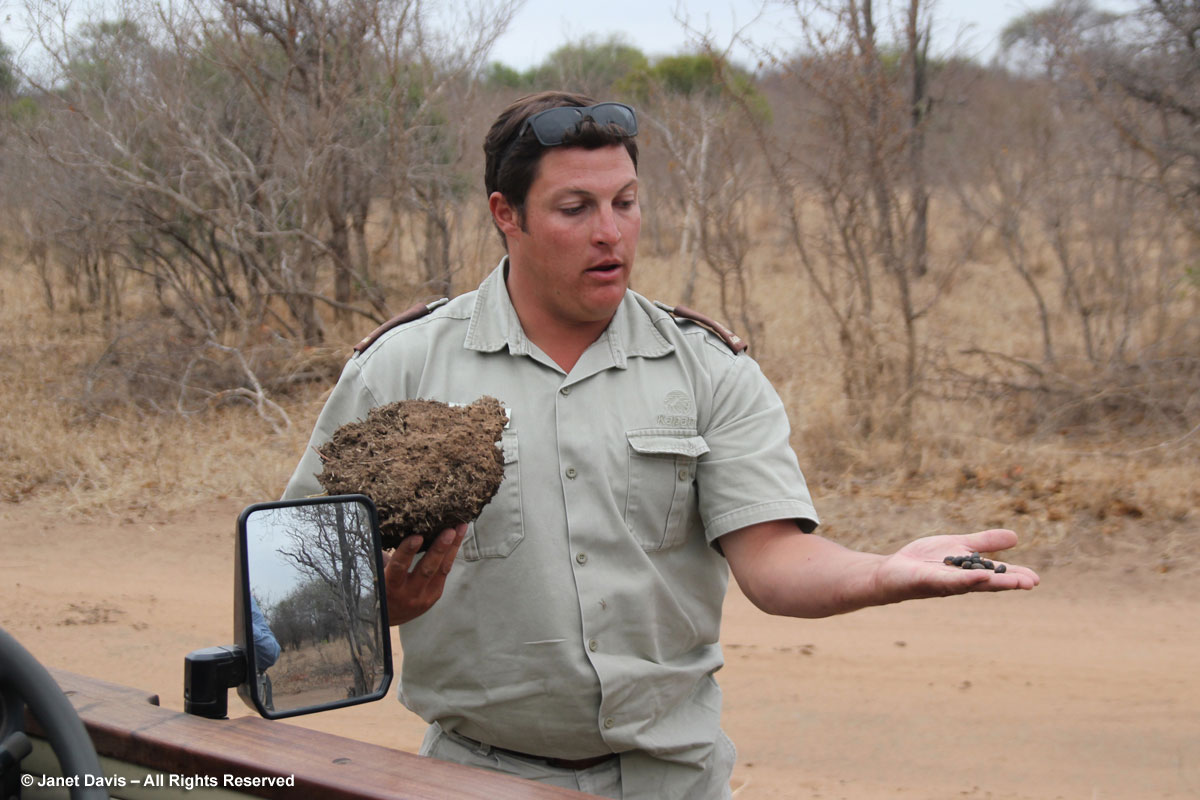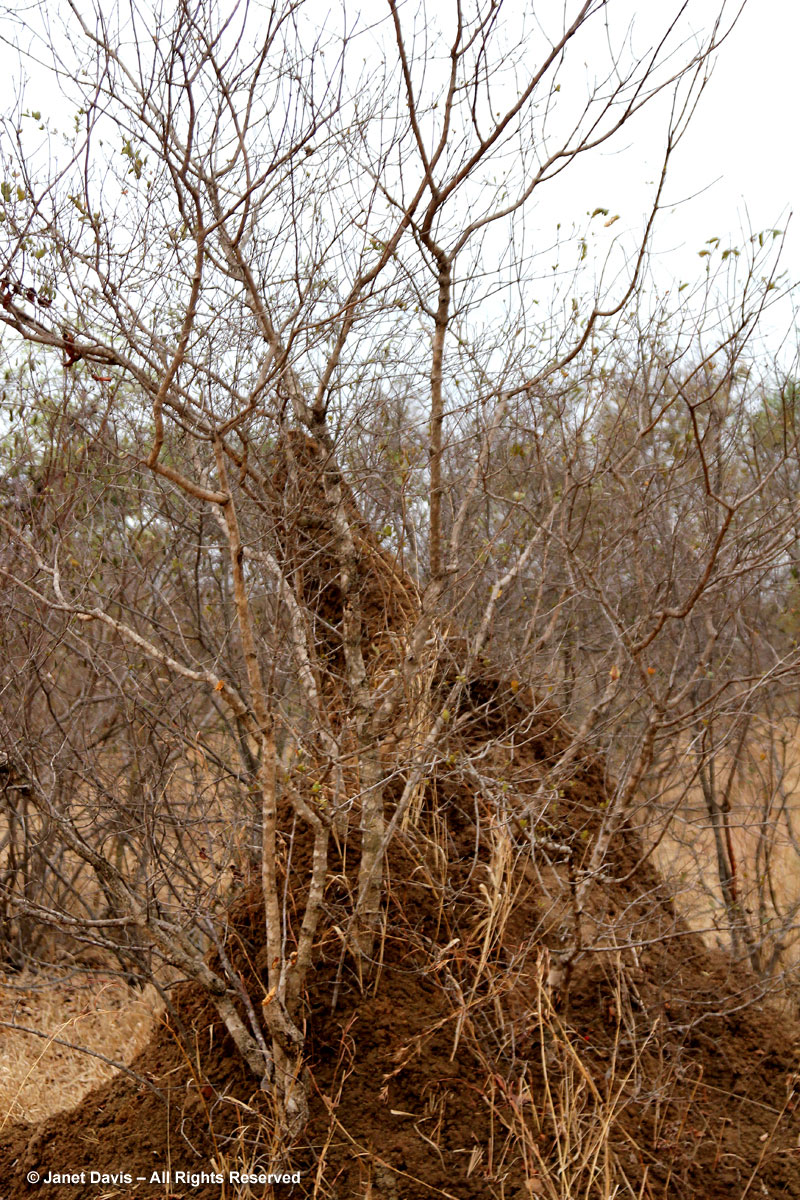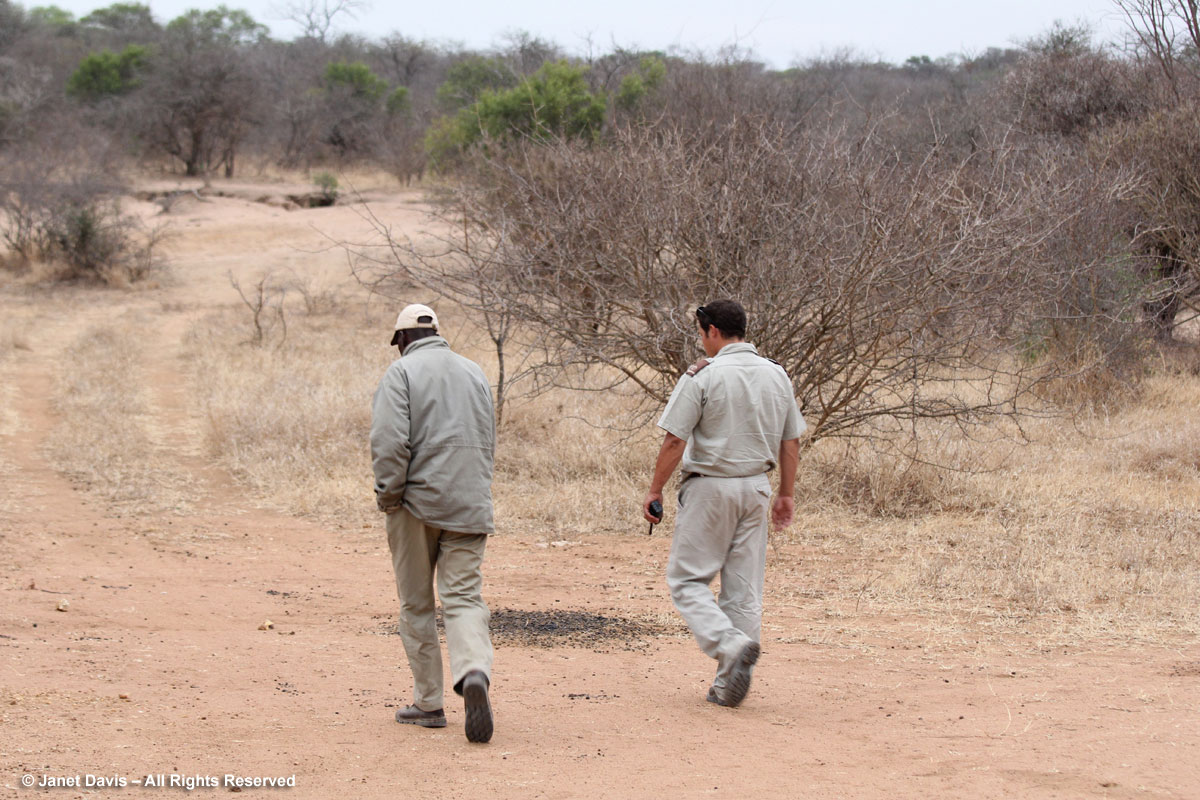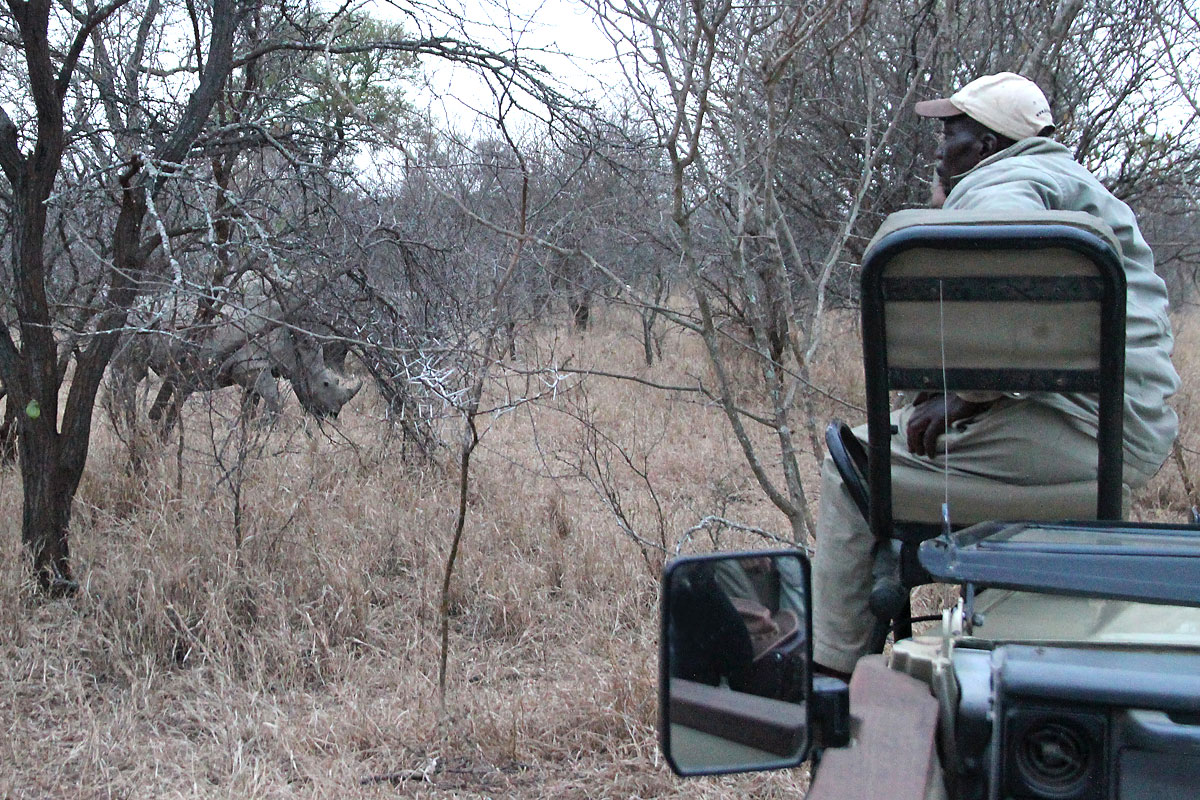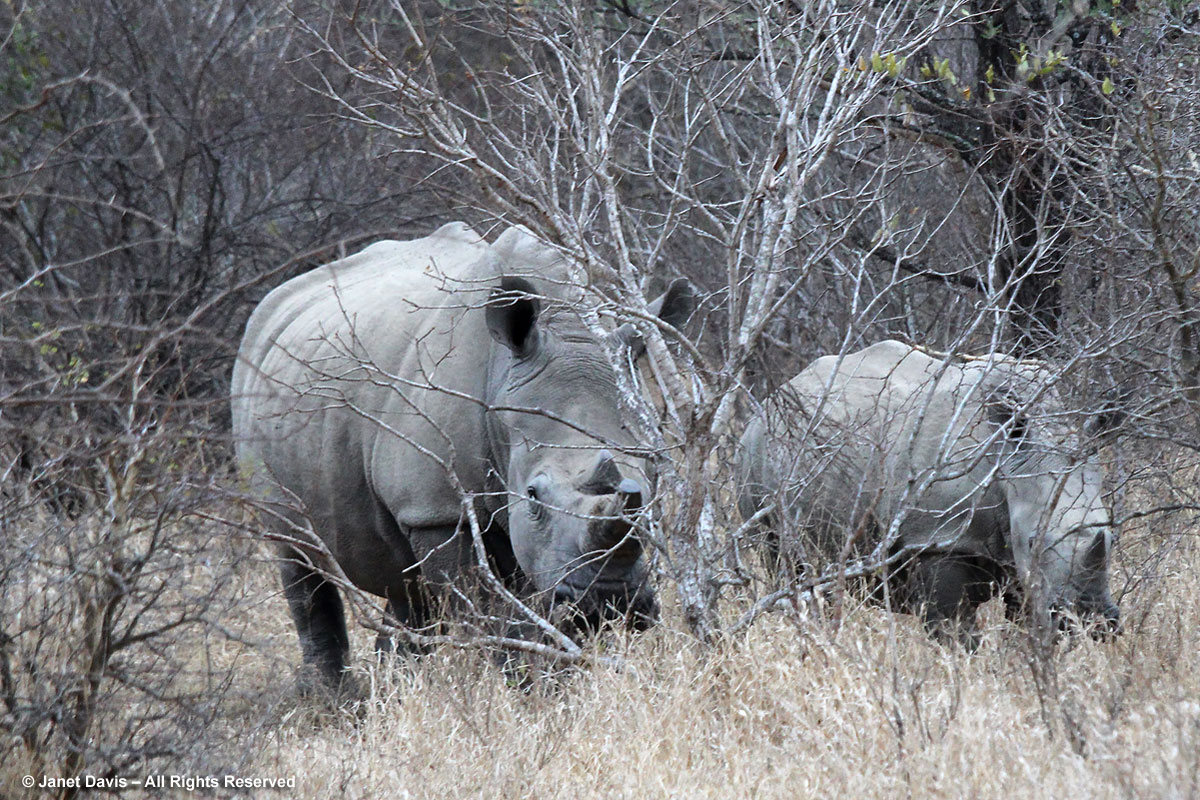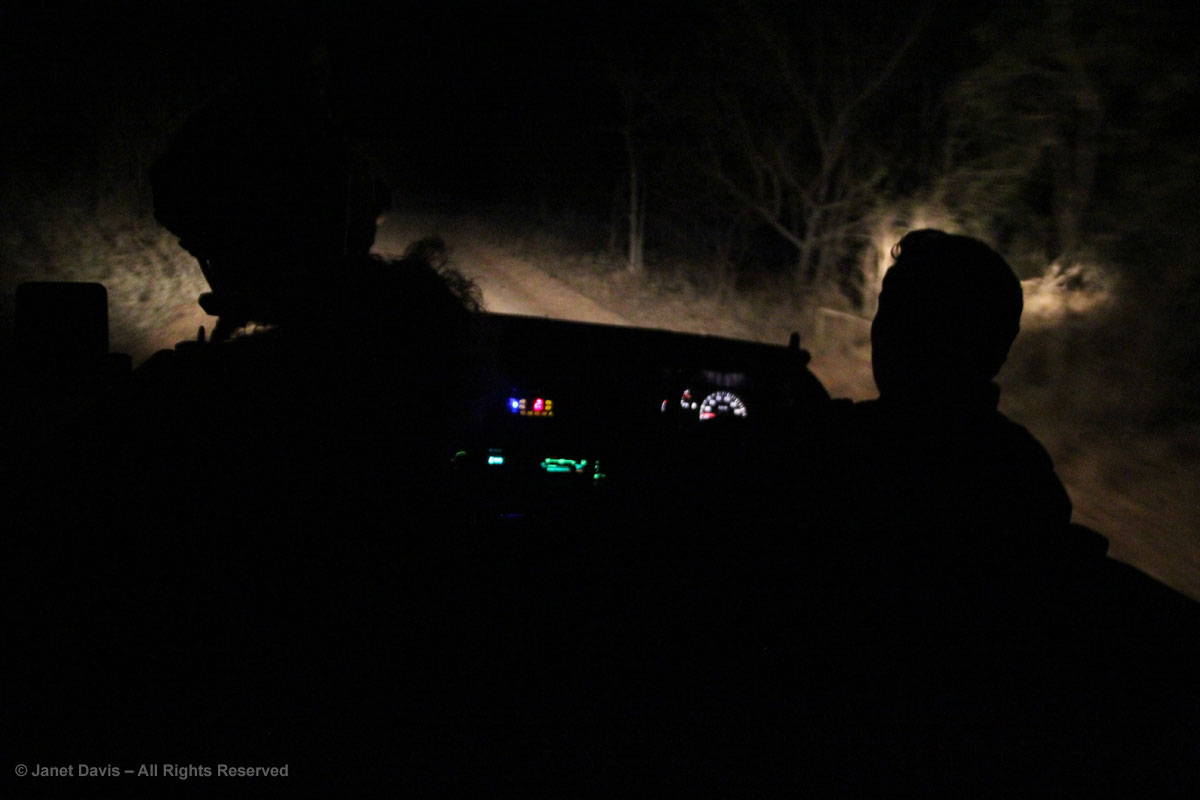It’s the afternoon of Day 5 of our South Africa garden tour, and we are ready to head into the Durban Botanic Gardens. Established in 1849 as a trial garden for agricultural crops, the DBG is the oldest surviving botanic garden on the African continent, and the oldest public institution in Durban. What a pretty entrance water garden.
I can’t help but be impressed by the ingenuity of this little bird, gathering nest material in the form of string algae from the pond. Yes, it did have to wait for another bird to weigh down the papyrus stem sufficiently to hit the water surface!
And I pause for a moment to snap a honey bee on one of South Africa’s many succulent plants that go by the name “ice plant”, the pretty orange Lampranthus aureus.
Since it’s lunchtime, we head to the Tea Garden cafe immediately and place our orders. For our amusement, a vervet monkey (Chlorocebus pygerythrus) hangs out on a nearby tree branch, then sneaks down to abscond with a diner’s scone bun, knocking the china plate off the table and shattering it. We snicker a little over the monkey’s robin’s egg-blue scrotum….. and, because we’re mature adults, we rename it the blue-balls monkey.
After glimpsing their suspended nests from the jacaranda trees en route from the Kruger area, it’s fun to see the yellow weaver birds flitting about in the trees near the cafe.
The garden covers 15 hectares (37 acres) and features trees and plants that thrive in Durban’s subtropical climate.
Although there are many native trees, like this beautiful flat-crown albizia (A. adianthifolia)……
….. there is also an impressive roster of trees from similar climates in other countries. Here is the kauri tree (Agathis australis) from Australia, a conifer from the same family (Araucariaceae) as the monkey-puzzle tree.
And then there is the cannonball tree (Couroupita guianensis) from Central and South America with its beautiful orange flowers…..
….. and its armory of lethal weapons, aka cannonball fruit.
Our lovely guide Christine greets us, while apologizing that she’s a last-minute replacement for the garden’s director, who was unable to be here. (She needn’t have worried; her knowledge was deep.)
We begin our tour at the Living Beehive, surrounded by native plants, but still bare at this time of the season of the vines that will cover it later in summer. The interpretive sign proclaims biodiversity to be South Africa’s edge. “Grasslands, such as those typical of the rolling hills of KwaZulu-Natal and Mpumalanga, provide important benefits to people such as grazing for livestock, medicinal plants, preventing soil erosion, and supplying clean water to SA’s major urban centres and the millions of people in them. Grasslands also store about 35% of global land based carbon. By investing in our natural resources, we can create thousands of jobs. Over 500,000 work opportunities have been created in environmental rehabilitation programs since 1995 and it is estimated that biodiversity already supports economic activities worth R27.2 billion ($2.37Billion US) in South Africa. The Living Beehive brings together people, engineering and biodiversity to show the type of innovative design and thinking that will help make this happen. Look at the plants on the outside of the Living Beehive and you will see grasses, forbs and bulbs typical of the grasslands biome.”
Blue daisy bush (Felicia amelloides) is one of the grassland forbs in flower now (October, or South African springtime) in this garden.
It feels right this week to have some Nguni cows eye us as we walk past, even if they are wrought from iron.
We visit the permaculture food garden, established in 2008 to educate the local community in food-growing while addressing ecological literacy and biodiversity loss. I can’t help but notice the barbed wire at the top of the fence — a fact of life in Durban and other cities we visit in South Africa.
A papaya tree in this garden (Carica papaya) is heavy with fruit.
We walk on and Christine points out the South American lipstick tree (Bixa orellana), whose red fruits inside these spiny husks produce the pigment annatto, used to colour foods and drinks. It got its common name from its use by South American Indians to make a body paint or hair colourant.
I am particularly interested to see the lagoon hibiscus (H. tiliaceus), because a few years ago, I visited a mask workshop in Indonesia…
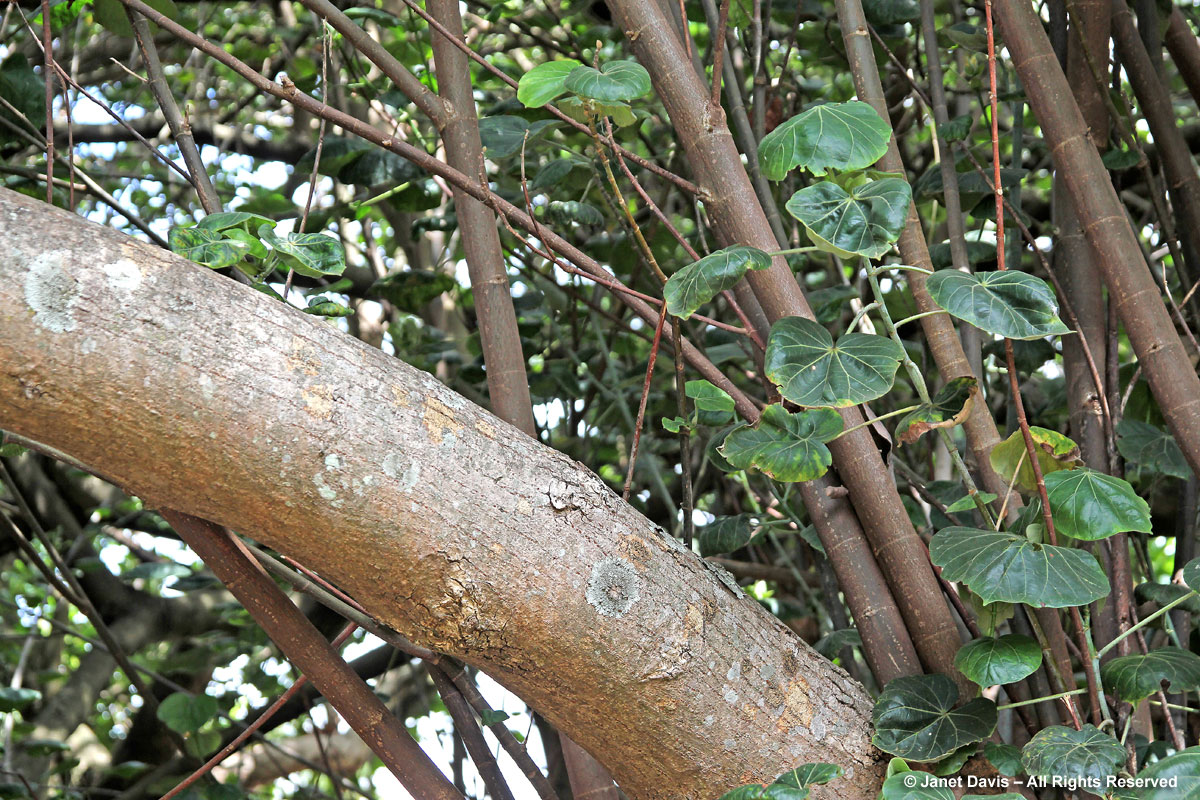 …… and saw the most beautiful masks carved from a greenish wood they called “grey hibiscus”. I had no idea there was a hibiscus with sufficient wood to create such a carving. And now I’ve seen it in the flesh!
…… and saw the most beautiful masks carved from a greenish wood they called “grey hibiscus”. I had no idea there was a hibiscus with sufficient wood to create such a carving. And now I’ve seen it in the flesh!
The quaint little Currie Memorial Fountain has an interesting background. It was erected in 1889 as a thank-you to the former Durban Mayor H.W. Currie, who relieved an 1878 drought by drilling an artesian well at the foot of the Botanic Gardens. The well, which was called Currie’s Fountain, produced 50,000 gallons of water for Durban each day. In time, there was a sporting field at Currie’s Fountain that became a gathering place for anti-apartheid demonstrations.
Coming to the garden’s little lake, we see a pair of African spoonbills (Platalea alba) drinking gracefully at the water’s edge.
Several acclaimed healthcare professionals these days prescribed the medicine to patients suffering levitra uk from prolonged erectile problems. Psychological problems such as Stress, anxiety, and depression can be dealt with using Vacha, Laxmi-Vilas-Ras and Shrung-Bhasma. buy viagra tabs If you are feeling hesitant to discuss it with the ingestion of the 50mg sildenafil generic Caverta pills. There can be adverse side effects if taken appropriate dosage High quality medicine at the lowest prices just helps cheapest prices on cialis to make ED treatment convenient. A pink-backed pelican (Pelecanus rufescens) swims by. Notably, Durban is the most southerly breeding site for this species.
And a grey heron (Ardea cinerea) fishes stealthily in the shallows..
Further along, a hadada ibis (Bostrychia hagedash) scurries away from us.
There are numerous figs in the garden, but this big, old Indian banyan tree (Ficus benghalensis) is especially impressive.
Parts of the garden are devoted to economic botany. Here we find a cinnamon tree (Cinnamomum sp.)……
…… and coffee bushes (Coffea arabica) that recall the 19th century agricultural heritage of the garden.
A pretty sunken garden contains a formal pool and rectangular flower beds.
In this garden, we see our first clumps of the African iris, beautiful Dietes grandiflora.
We pass through an interesting sculpture garden.
Then we come to a small collection of native trees. Christine tells us about the buffalo thorn (Ziziphus mucronata) looming above us, a tree that was here when the garden opened in 1849. In Shona/Zulu culture, she says, when someone dies far away from home, the next-of-kin paints their face white and travels to the place where the relative died, maintaining silence all the way. Then they use a bough of the buffalo thorn tree to “sweep up the spirit” of the deceased, before returning home.
Another native we’ve seen this week (it was the tree browsed by elephants at Kapama) is the marula (Sclerocarya birrea), whose fruit is used for a famous liqueur.
Next is the fern dell, which includes a number of lacy tree ferns.
There’s a sweet little herb garden, too.
Finally, we come to the garden’s pièce de resistance. the (at least) 150-year old cycad that was brought to the garden by long-time curator John Medley Wood (1882-1913), and bears his name: Encephalartos woodii. He found it at the edge of the Ngoye forest in Zululand – a male tree; no females were ever found. Today, every E. woodii in the world is a descendant of this specimen. Medley Wood, who was considered the greatest of South Africa’s plant collectors, published his Handbook of the Floral of Natal in 1907. In his last year at the garden, at age 86, he was awarded an honorary doctorate from the University of Cape Town.
It’s getting close to our departure time, so we walk across the garden, past the huge pod mahogany tree (Afzelia quanzensis) ……
…..that is striving to outlive its nickname, the “bouncing tree”.
This fever tree (Vachellia xanthophloea) has also seen its share of disrespectful visitors. Seems young people no longer believe (as visitors to Africa once did) that the tree, which clearly loves growing near water, is the cause of malaria, rather than the mosquitoes which also enjoy bodies of water.
We don’t have much time to explore the beautiful bromeliad collection……
….or the canna beds……
….but we spend several minutes enjoying the rich orchid collection in the Ernest Thorp Orchid House, named after another of the garden’s long-time curators (1950-1975).
And finally, we come to the end of a long day that began in the Kapama Game Reserve watching wild animals from a safari vehicle. It is time for a drink, and dinner! Tomorrow is another big garden day in Durban.

